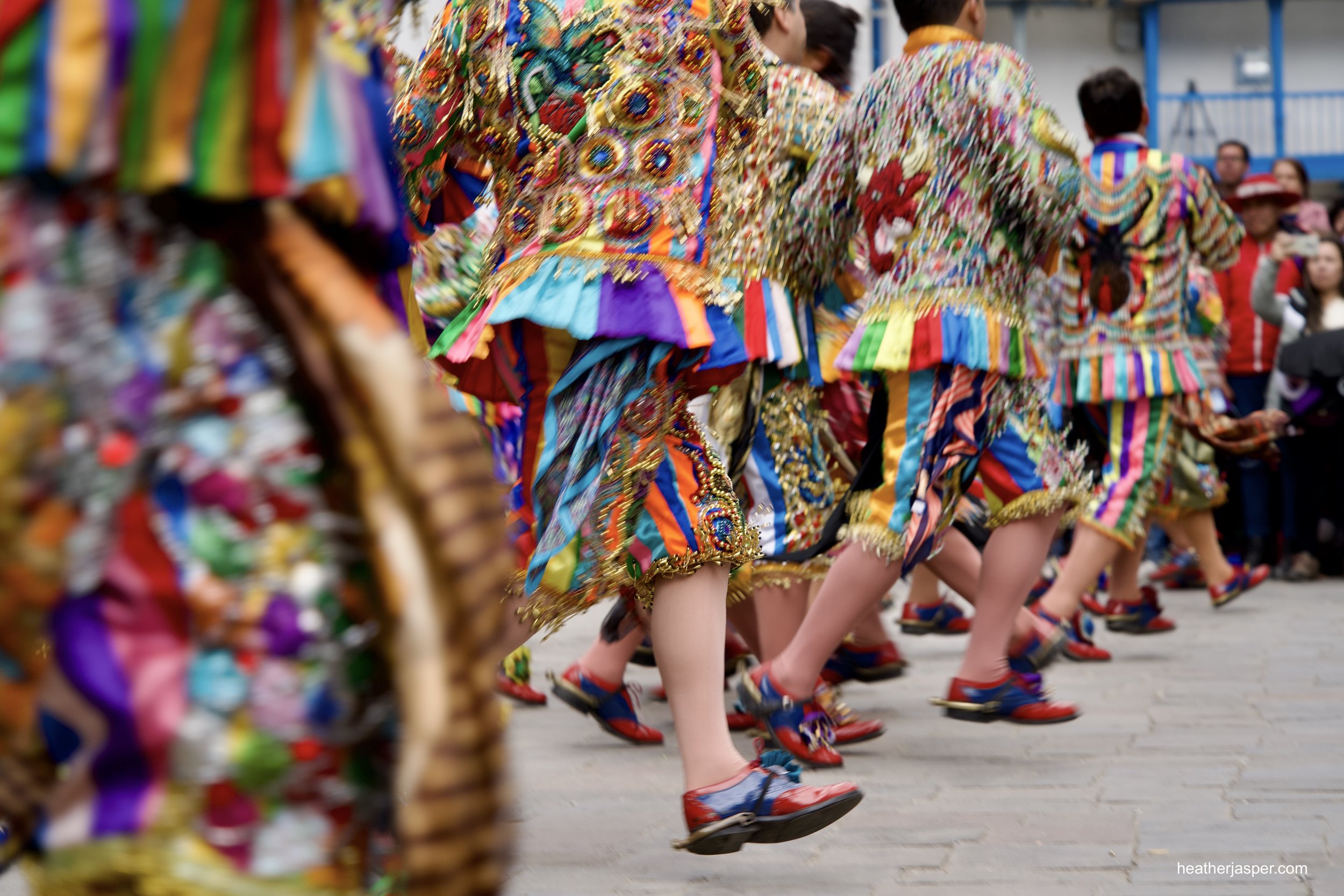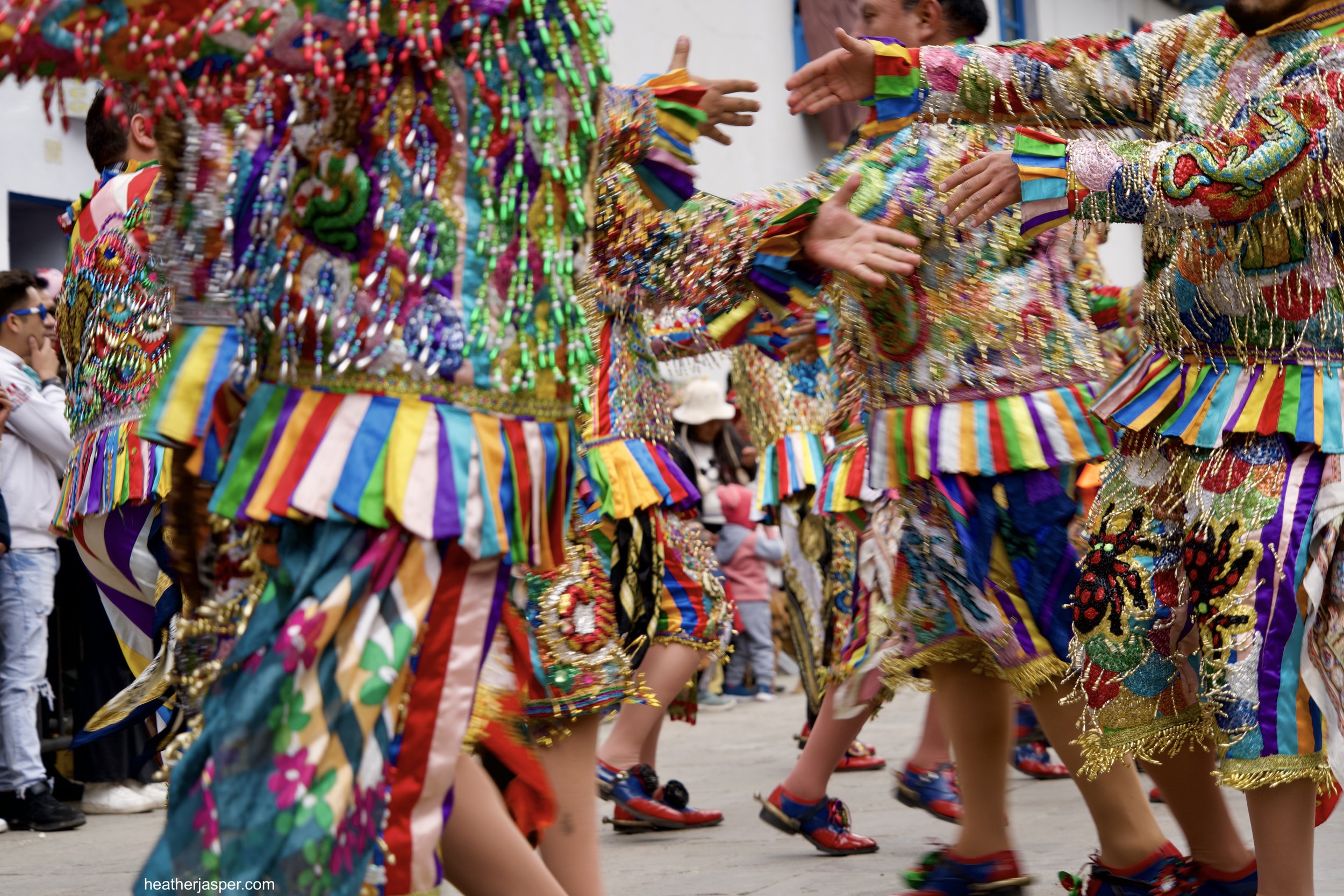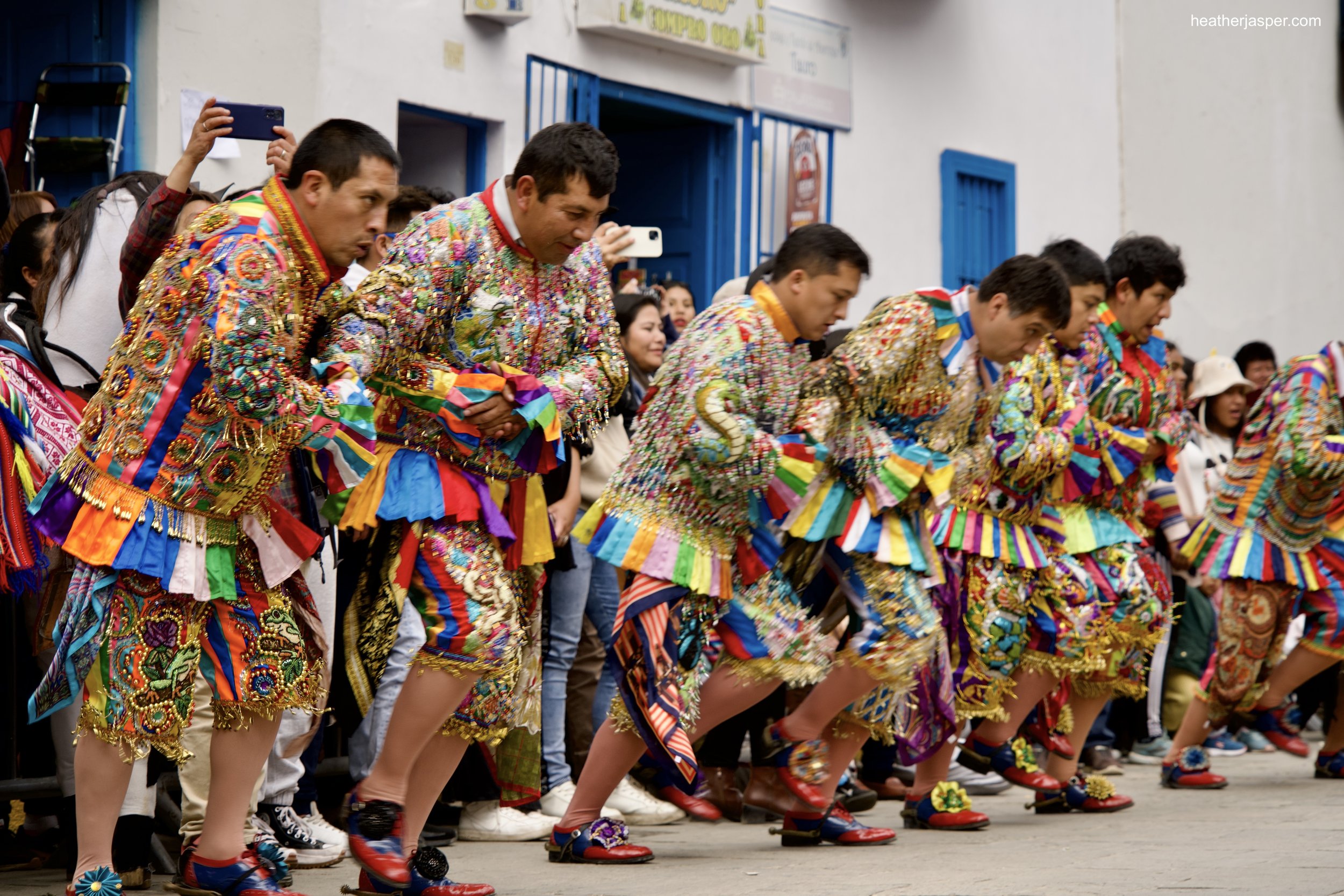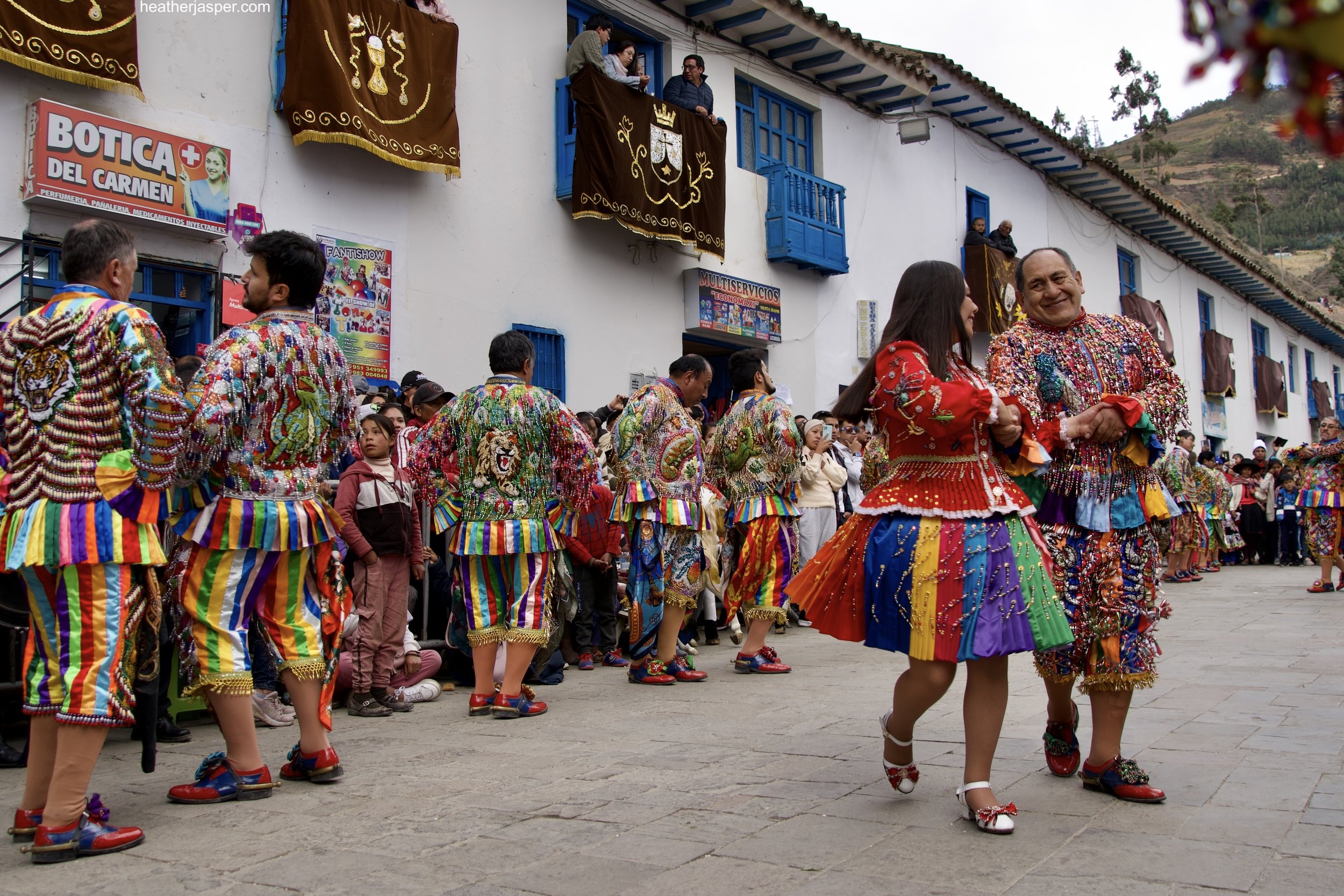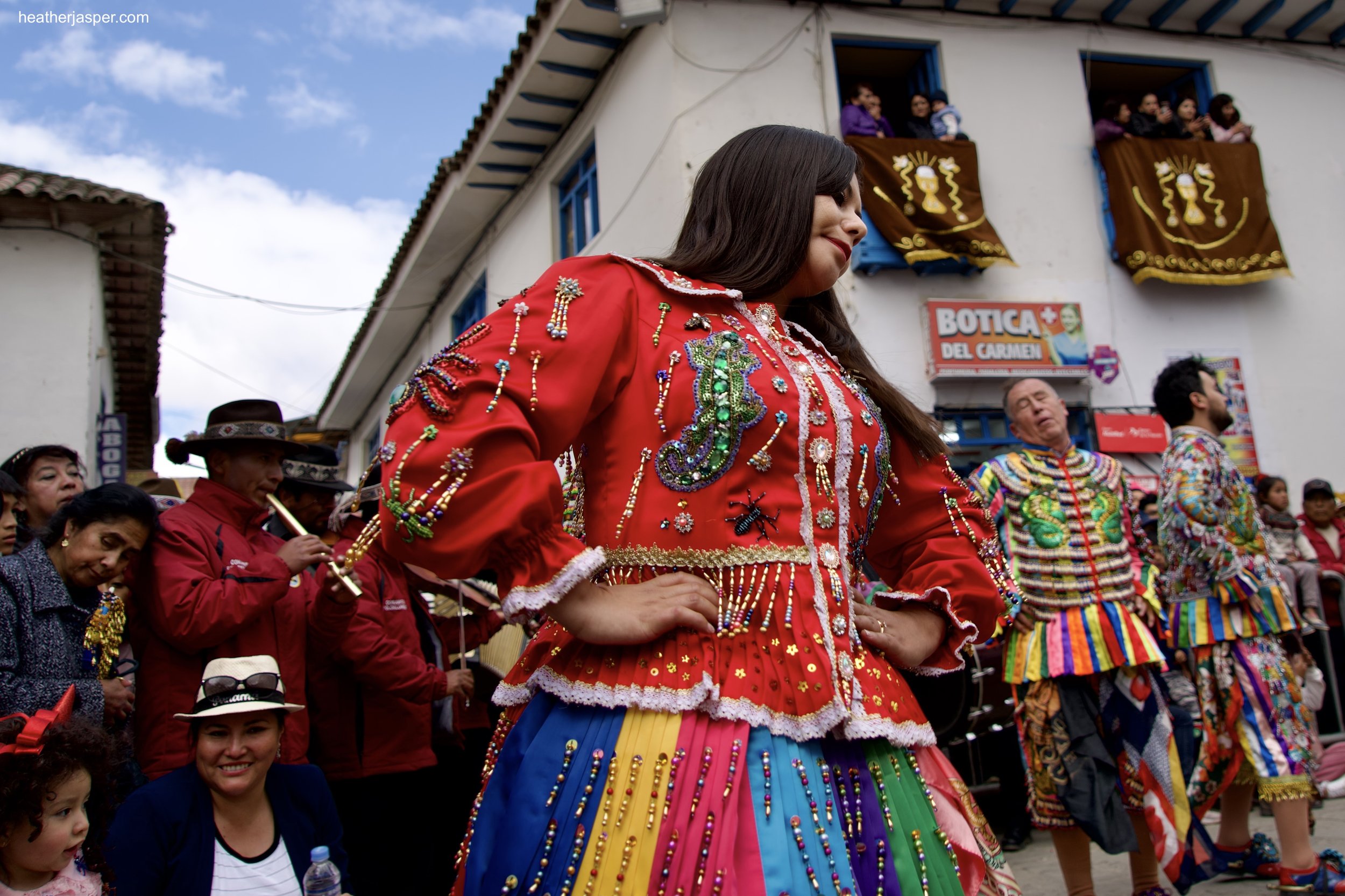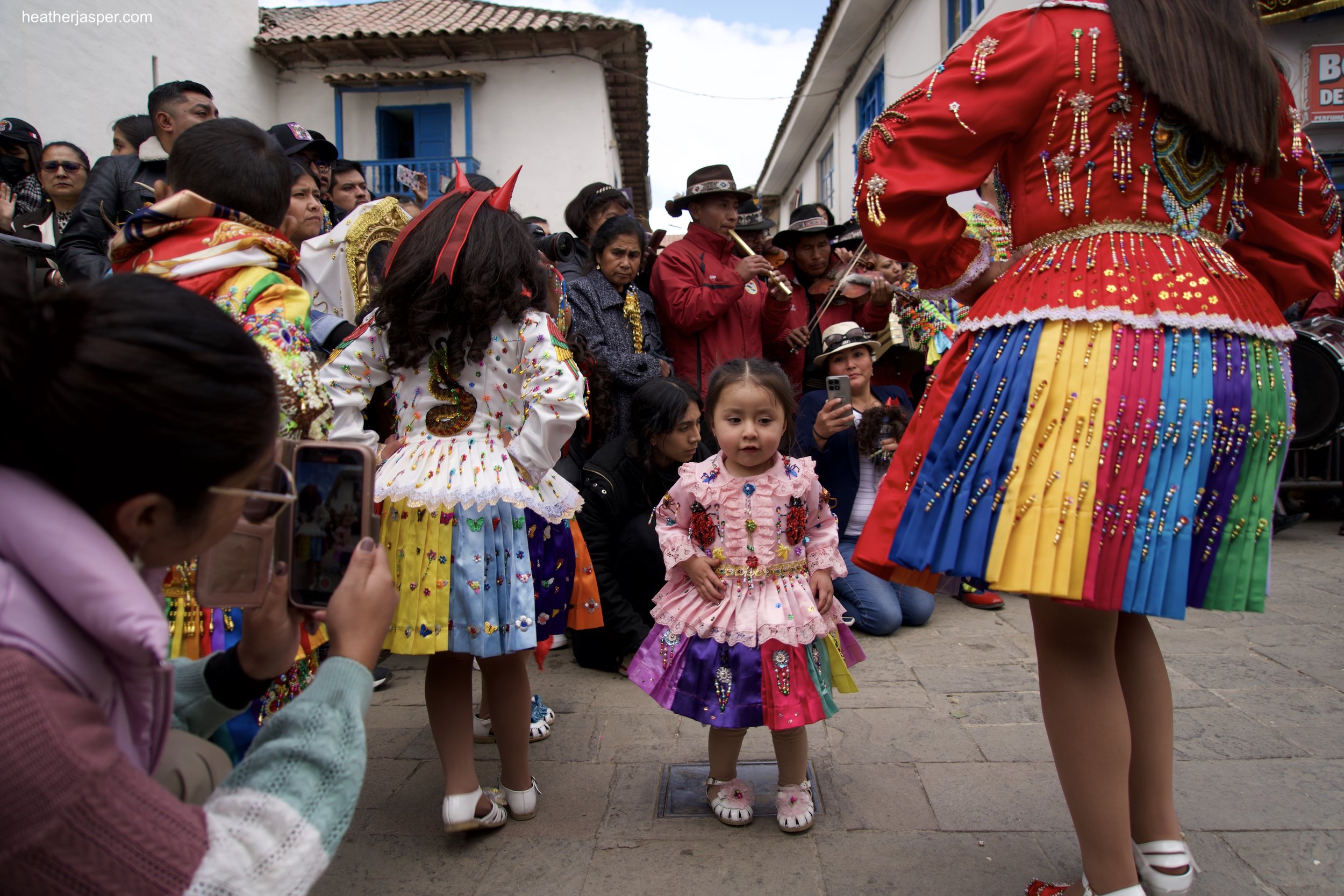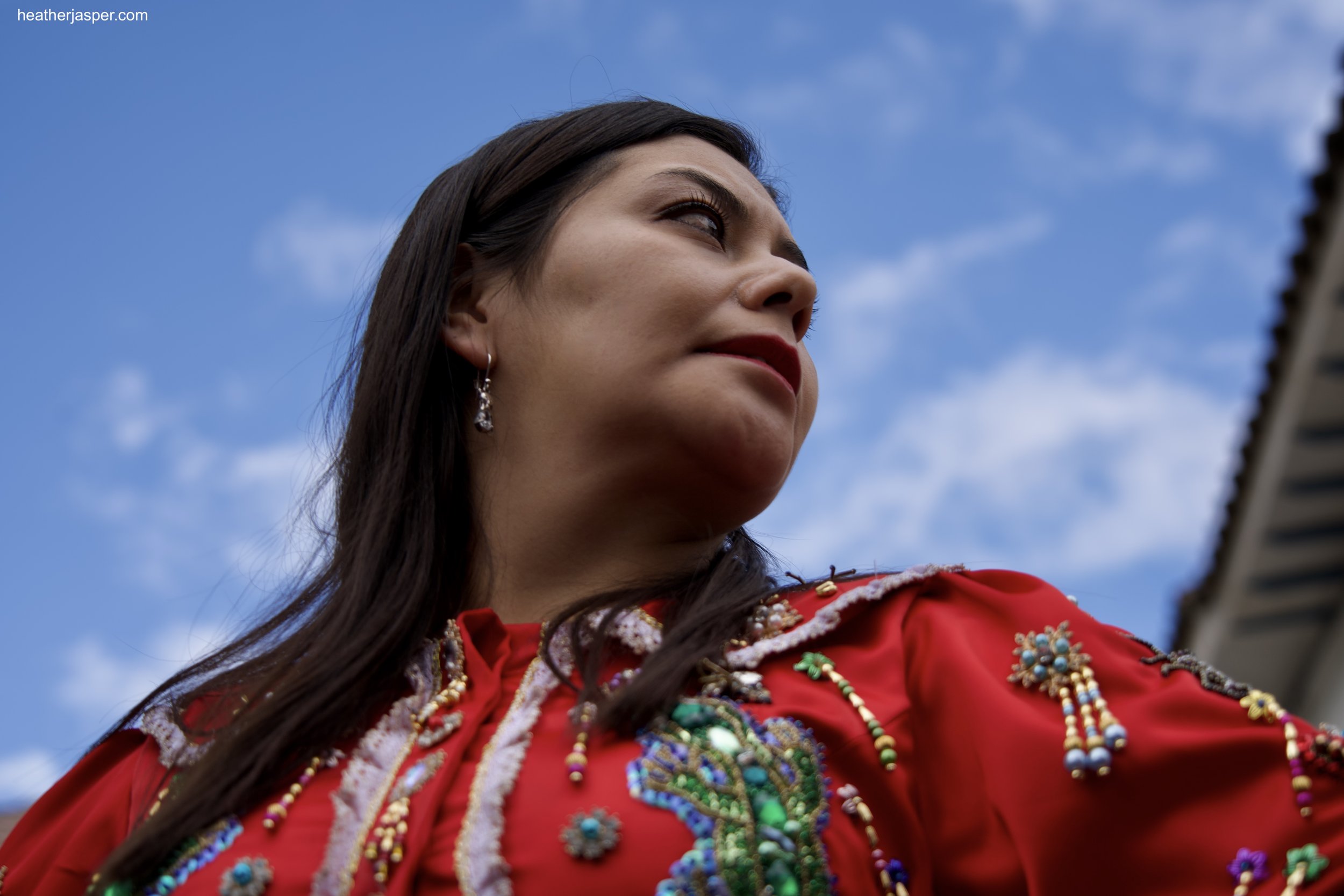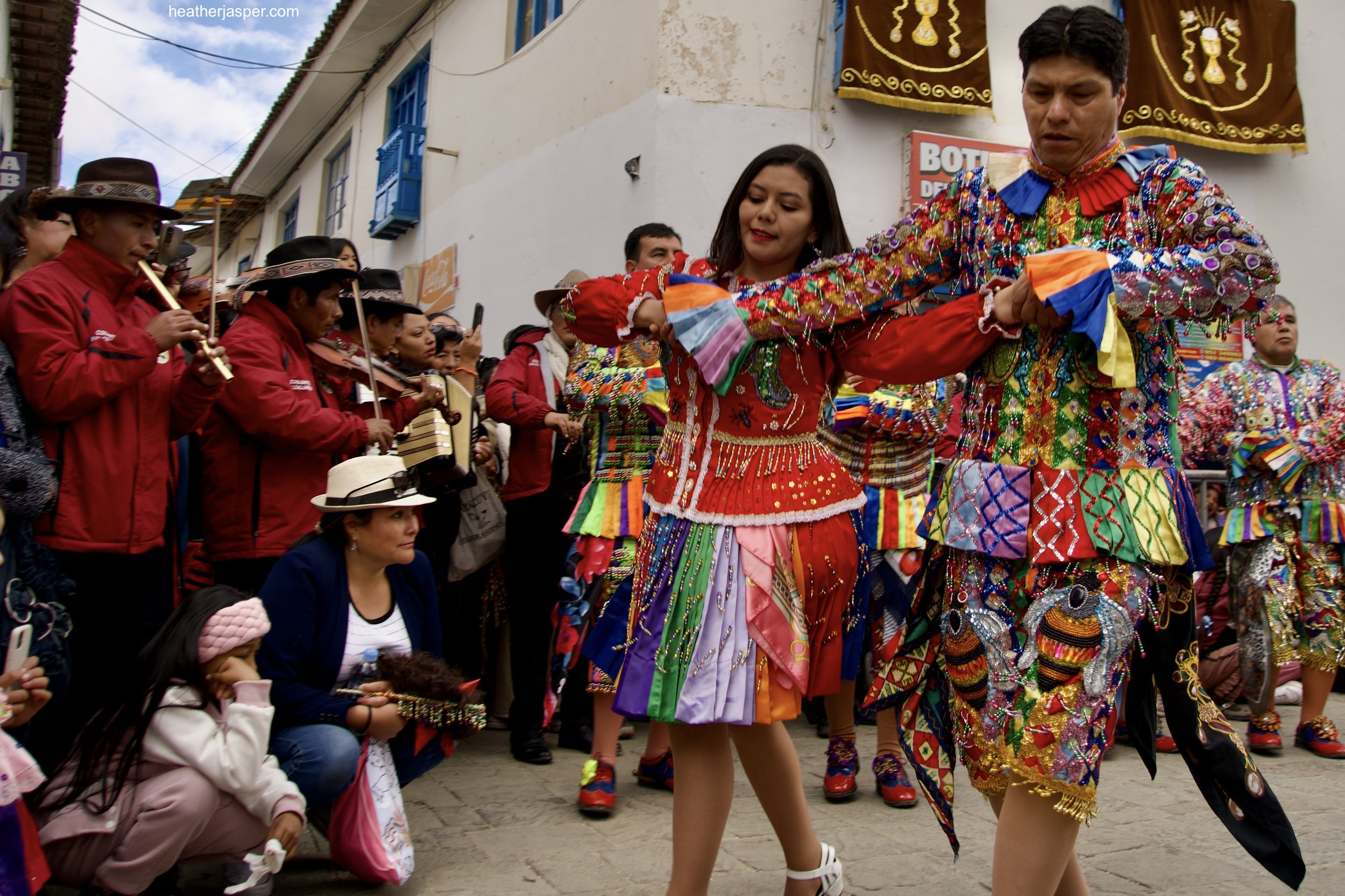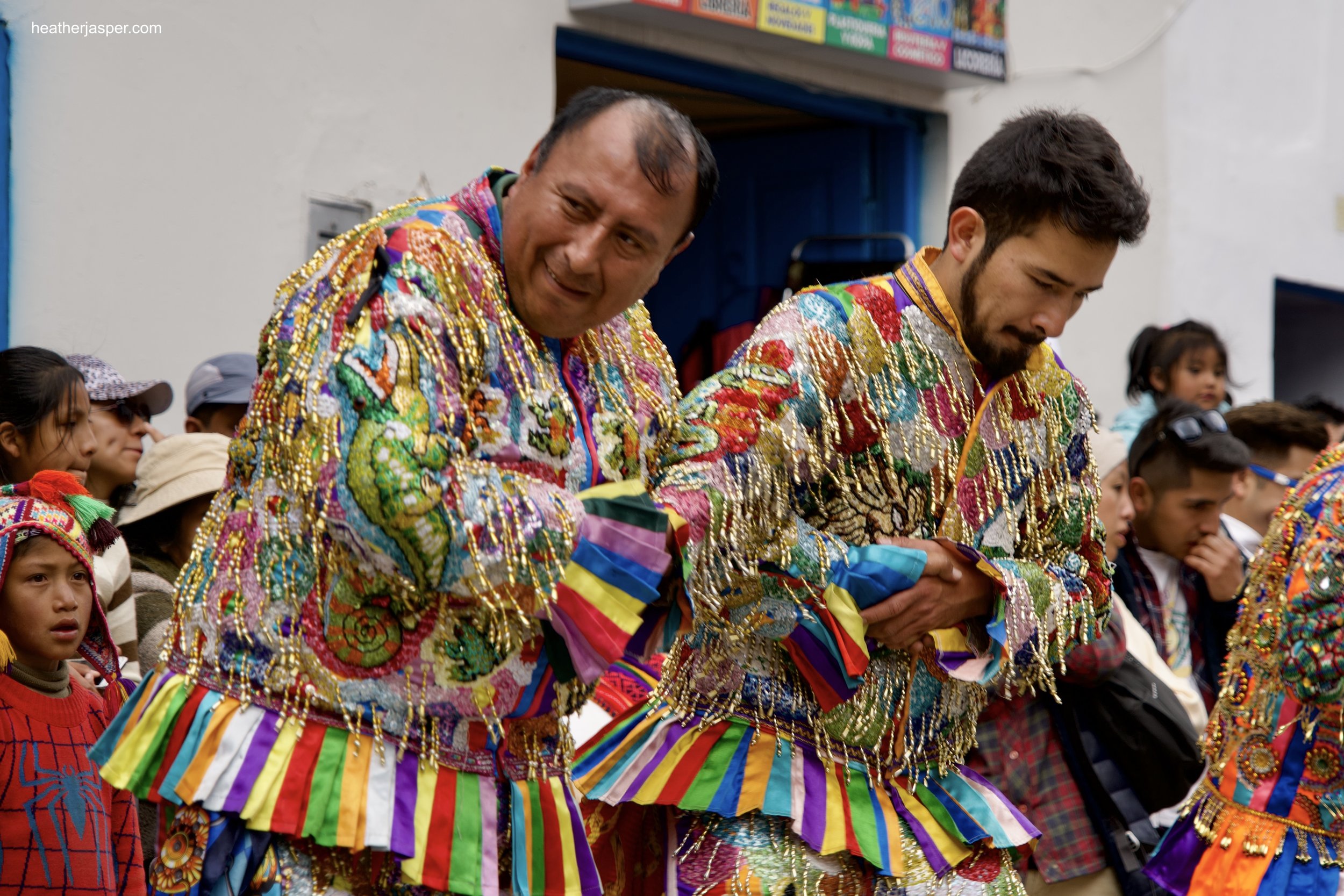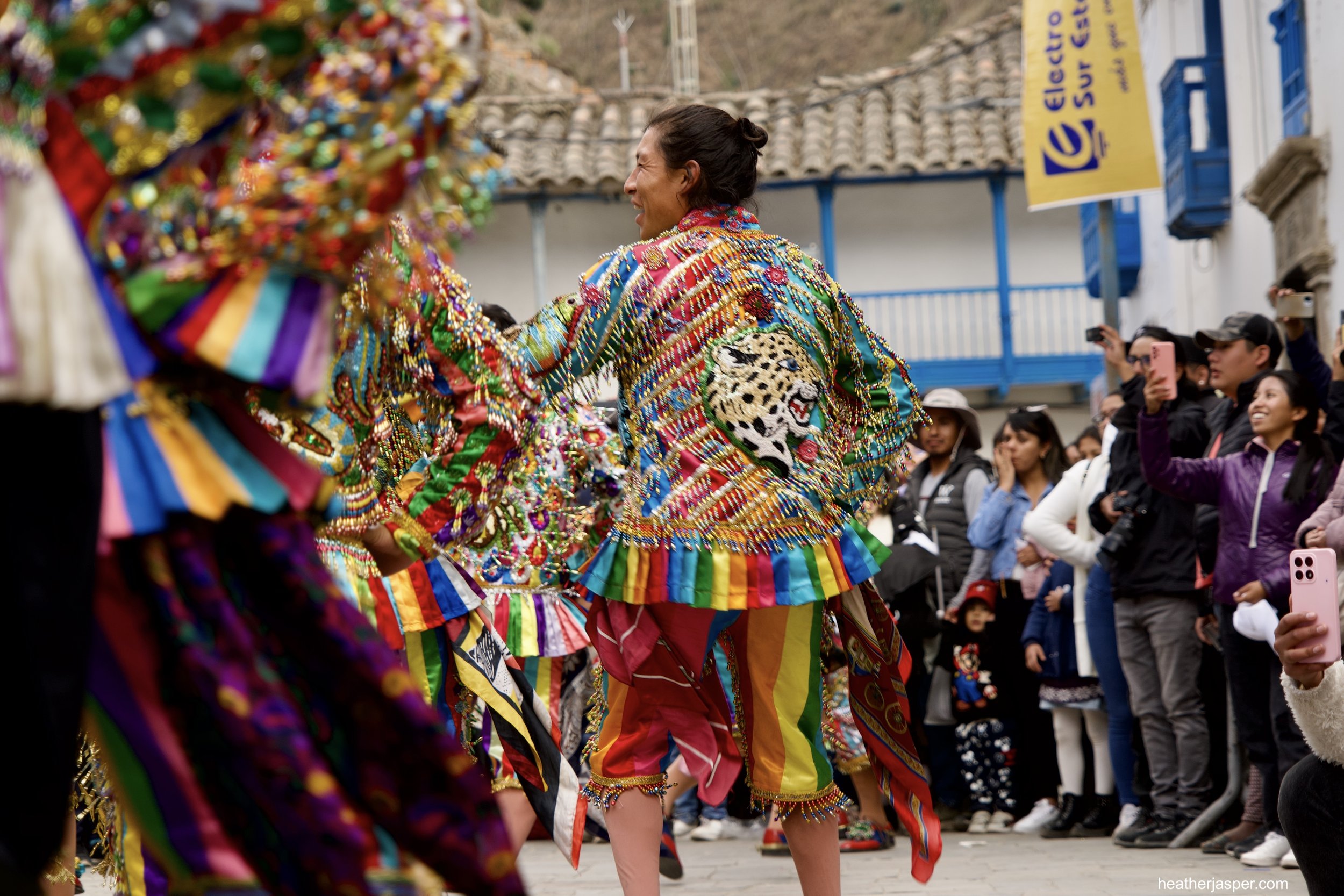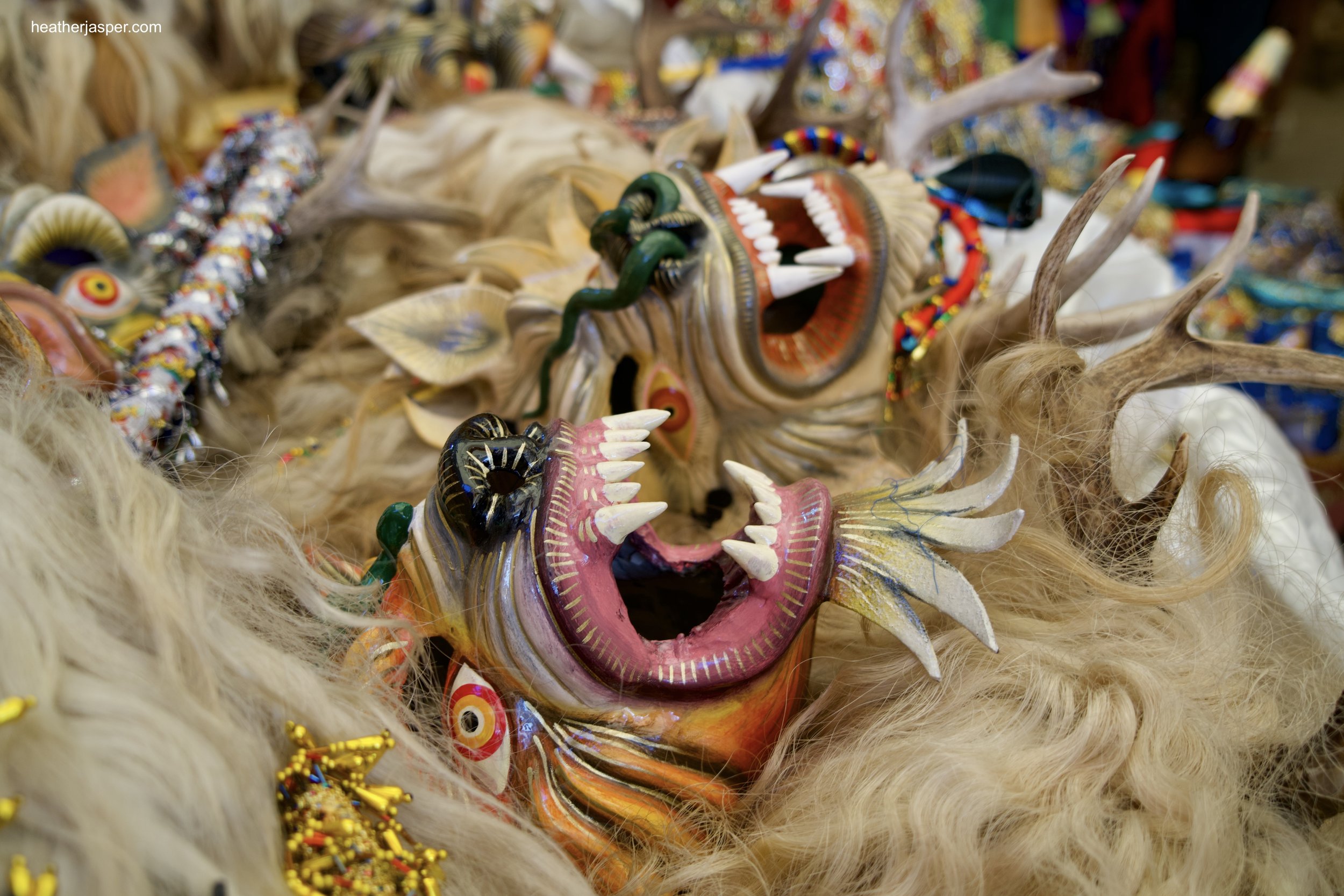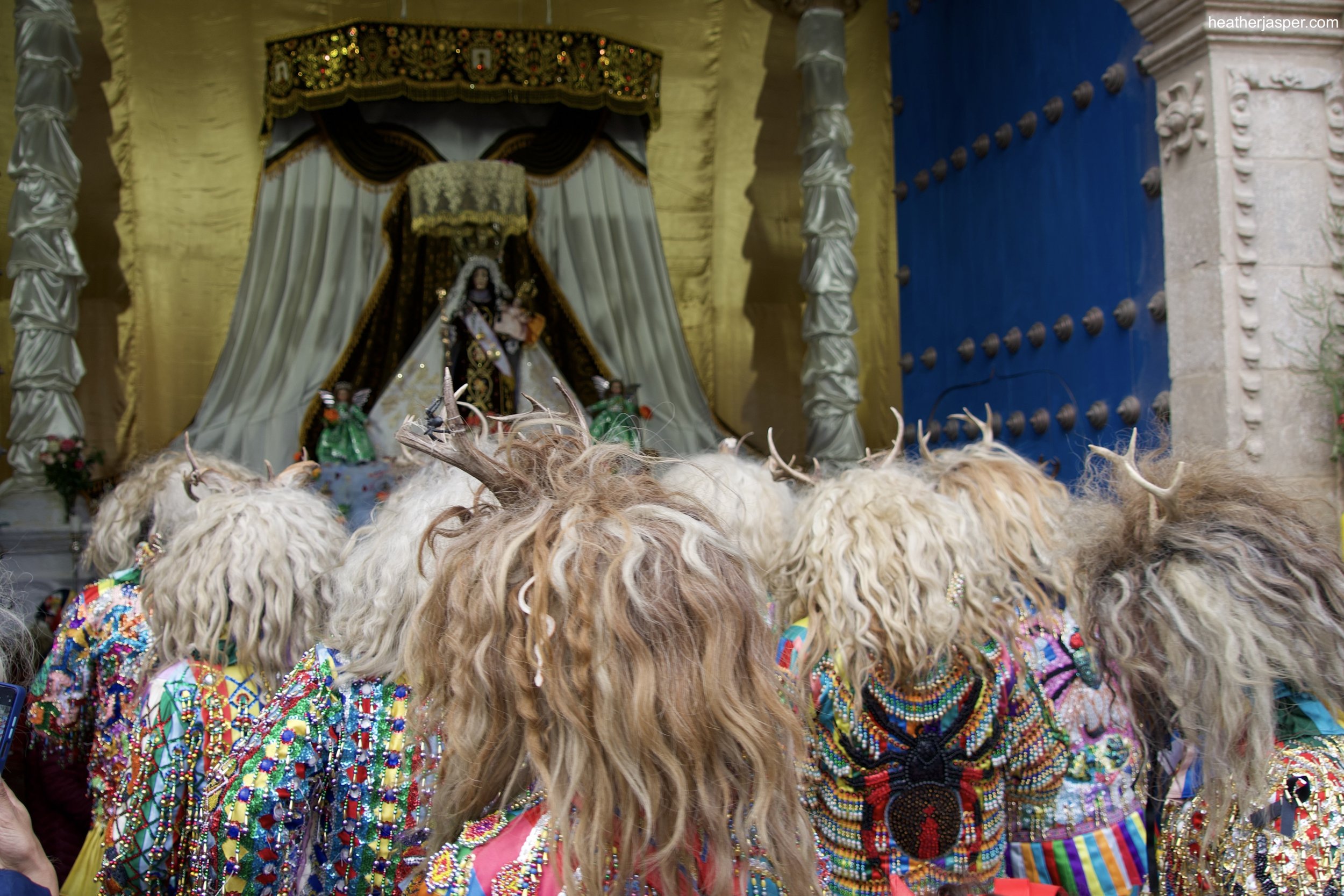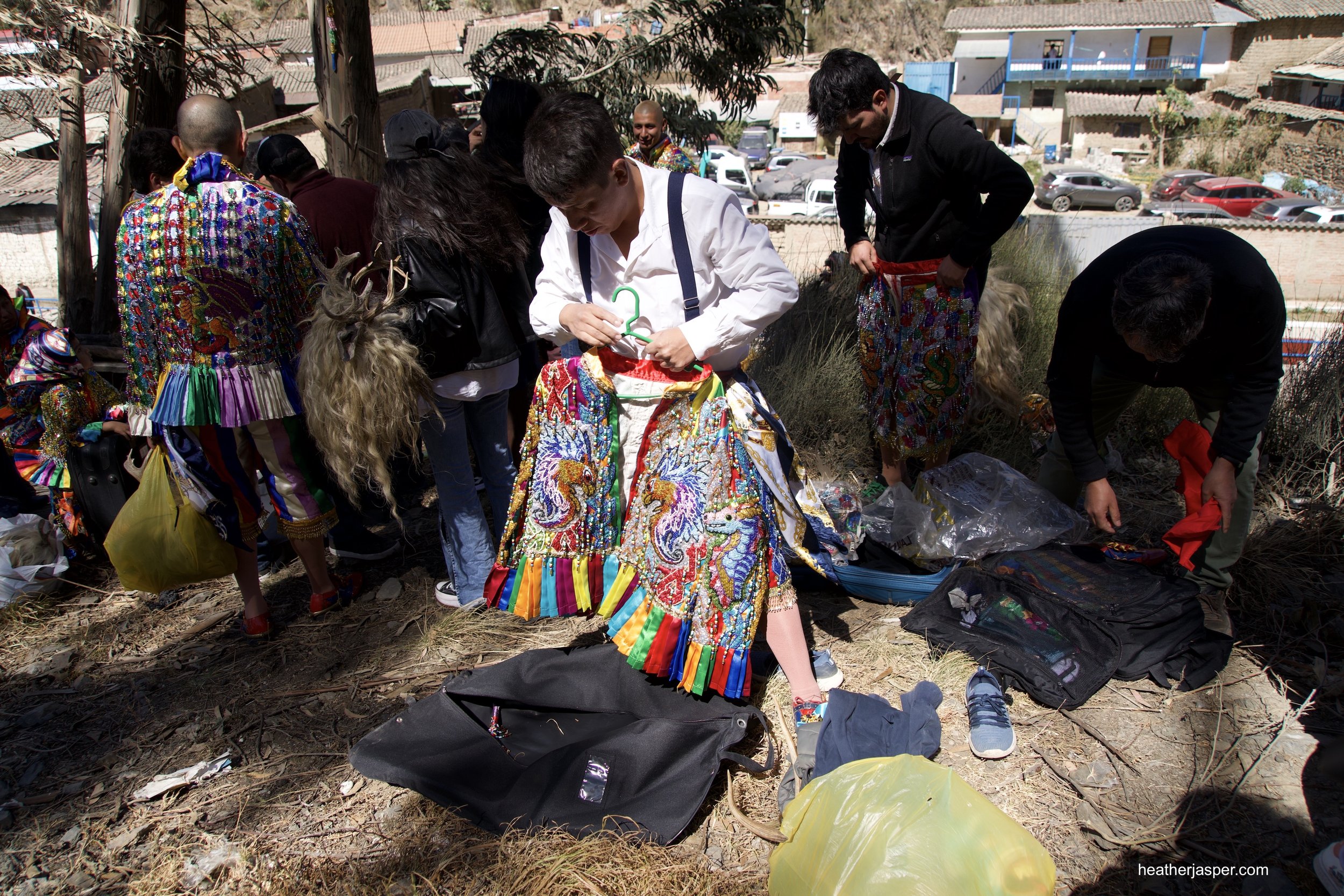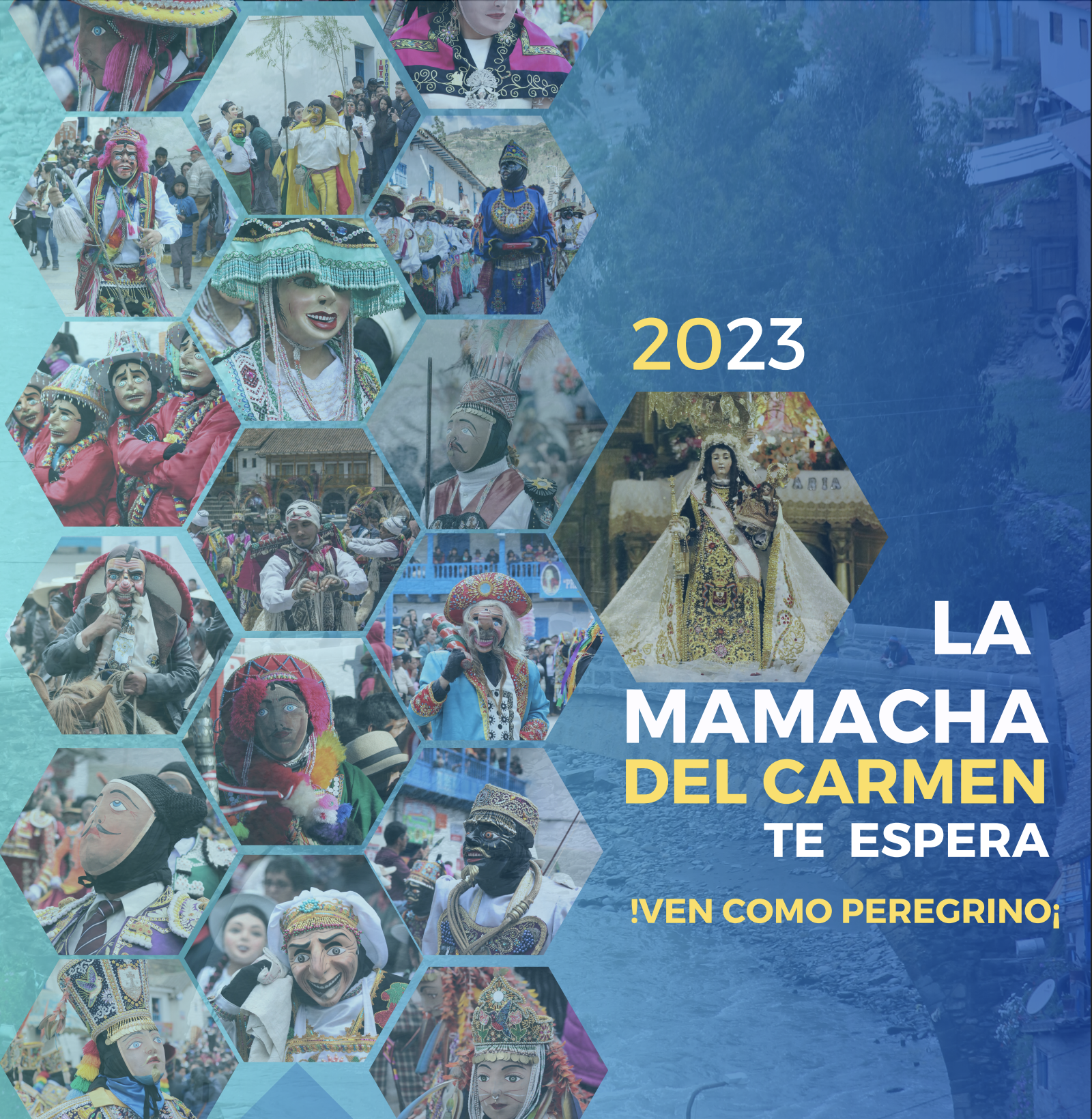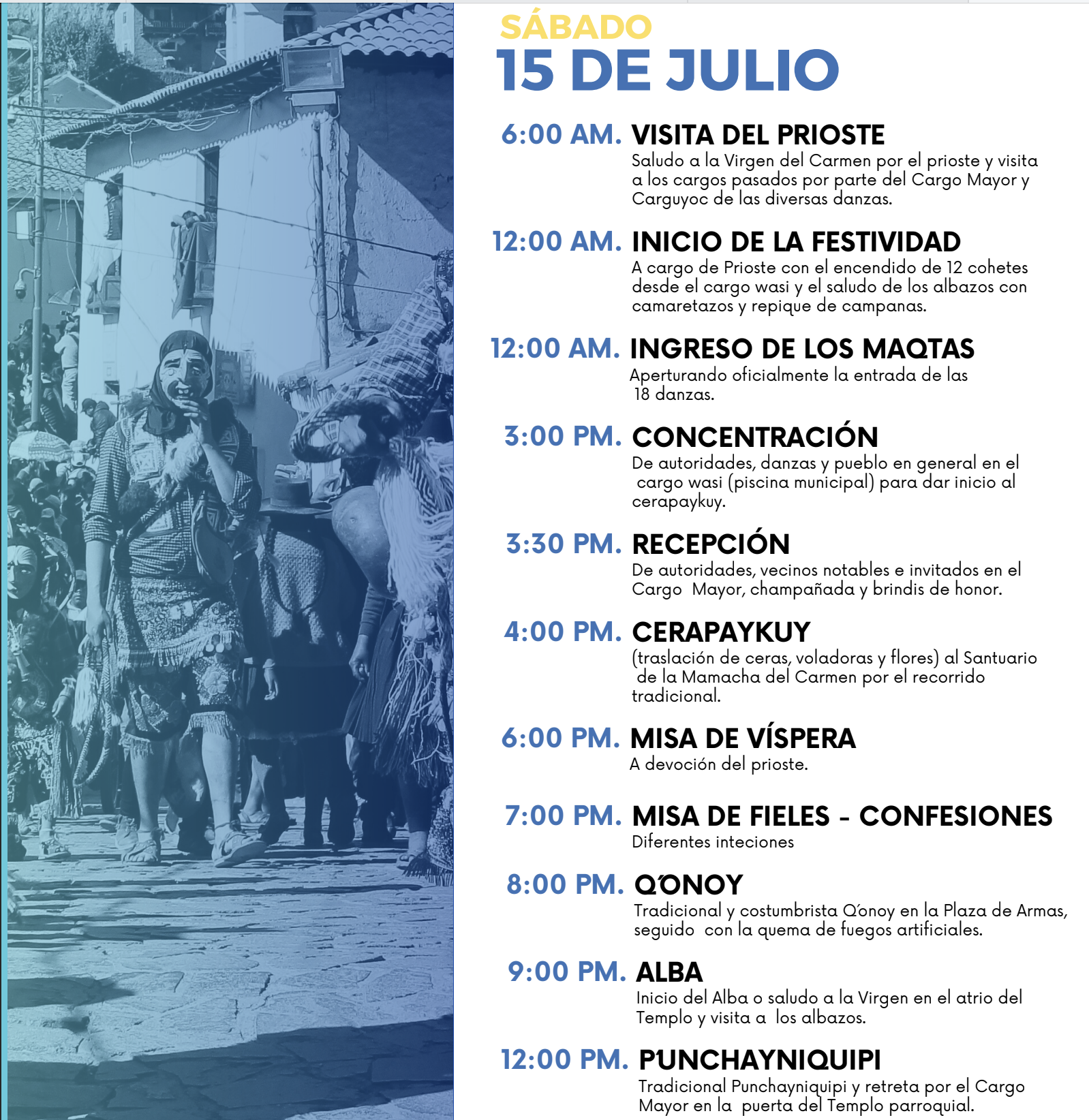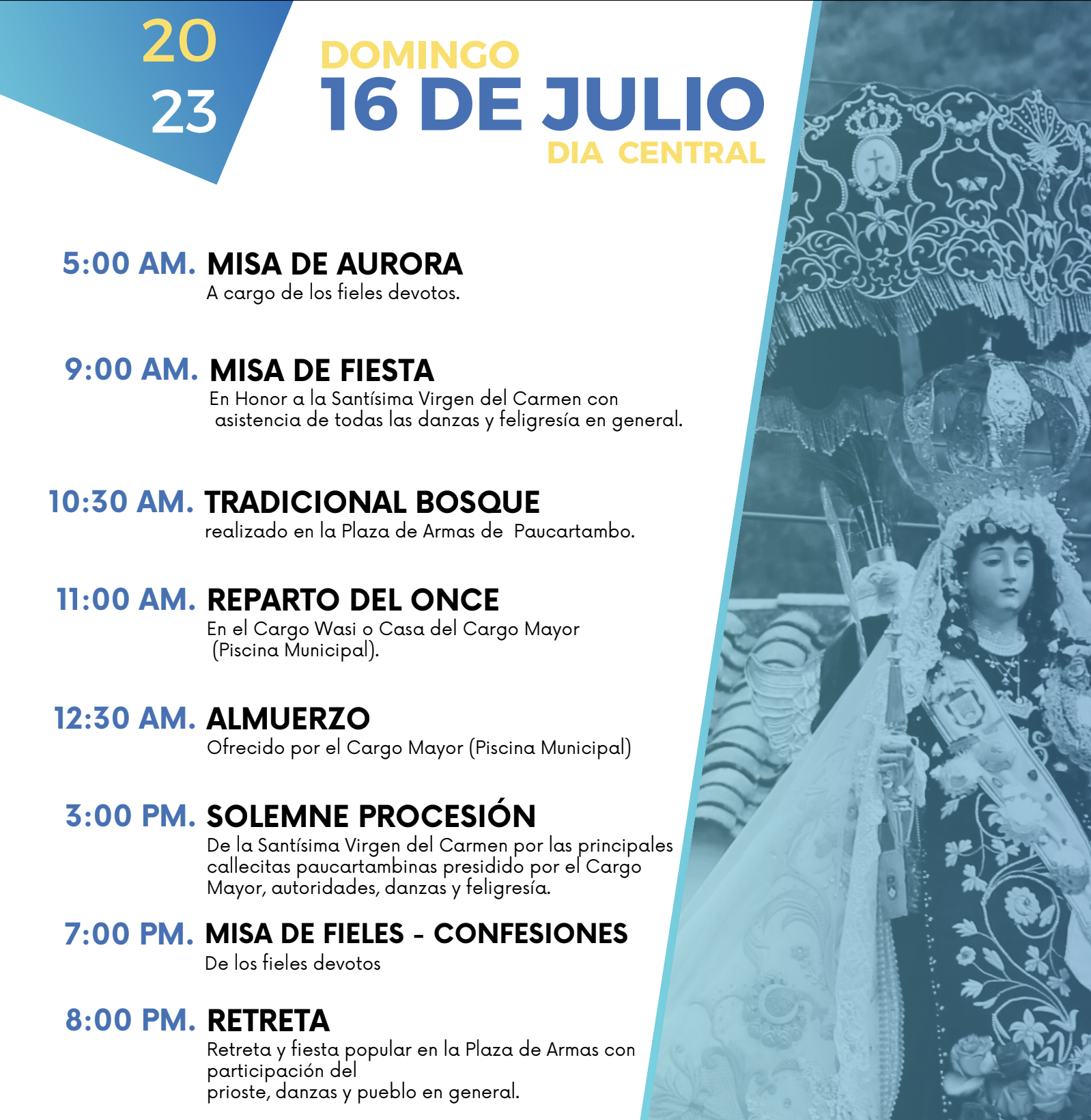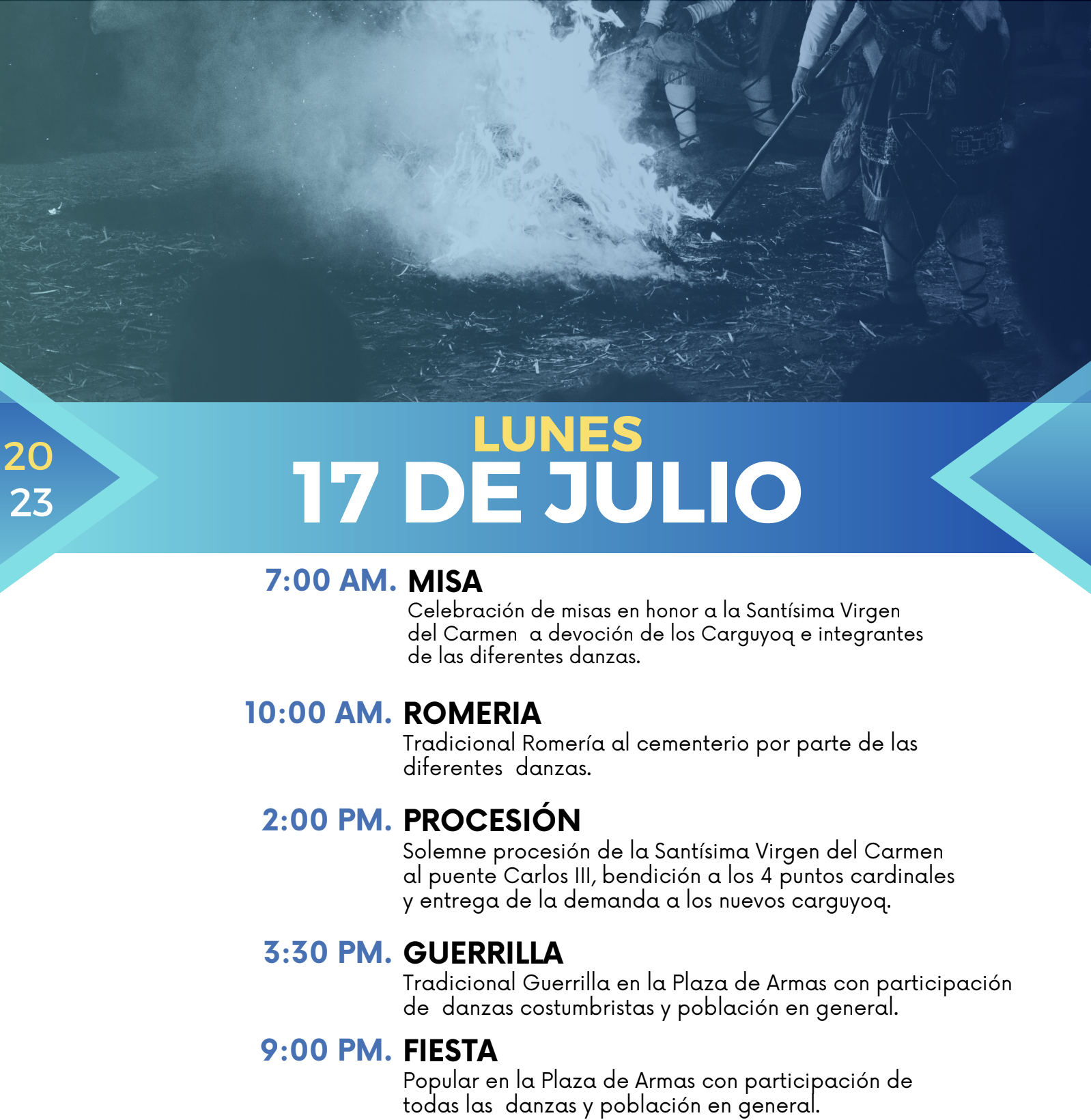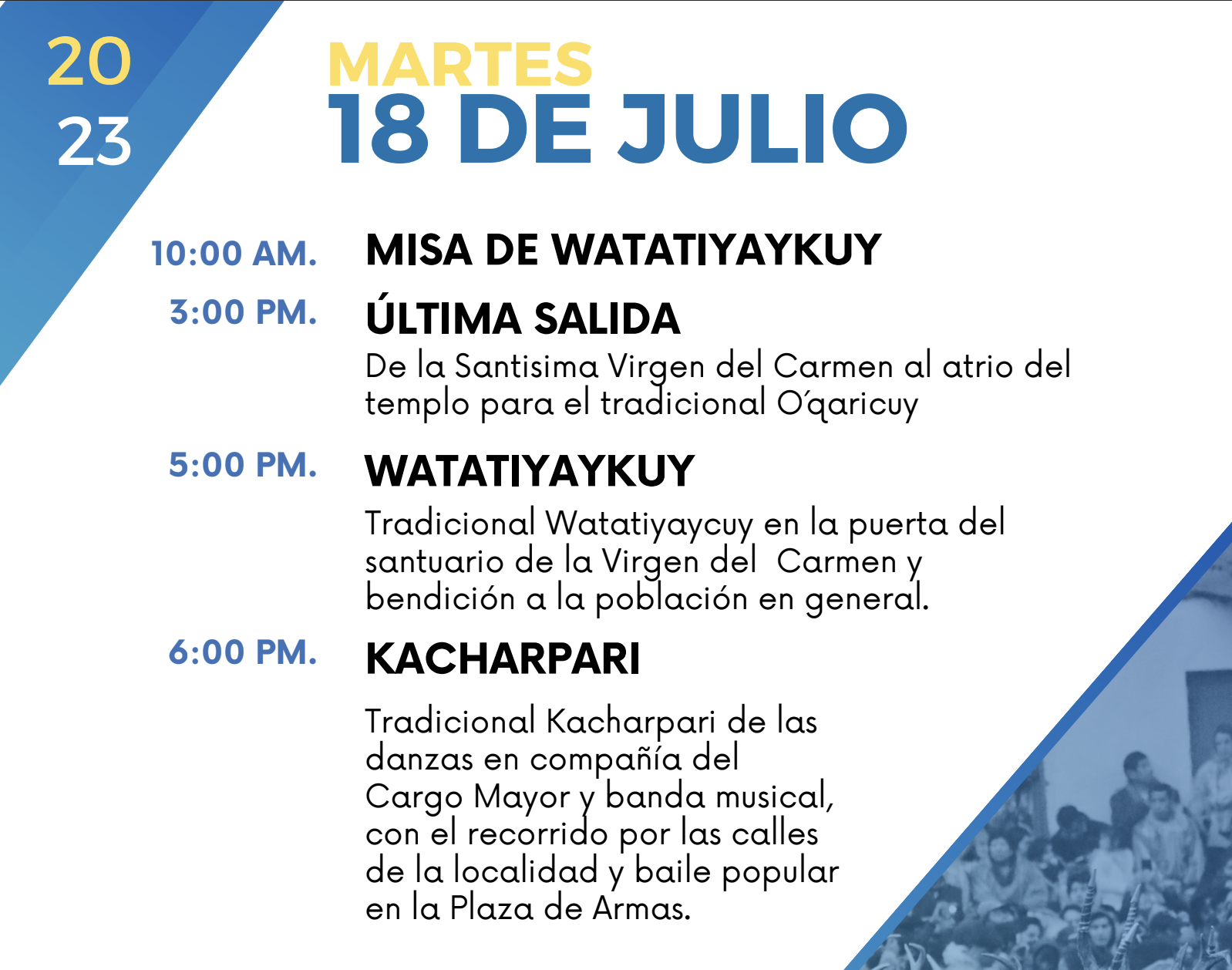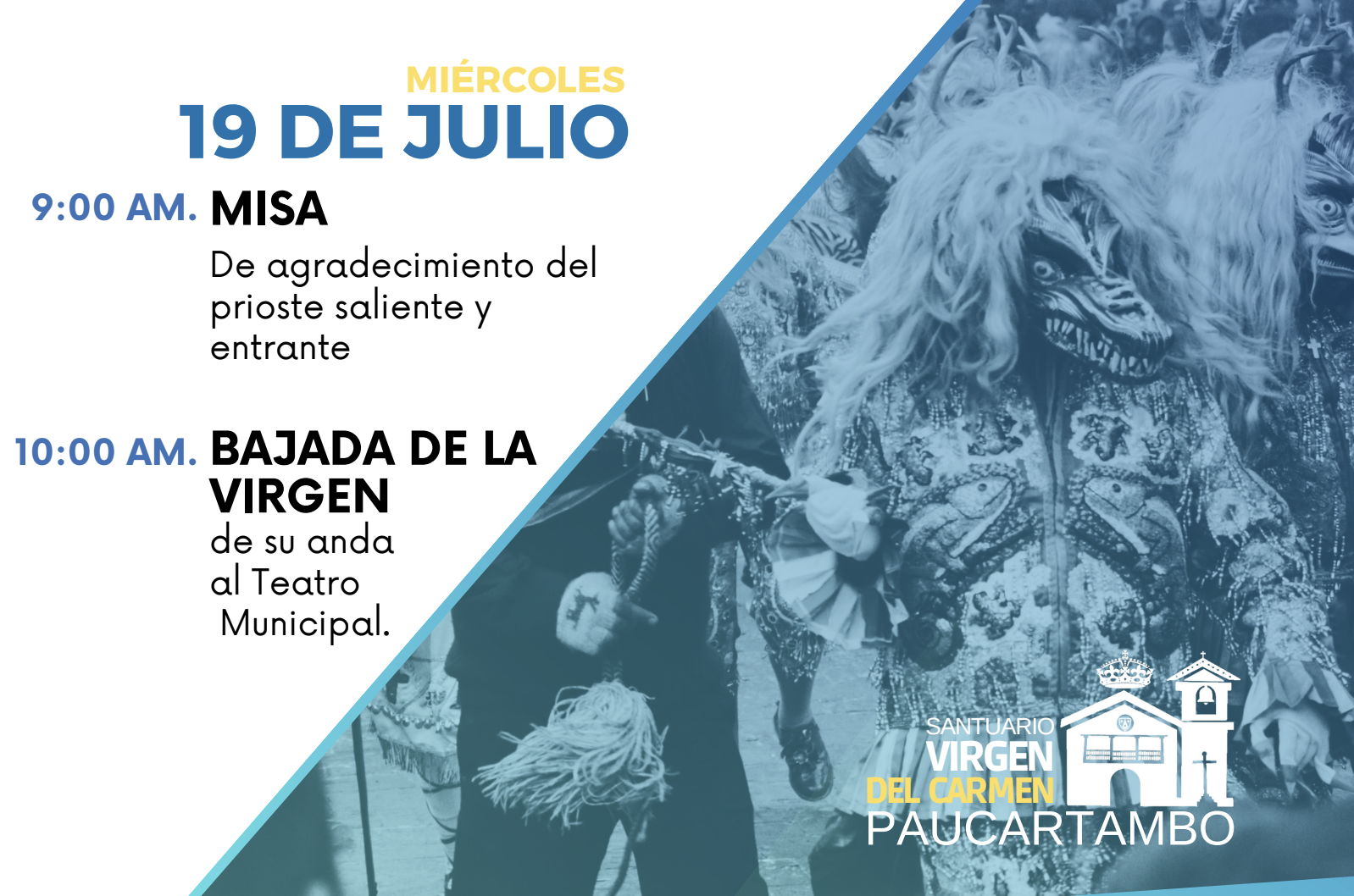Paucartambo
The festival for the Virgin of Carmen is one of the best things to do in Peru!
I’ve been hearing for years about Paucartambo’s festival for the Virgin of Carmen and finally had the opportunity to go this year. If you can’t come to Peru for all the festivities in June, schedule your trip for mid-July so you can see this amazing festival.
Paucartambo is a small town of only 15,000 people, counting outlaying areas. Imagine another 10,000 to 50,000 people flooding in for the festival every year from July 15-18. Most come just for the day from Cusco. The most popular days are the 15th and 16th and it’s hard to walk through the streets those days. The 17th and 18th are a lot calmer, but just as interesting.
The crowd and Saqra dancers in front of the church of Paucartambo.
There are nineteen dance troupes at the Paucartambo festival, each with their own unique costumes and dances.
The groups are called cuadrillas or comparsas and they come from around the Cusco region to dance for the Virgin of Carmen. Some sing and some don’t. All have unique choreography for the songs that they dance to and most of the songs were written specifically for each group. I spent all four days of the festival with the Saqra cuadrilla.

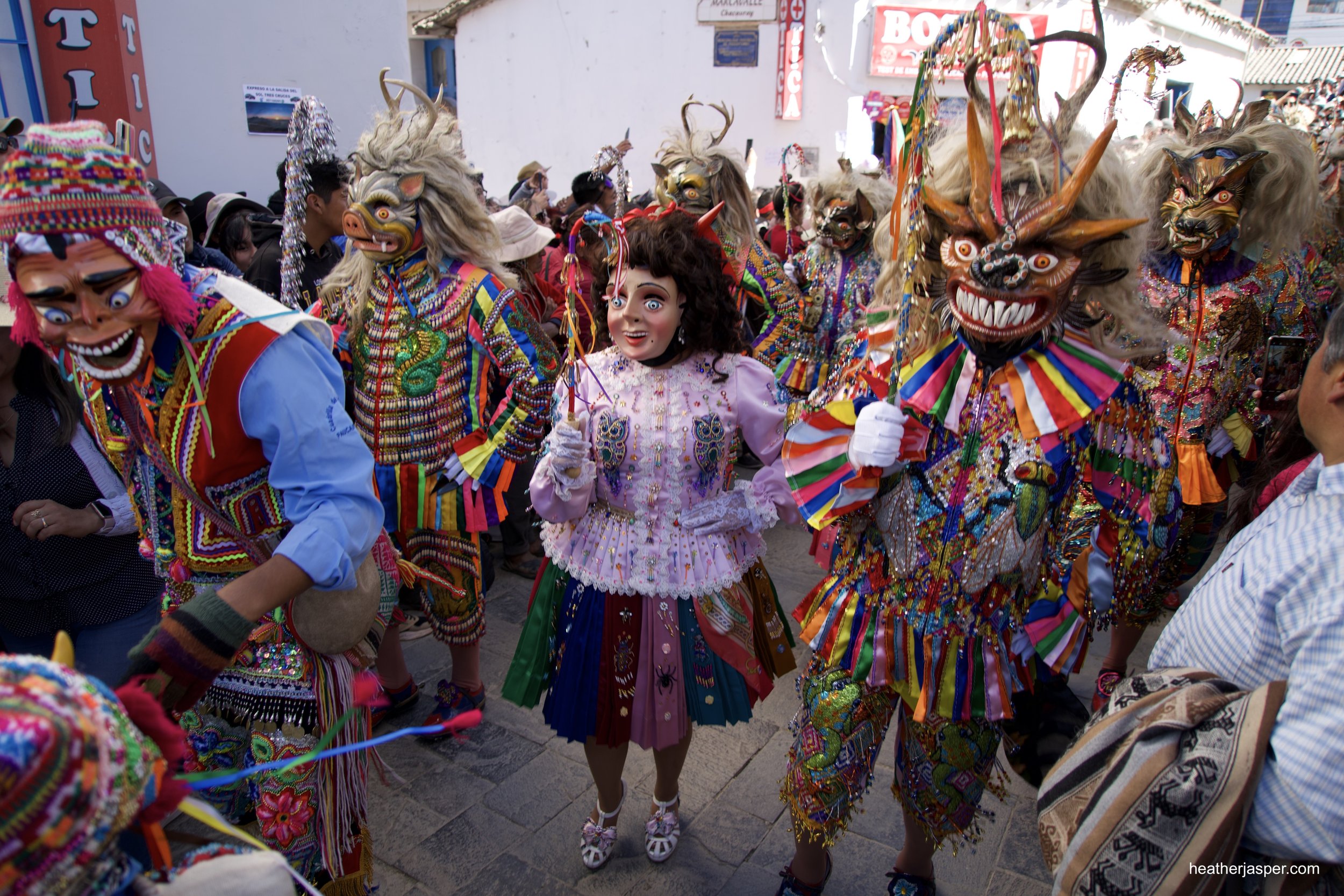
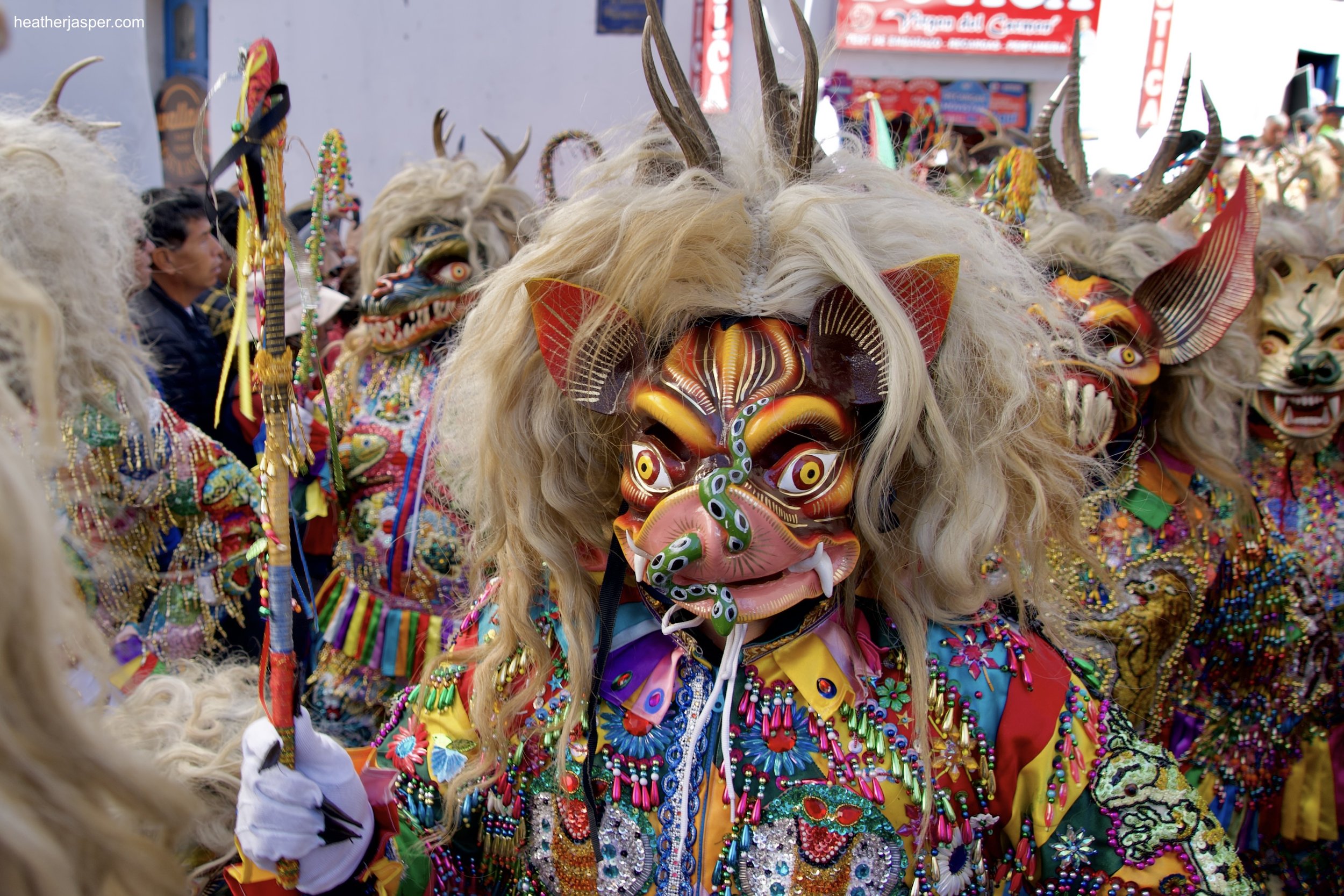
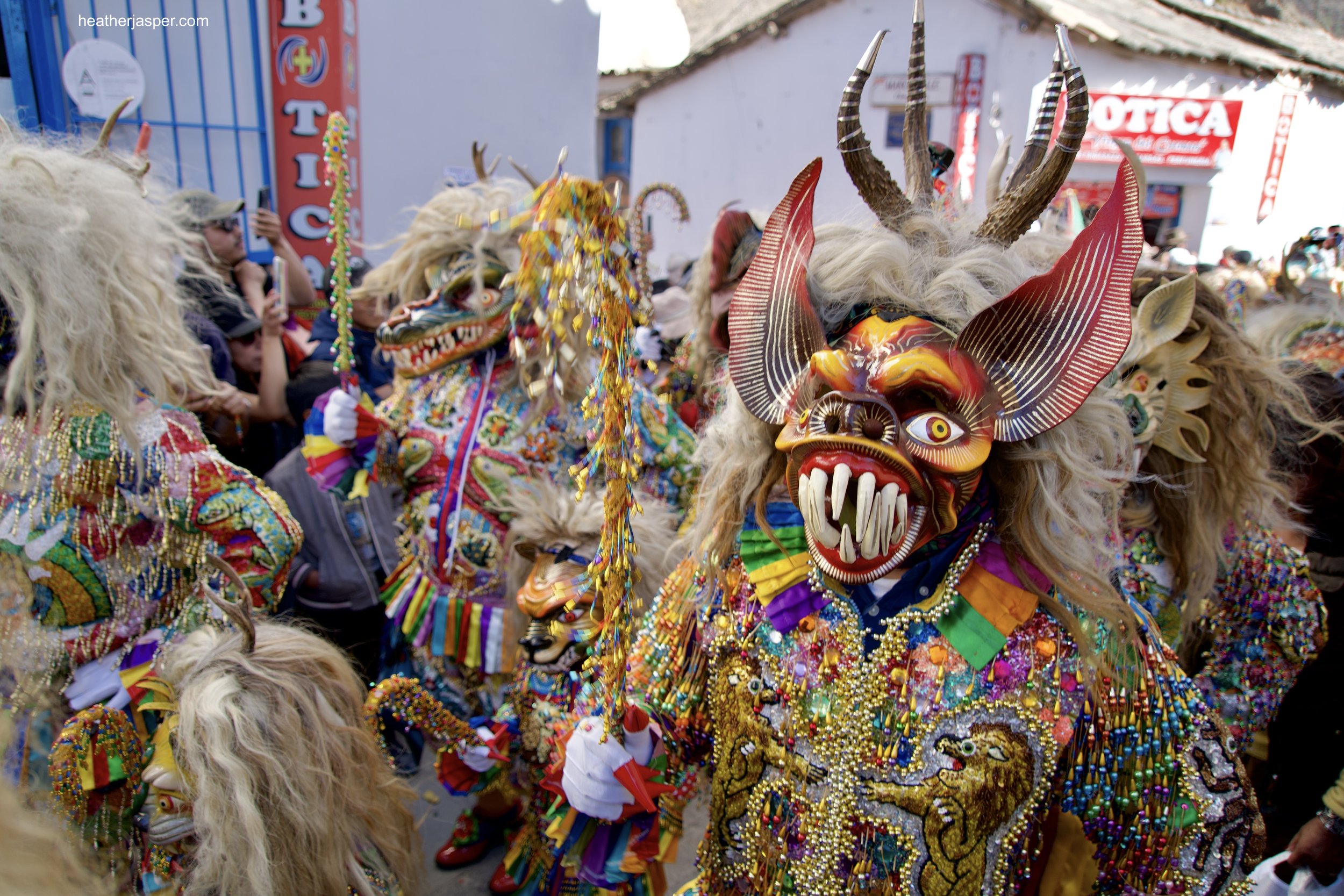
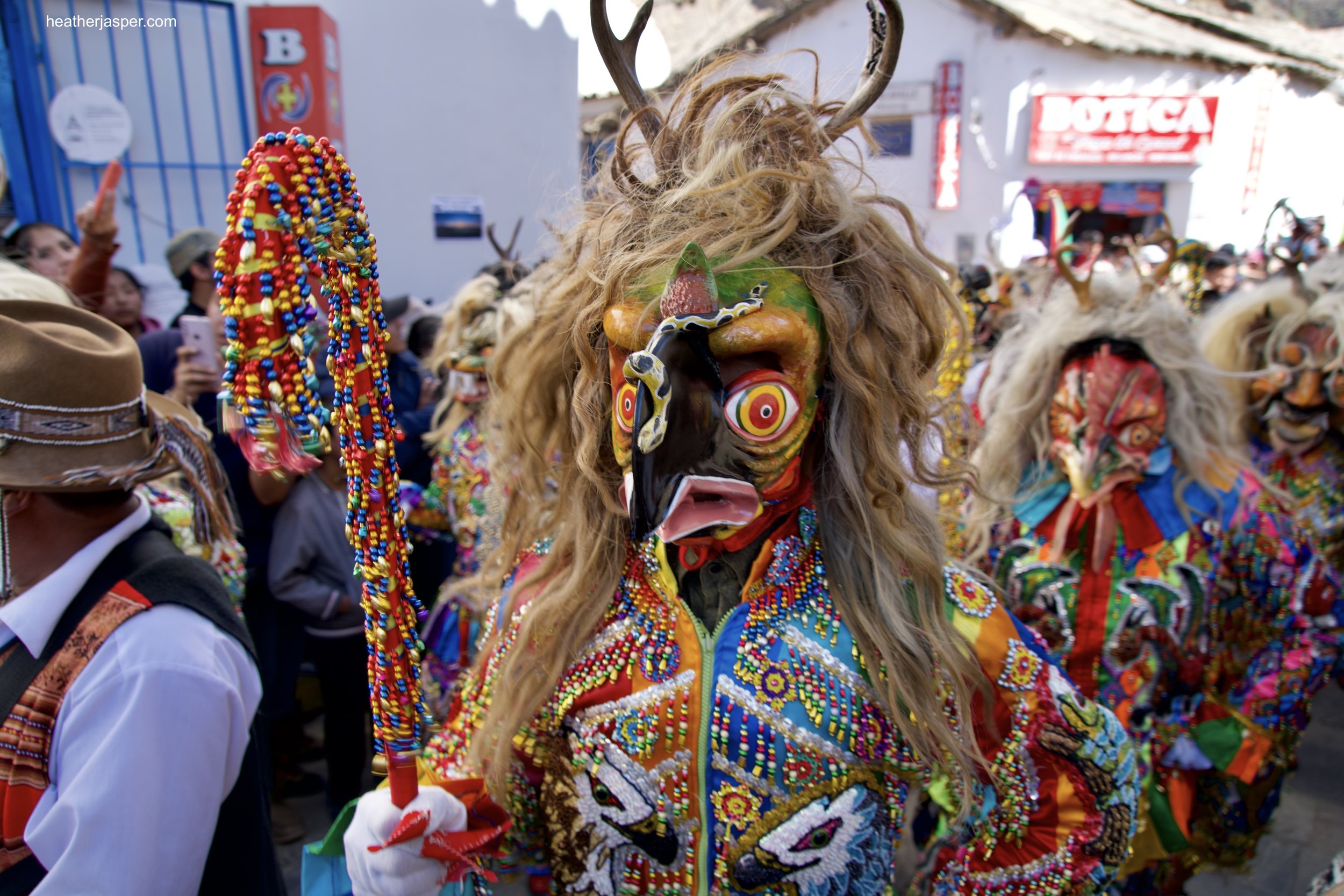
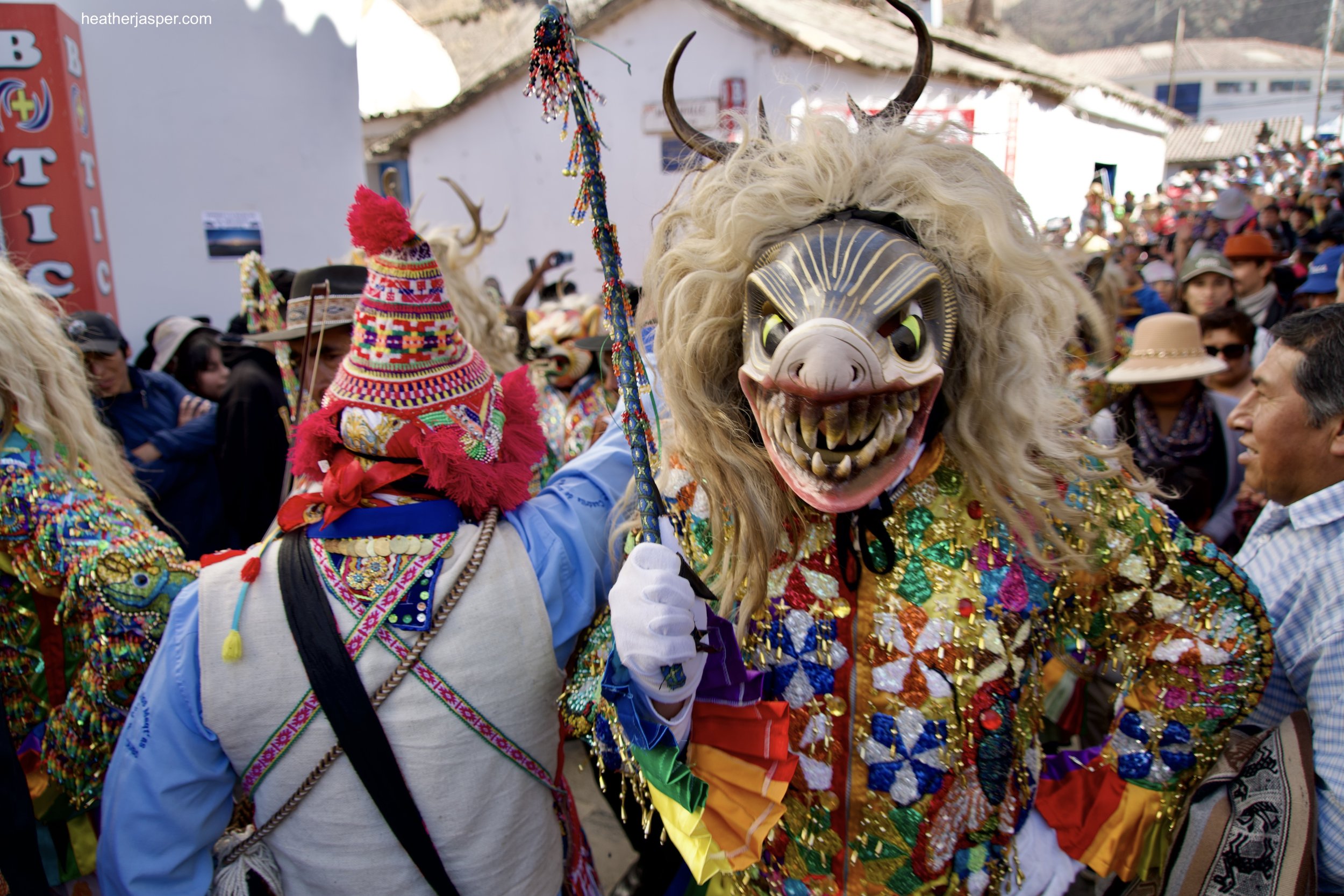
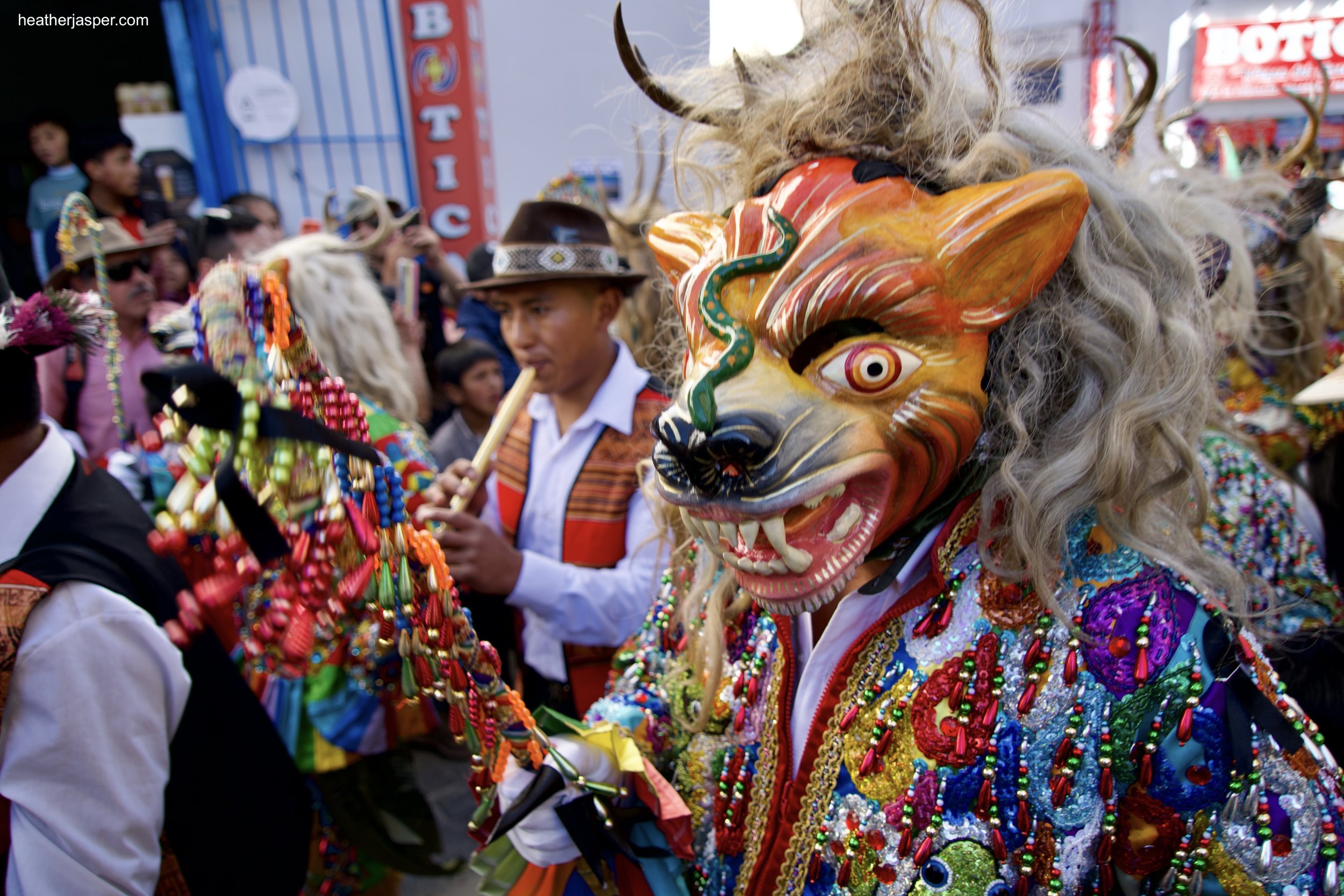
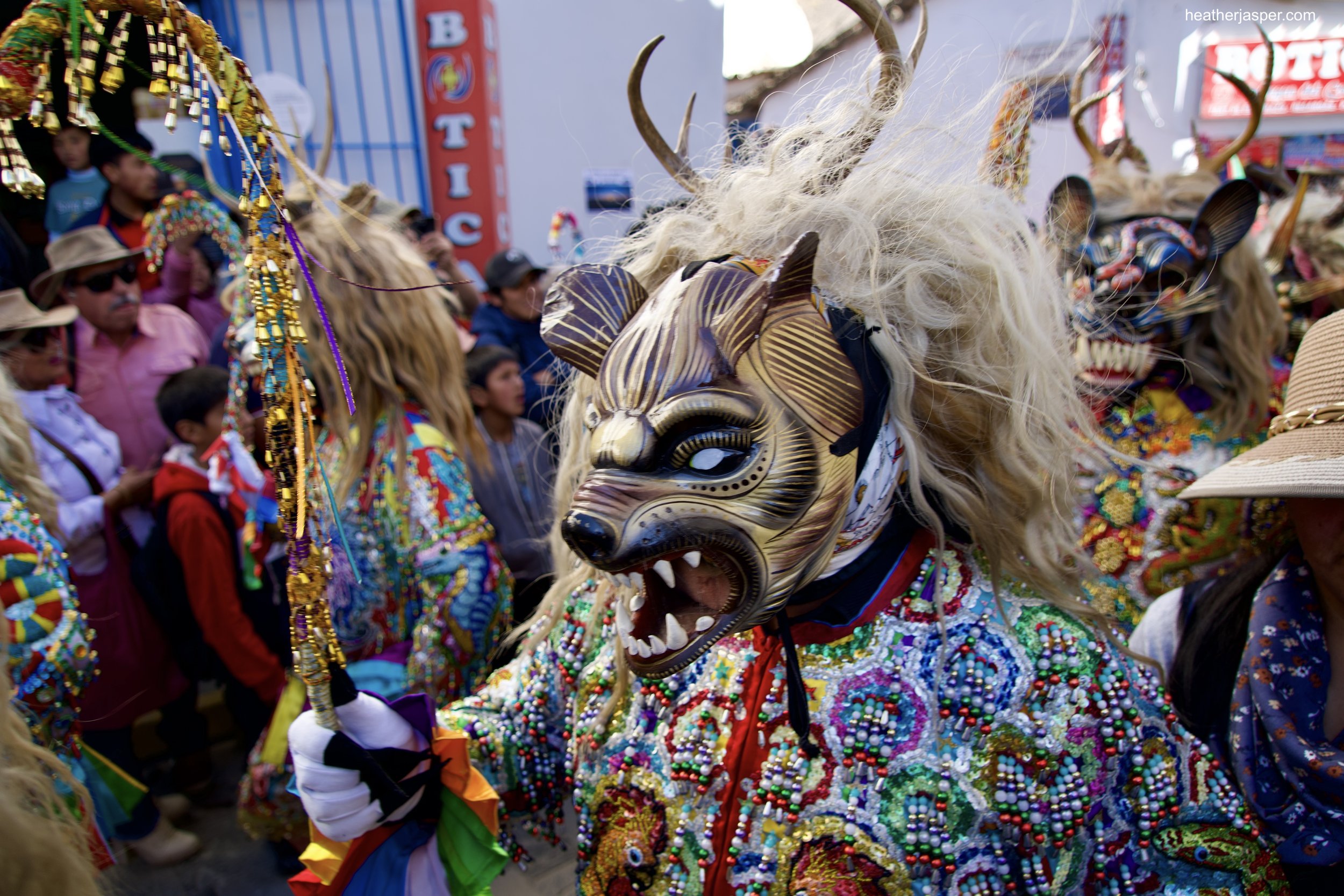

So, what are the Saqra?
The Saqra are from Paucartambo, one of the few cuadrilla created in the village, whose songs and choreography were composed by Paucartambo residents. They don’t sing but make a kind of gargle-purr noise, like you would imagine a jaguar or panther might make. The sound is made with the tip of the tongue, rolling an r with enough force to vibrate their vocal cords. They use the sound to get each other’s attention, warn spectators to back up and to threaten people with their hooks, called garabato.
The garabatos are wrapped in brightly colored satin and decorated with beads and sequins. The Saqra represent devils and the garabatos are used to hook spectators and drag them down to hell. The original costumes in the 1920s included wings since the devils were fallen angels.
Today, Saqra costumes are even more elaborate than a hundred years ago, though nobody wears wings anymore.
My favorite part of the costume is the masks. Made of plaster and meticulously painted, they are styled as animals, both real and imaginary. They’re supposed to be scary, so you’ll see big, pointy teeth, pig noses, bat ears and snakes.
Most masks have small snakes slithering through nostrils and around teeth. The Saqra are a complicated syncretic blend of Catholic devils and Andean symbolism. In Andean beliefs, the snake represented the lower of three worlds and its ability to shed its skin represented rebirth in the underworld. Saqra costumes often include poisonous animals from the Peruvian Amazon jungle, like poison dart frogs.
As you would expect for devils, they wear wigs with horns. The horns are real antlers, usually from deer. The hair is from horse manes or tails, and sometimes from cow tails. It’s thick and coarse, which made me initially assume it was plastic. The more time I spent with the Saqra, the more they told me about their costumes, including the source of their wigs.
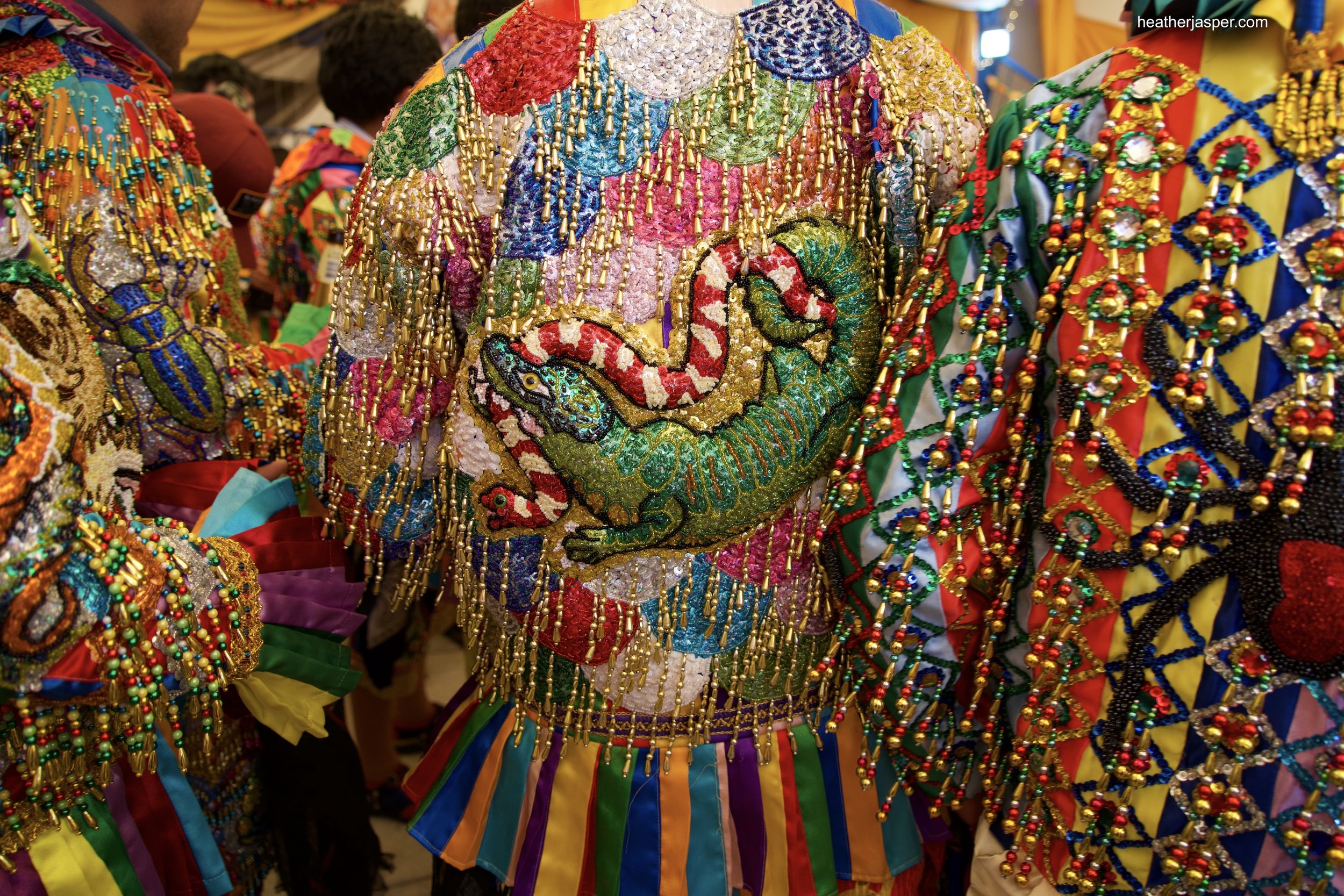

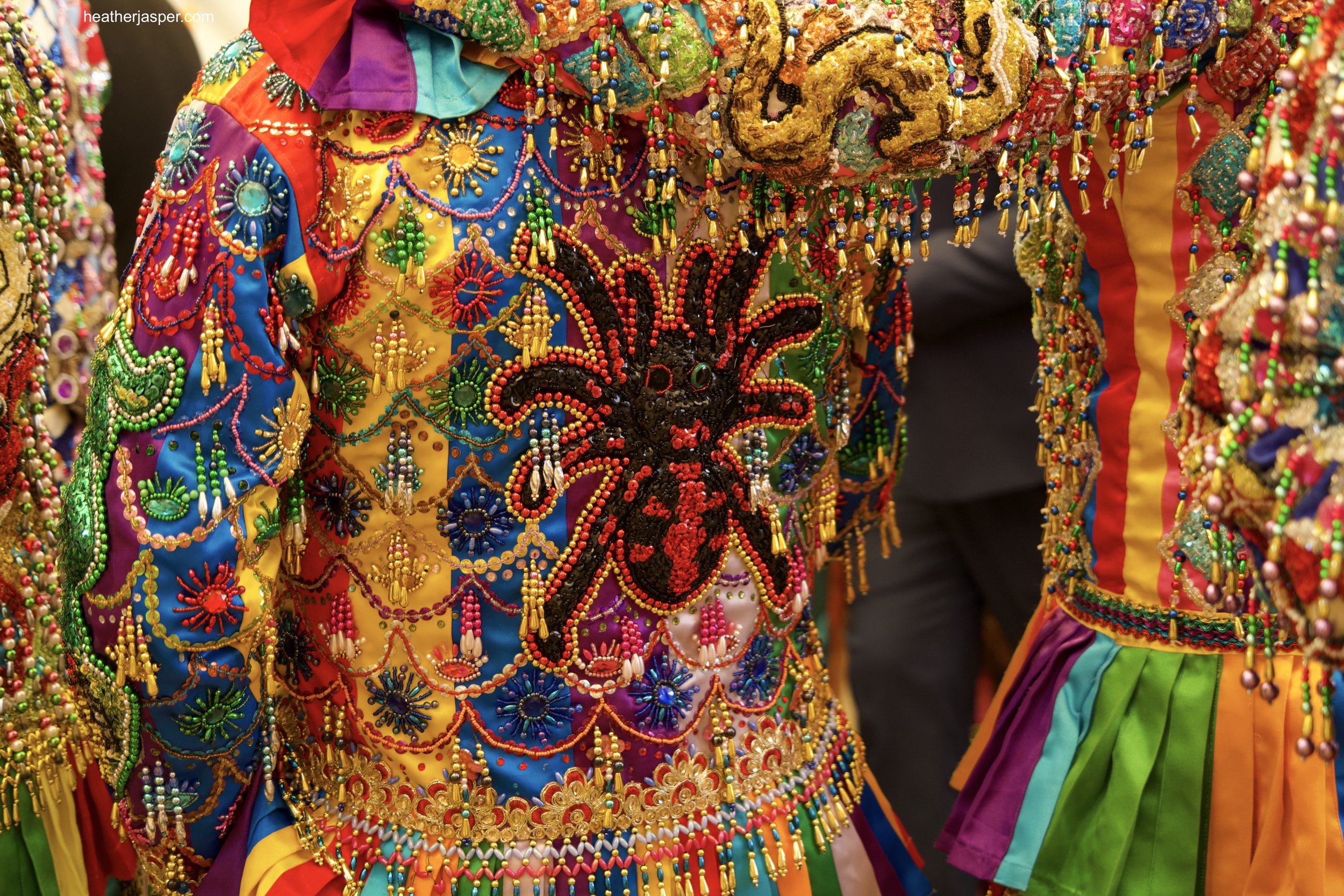

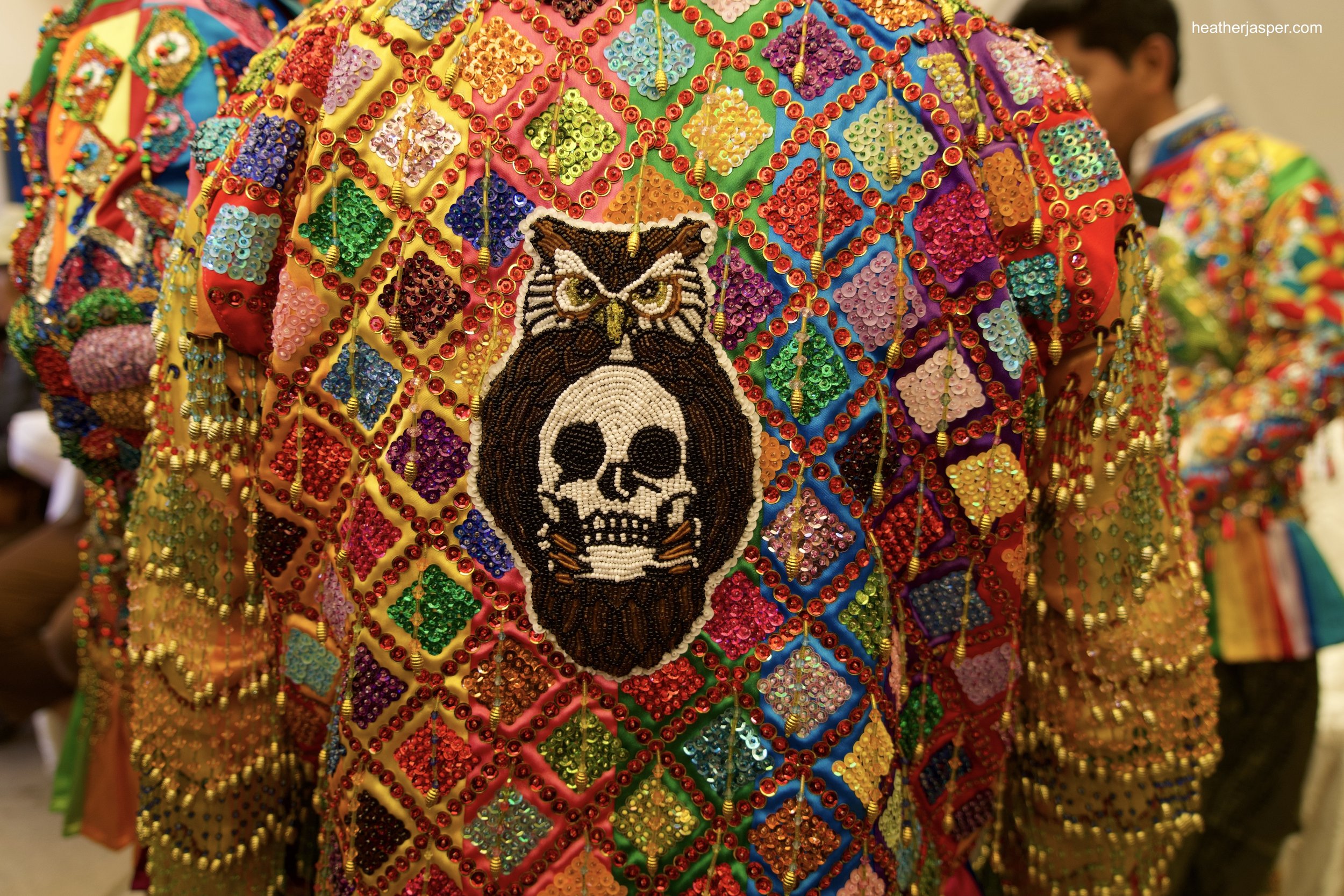
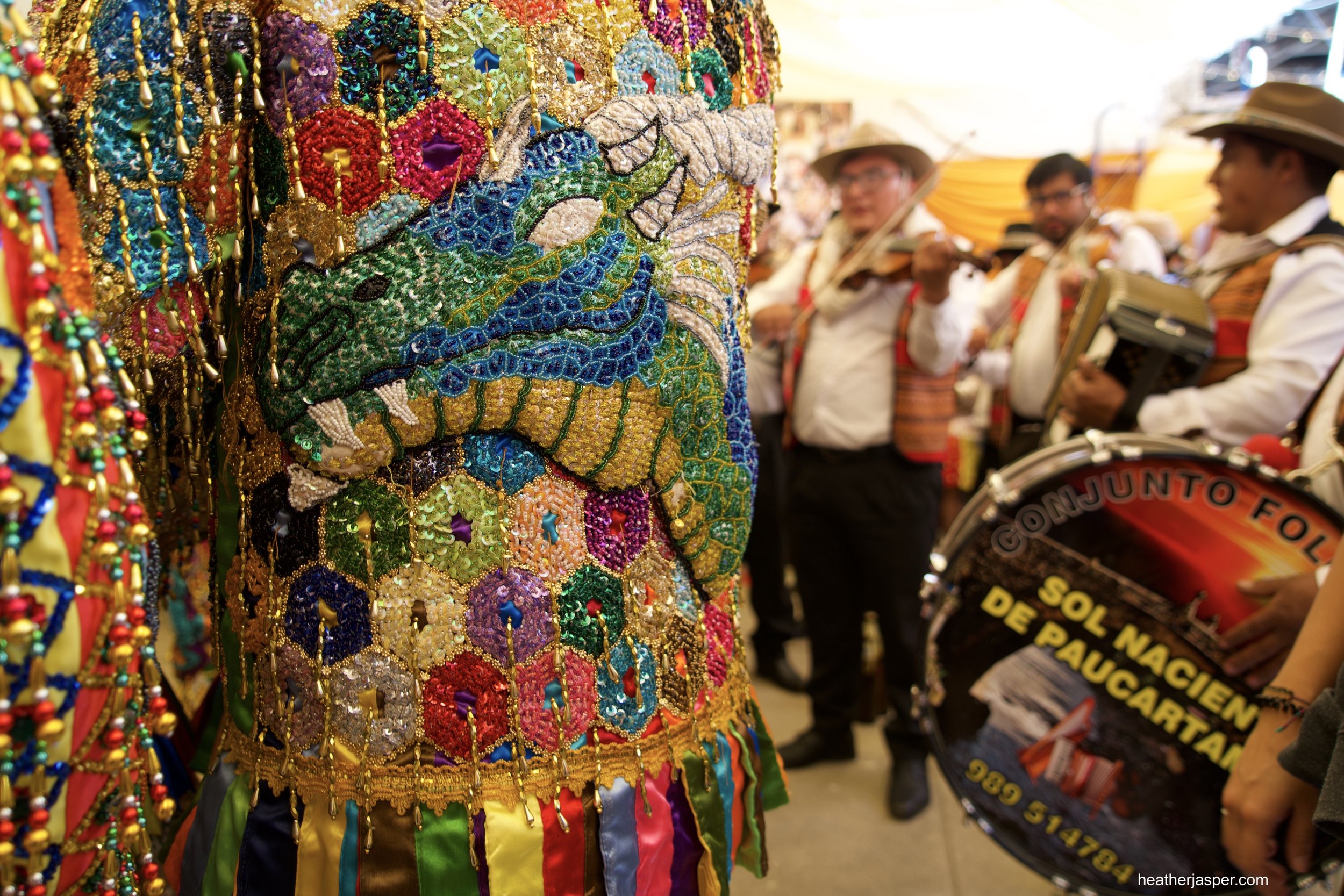
Saqra jackets are even more extravagant than their masks.
They wear long sleeve jackets of brightly colored satin covered with beads and sequins. On the back and chest, they have more animals considered dangerous, aggressive, or poisonous. I saw lots of snarling lions and wolves, bats, snakes, poisonous frogs and spiders, eagles and even dragons. Their pants go just below the knee and are made of the same bright satin, with more animals embroidered in beads and sequins on their thighs.
High above town is a sign for Paucartambo, with a perfect view of the church through the C.
Here's what I did in Paucartambo
Friday, July 14
Paucartambo is about a two-hour drive from Cusco. There are busses, vans and cars that ferry people back and forth. If you want to get to Paucartambo on your own, go to the “control” bus stop in the San Jerónimo neighborhood of Cusco. Prices range from s/15-s/25 depending on the vehicle and number of passengers. (About $4-7 USD) During the festival, most tour agencies arrange day trips from Cusco.
I arrived in Paucartambo on the 14th this year, intent on seeing as much as possible. Thankfully, my friend Ninoska included me in a group that was renting a room for the whole festival. Paucartambo is so small it doesn’t have any stoplights – or any hotels. People rent out spare rooms in their homes for visitors but you should bring your own sleeping bag. Some even leave town because rooms are at such a premium that you can charge the equivalent of a month’s rent for a nice apartment in Cusco for four nights in a room with mattresses on the floor. Since I got to Paucartambo first, I claimed the only bed in the room we rented. Four guys slept on single mattresses on the floor and Ninoska slept on the couch. I counted myself lucky, even though the bed didn’t have clean sheets.
Even luckier, I happened to be staying in the house of the China Saqra, whose name is Kelly. In this case, china is pronounced chee-nuh and has nothing to do with the country in Asia. It means female in Quechua and is the title of the only woman in the dance troupe I was following: the Saqra.
I bought a poncho from the woman who sheared her own sheep, spun the yarn, dyed it with natural plant dyes and wove it into a beautiful fabric. I hiked up to the statue of Pope John Paul II and got to know photographer Michael Bednar, one of the photographers I shared a room with.
Saturday, July 15
The day started with music, which didn’t stop until Tuesday. Kelly’s house is on the Plazoleta de los Campesinos, named for the statues of a trio of Paucartambo musicians who wrote some very famous songs about the town. Since her father danced in several cuadrillas and is still a respected member of the community, many comparsas arrived to share a hot drink and cake. The tradition is called Watayuyarichikuy. They weren’t dressed up yet, but their musicians were already hard at work. They arrived with music, stood around the courtyard for some speeches, shared food and drink, then left with the musicians leading the way to the next home.
This was the first day of the festival and since it coincided with the weekend, it was especially packed. Also, many people who love Paucartambo hadn’t been since 2019, because of the pandemic. Even in 2022 there were a lot of restrictions in Peru and most elderly people still stayed home.
Events officially started at 6am with a ceremony at the church for the Virgin of Carmen. I spent the morning watching Kelly get ready and then went to the noon dances. There were events at each of the “cargo wasi,” each cuadrilla’s home base. The cargo wasi was where they could rest between events, eat and generally not be in character.
At noon I hiked up a hill on the edge of town where the Saqra were getting ready.
It’s a random location, on a steep hillside near a trash dump, but that’s where the Saqra traditionally get ready. I’m sure when they started that tradition in the 1920s it wasn’t strewn with trash. After they get in costume and go into town, they stay in character anytime they’re in public. They only take their masks off to eat and drink when they’re in the cargo wasi, or a few times inside town hall where they got a short break between dances.
After all the Saqra were dressed and ready, I followed them as they danced their way into town. Musicians playing, they crossed the Charles III bridge, built in the 1760s, and danced through the plaza to the church and then to town hall. They took a break inside the courtyard, where they could take off their masks and drink beer before their next performance.
Throughout my four days in Paucartambo, I was constantly amazed at how much beer people managed to consume.
They were always the big bottles of Cusqueña, which come in hefty plastic crates of a dozen bottles. Despite just about everybody being drunk just about all the time, I never saw any fights. I never heard voices raised in anger or people being aggressive. It was a town of happy drunks. (There probably were fights but in all my time wandering the streets and taking photos of people, I never saw one).
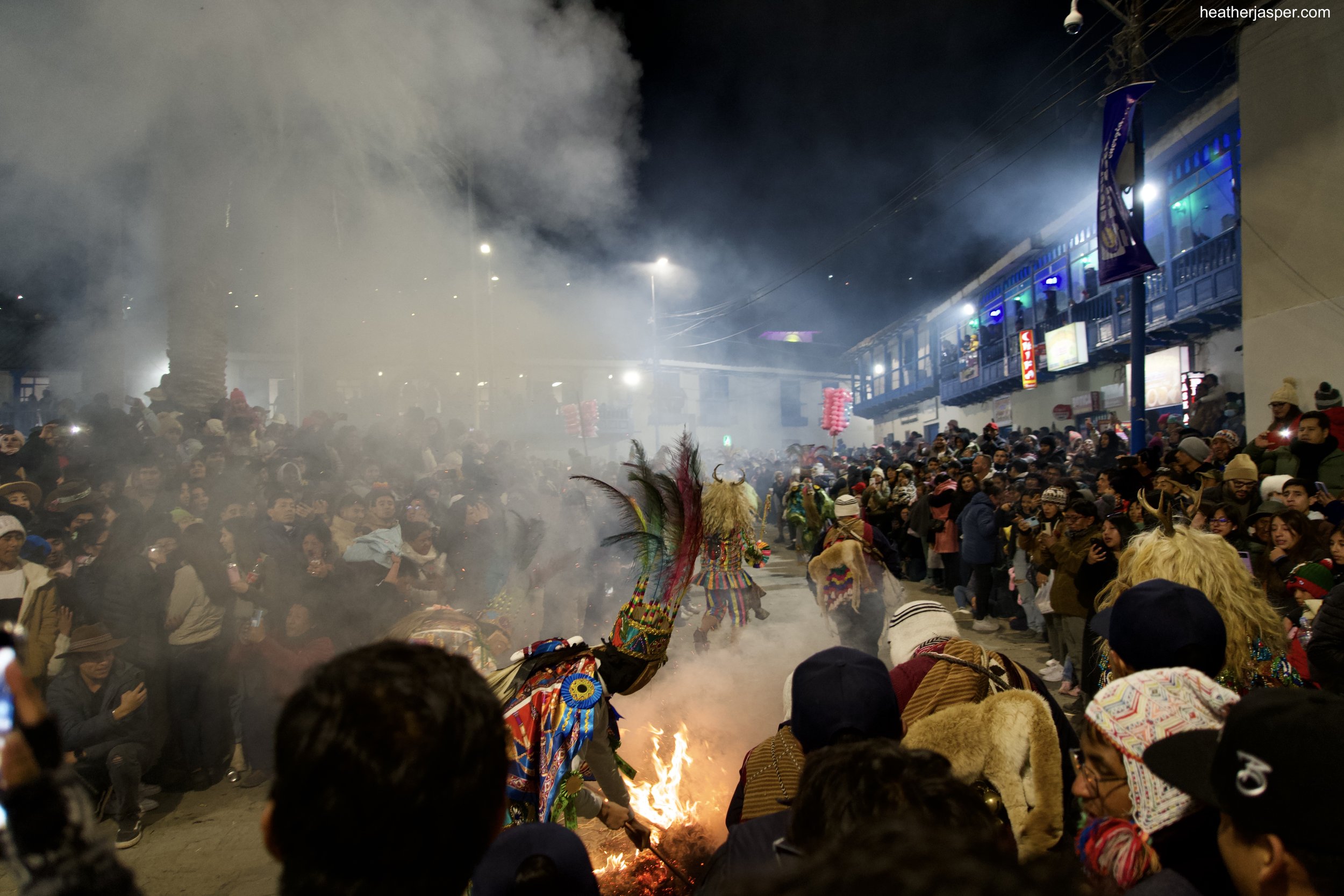
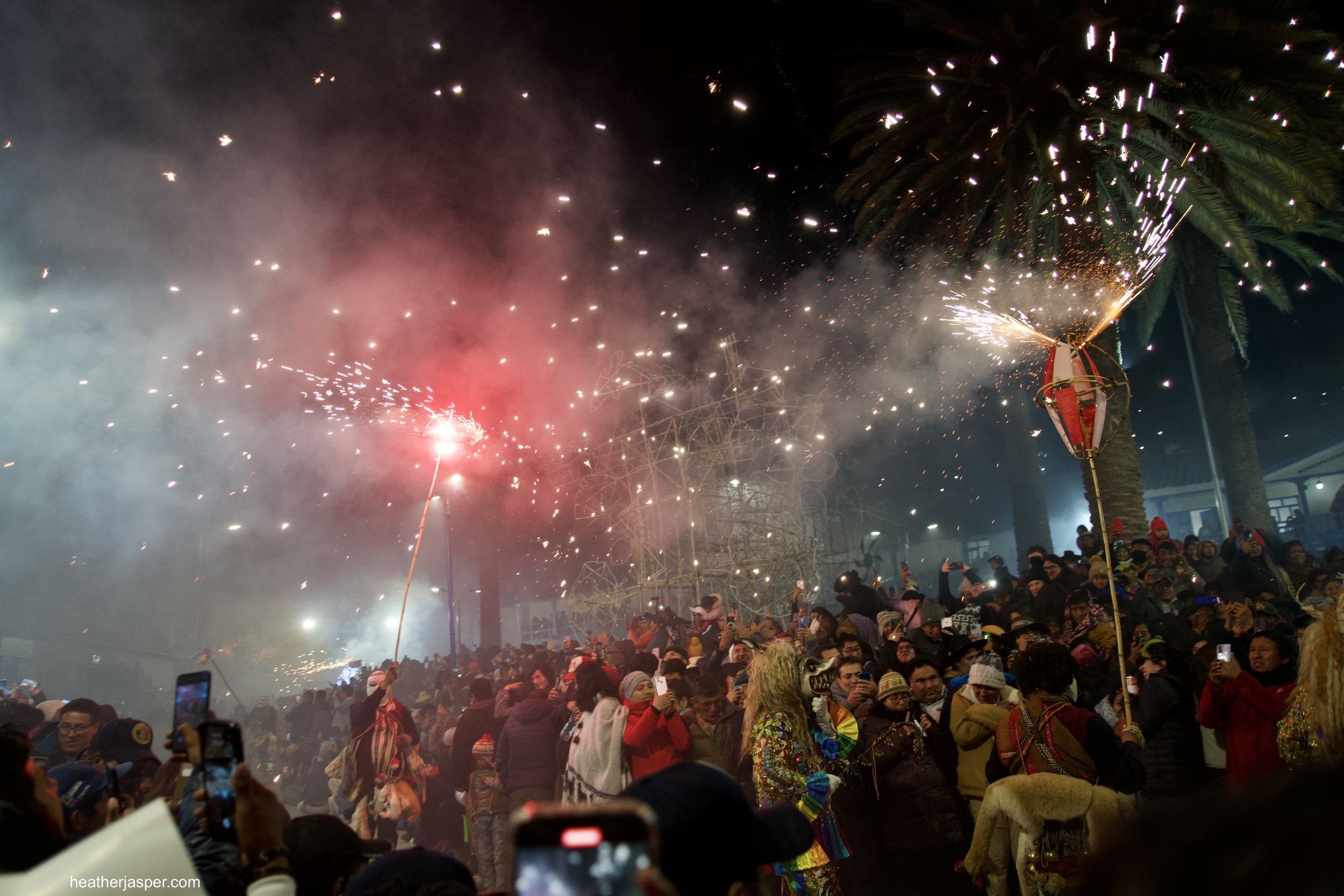
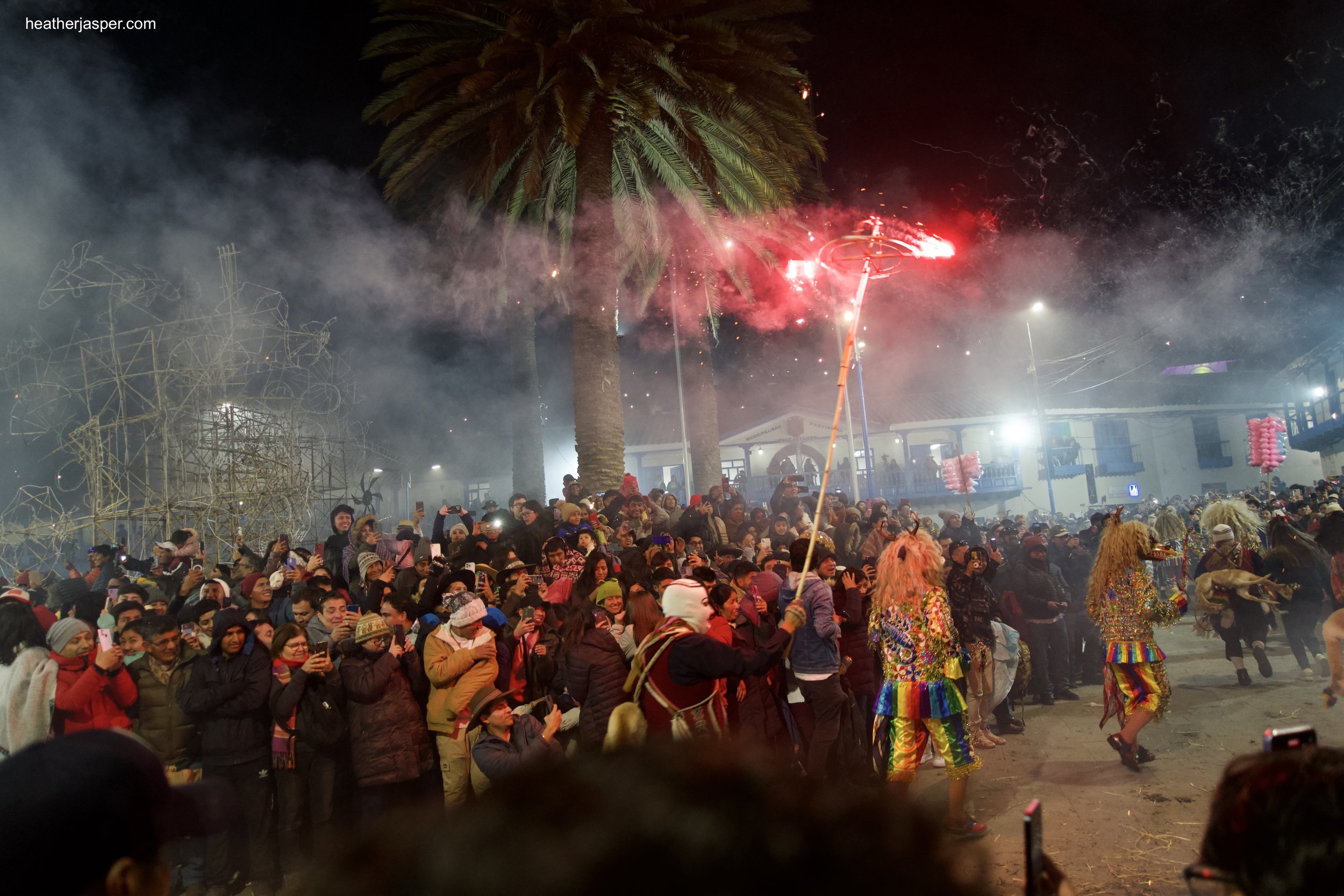
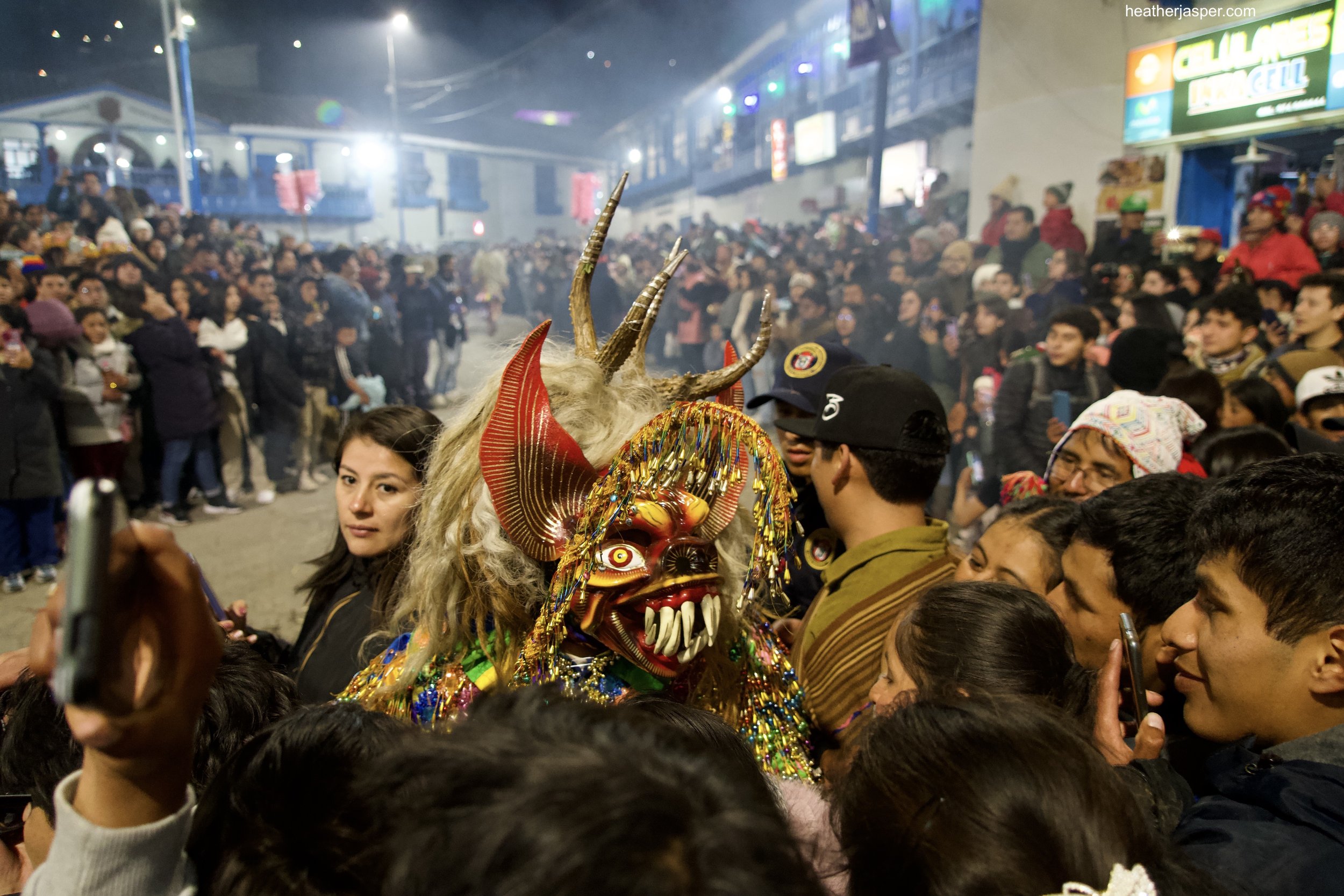
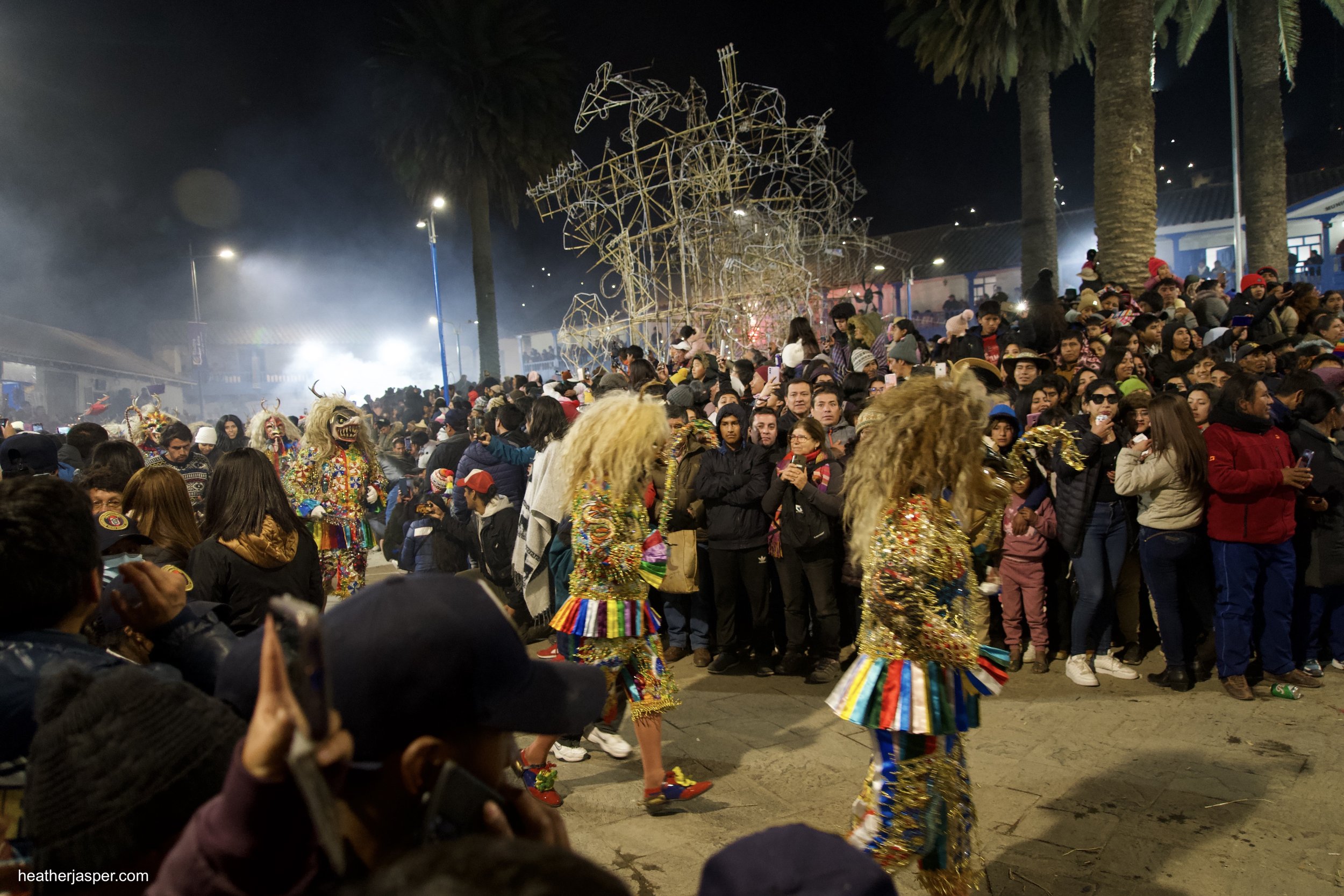
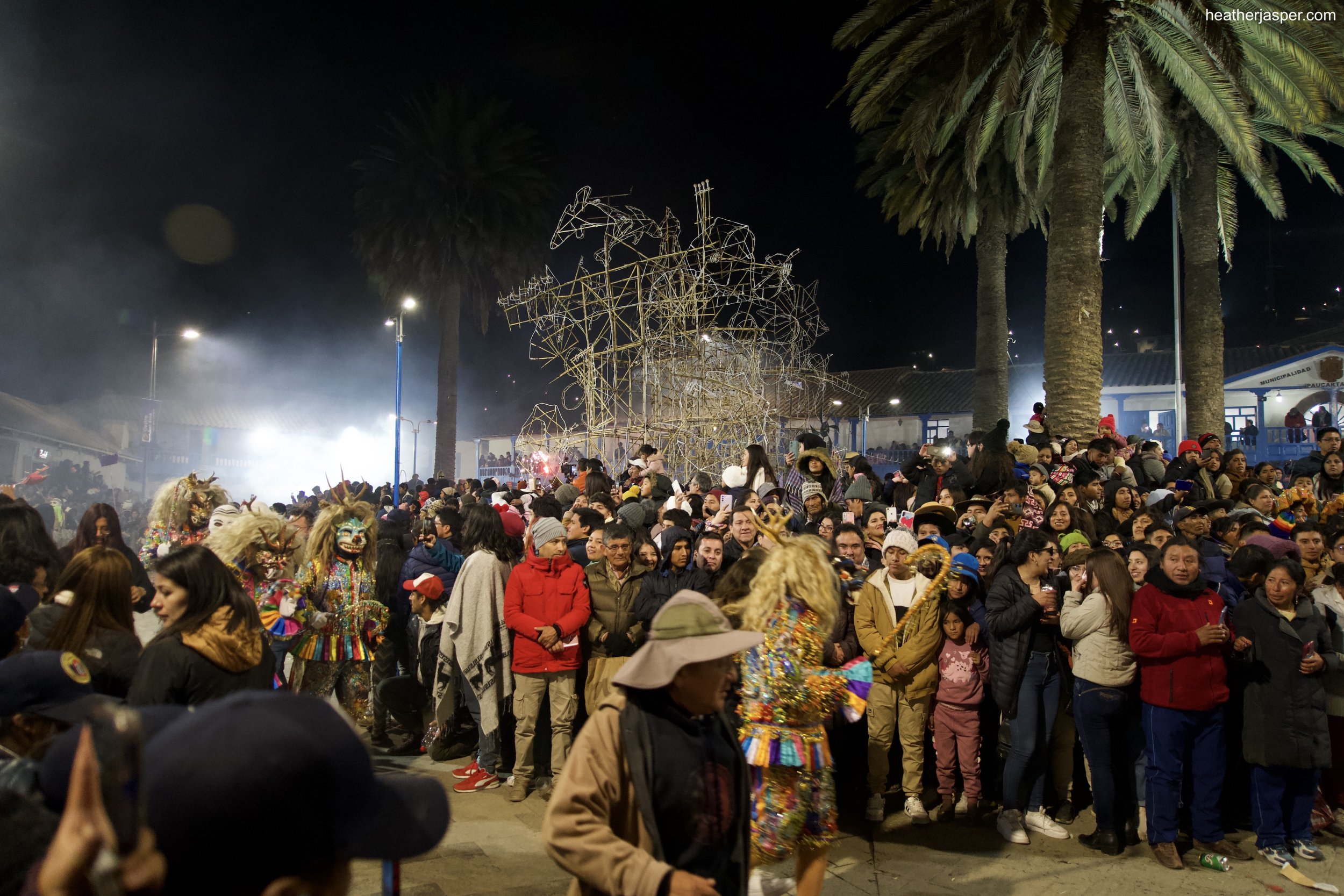

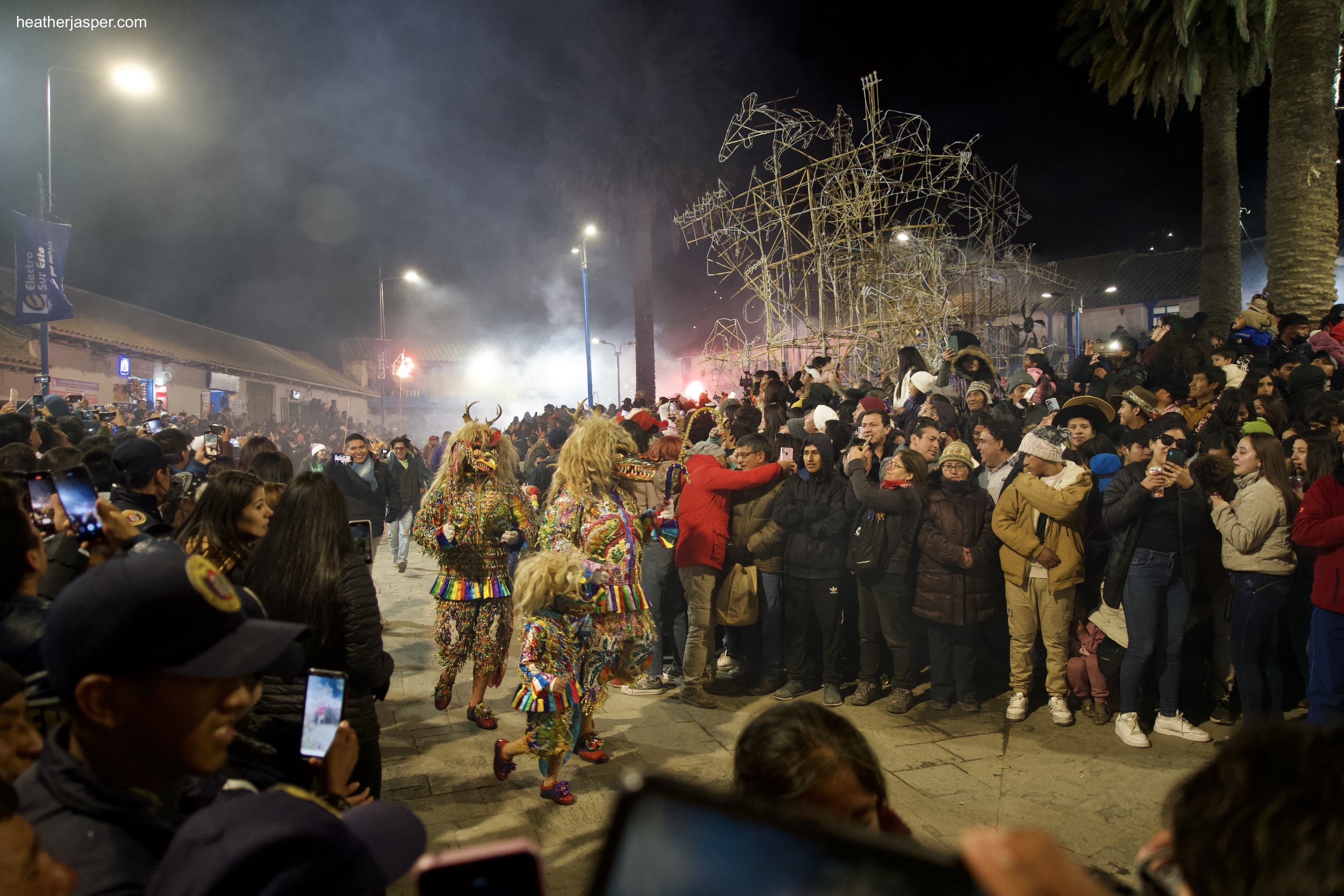
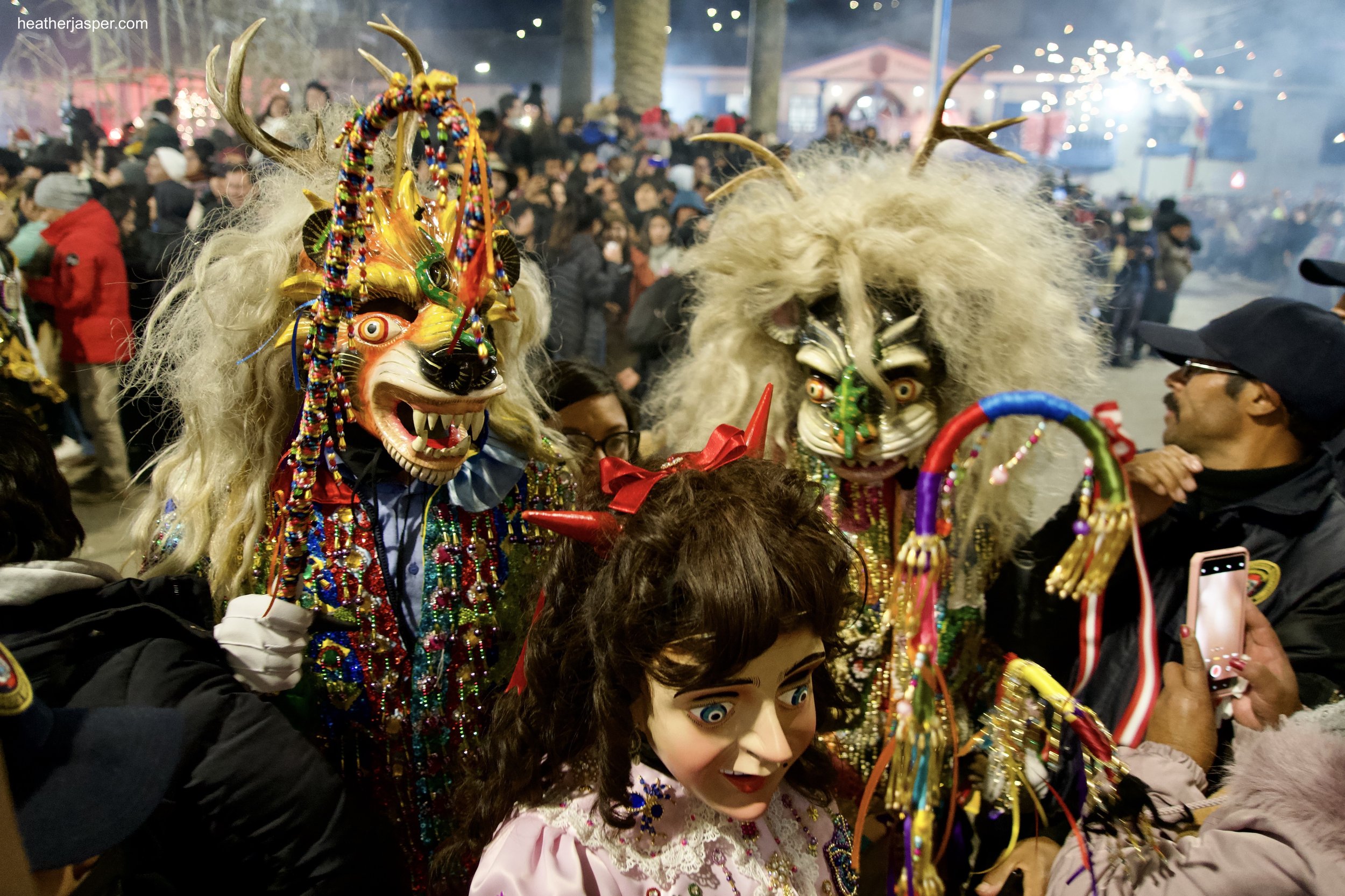
The night of the 15th is one of the most important events of the festival.
The plaza fills with spectators and cuadrillas dance, then run, as fires are lit, and fireworks go off. The Qhapaq Qolla carry long poles with fireworks attached to the top and other comparsas light bales of hay around the corners of the plaza. Dancers jump over the fires, or stomp right through them. Everybody in the plaza is showered with sparks from both the fireworks and fires. I was warned to wear a cotton over shirt on top of my down jacket so embers wouldn’t melt holes in the synthetic fabric.
With the end of the fireworks, the days’ events were over. I went back to Kelly’s house while others filled the plaza, buying beer and té piteado from passing vendors. Té piteado is hot black tea spiked with pisco and very popular in Cusco on cold nights.
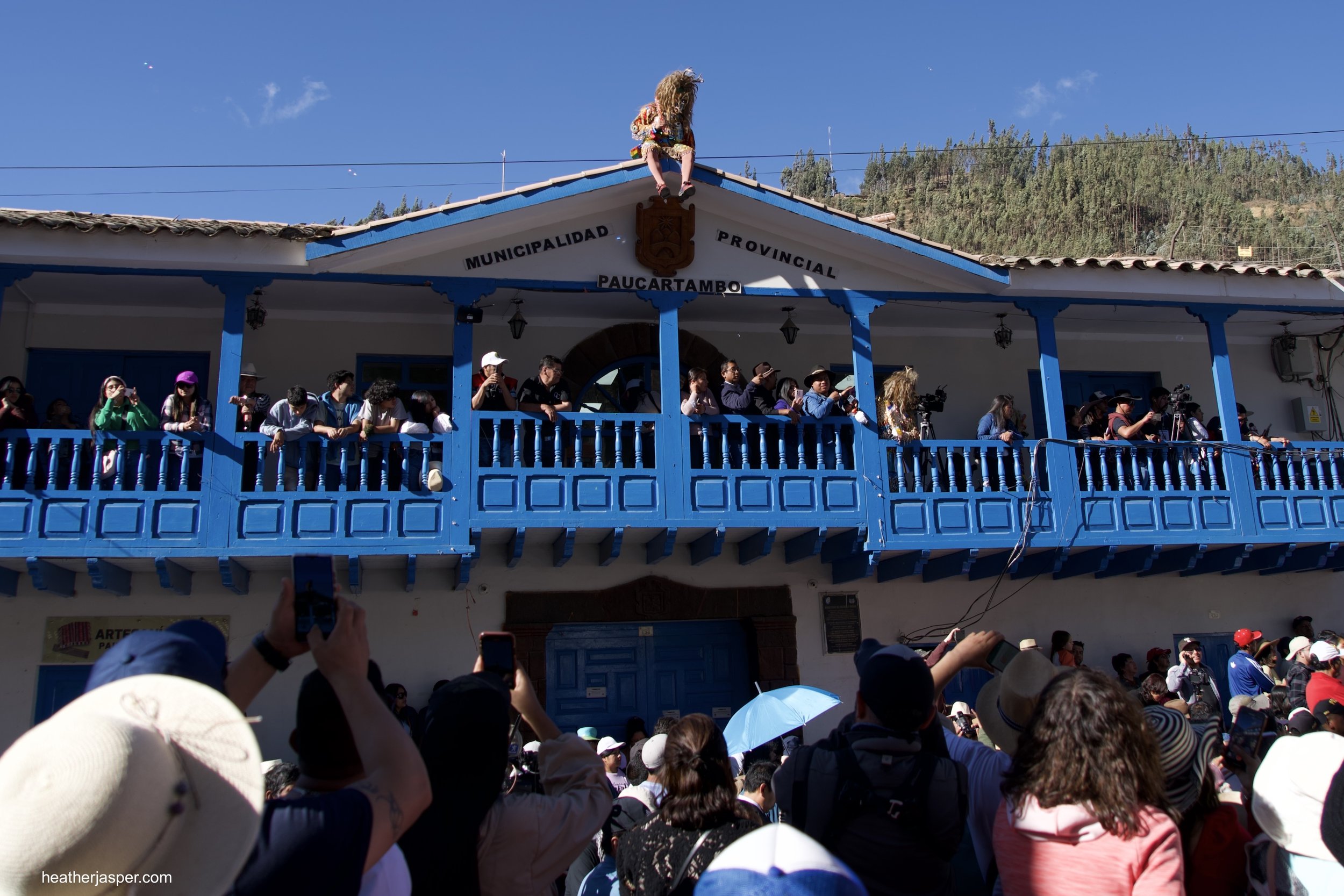
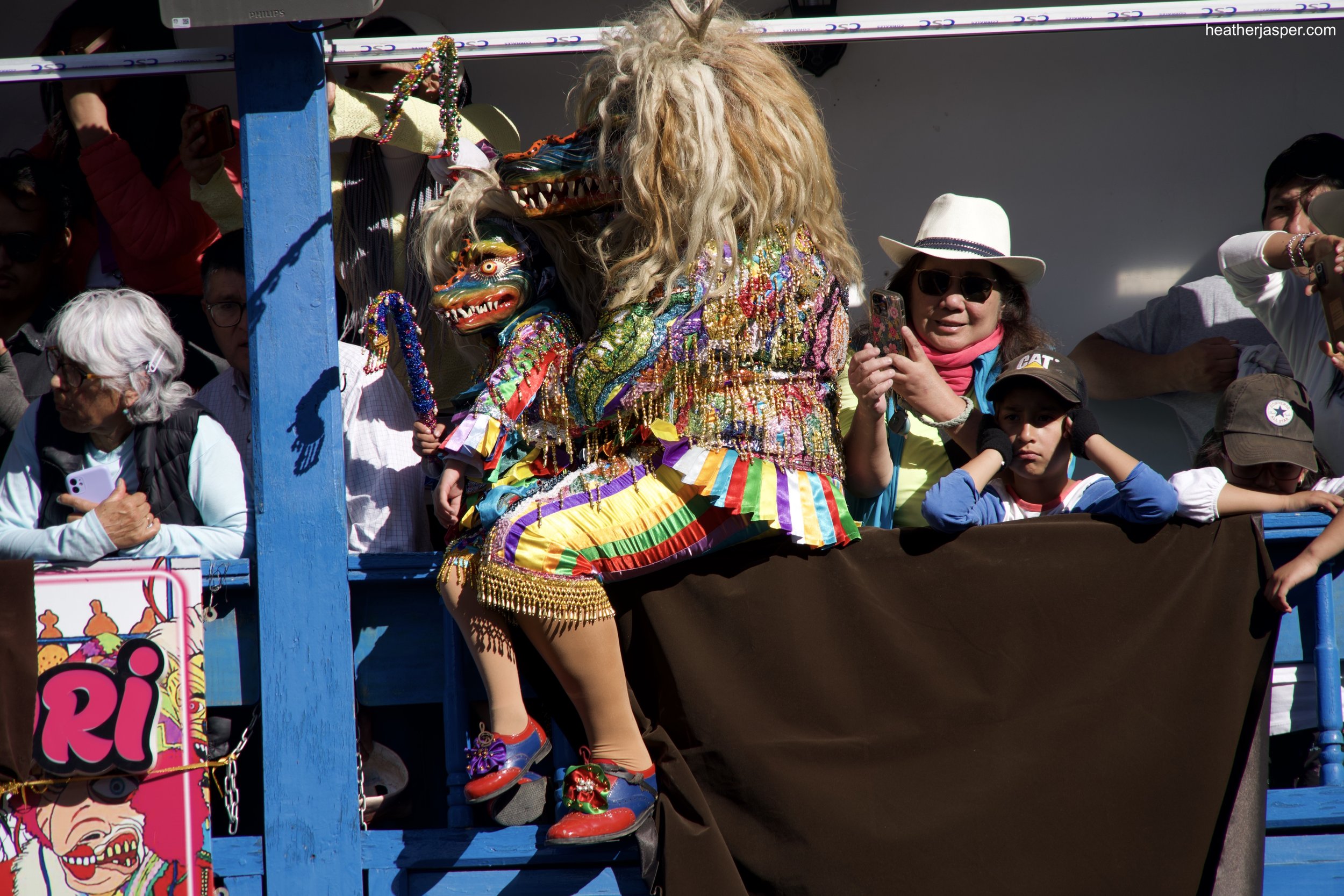
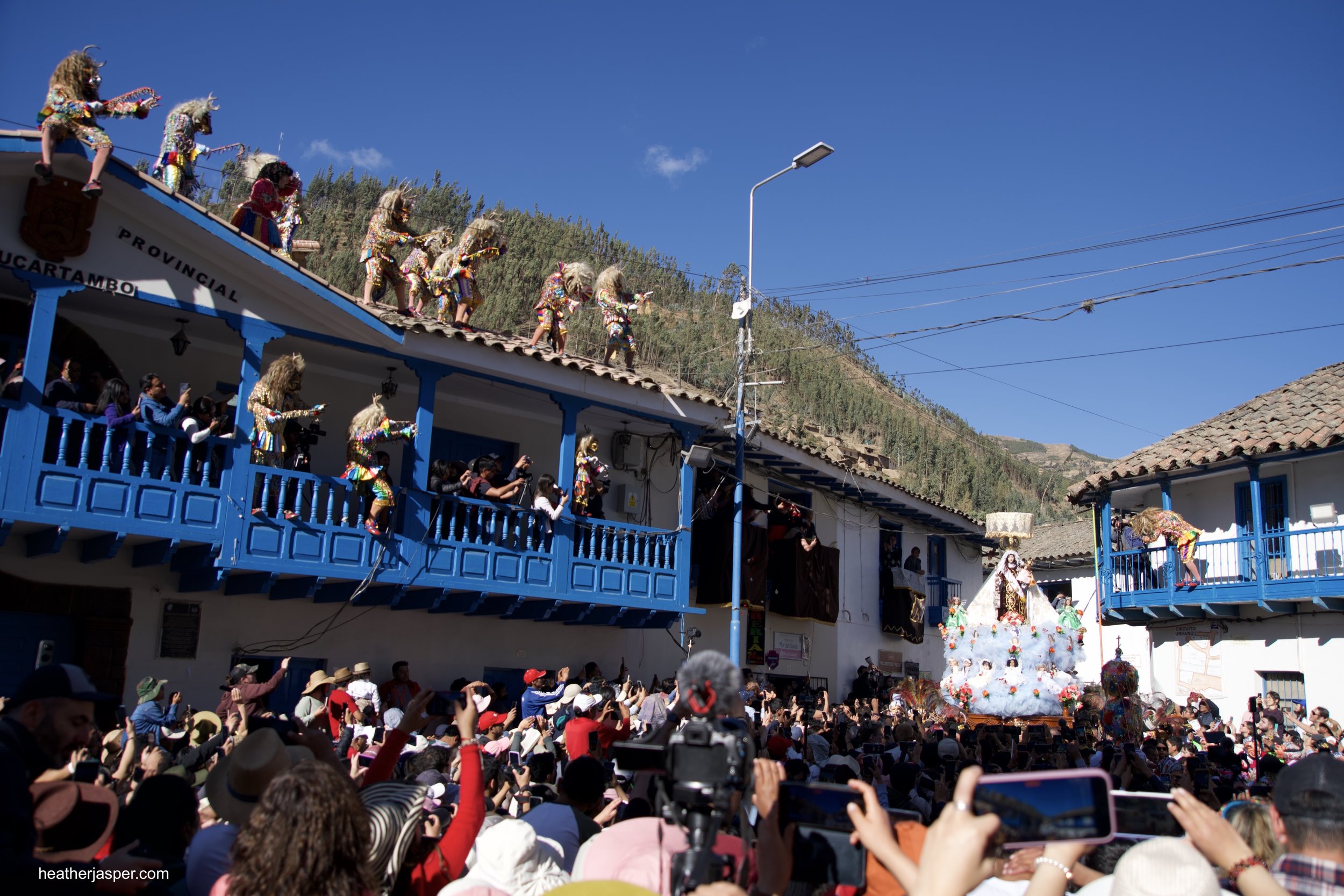
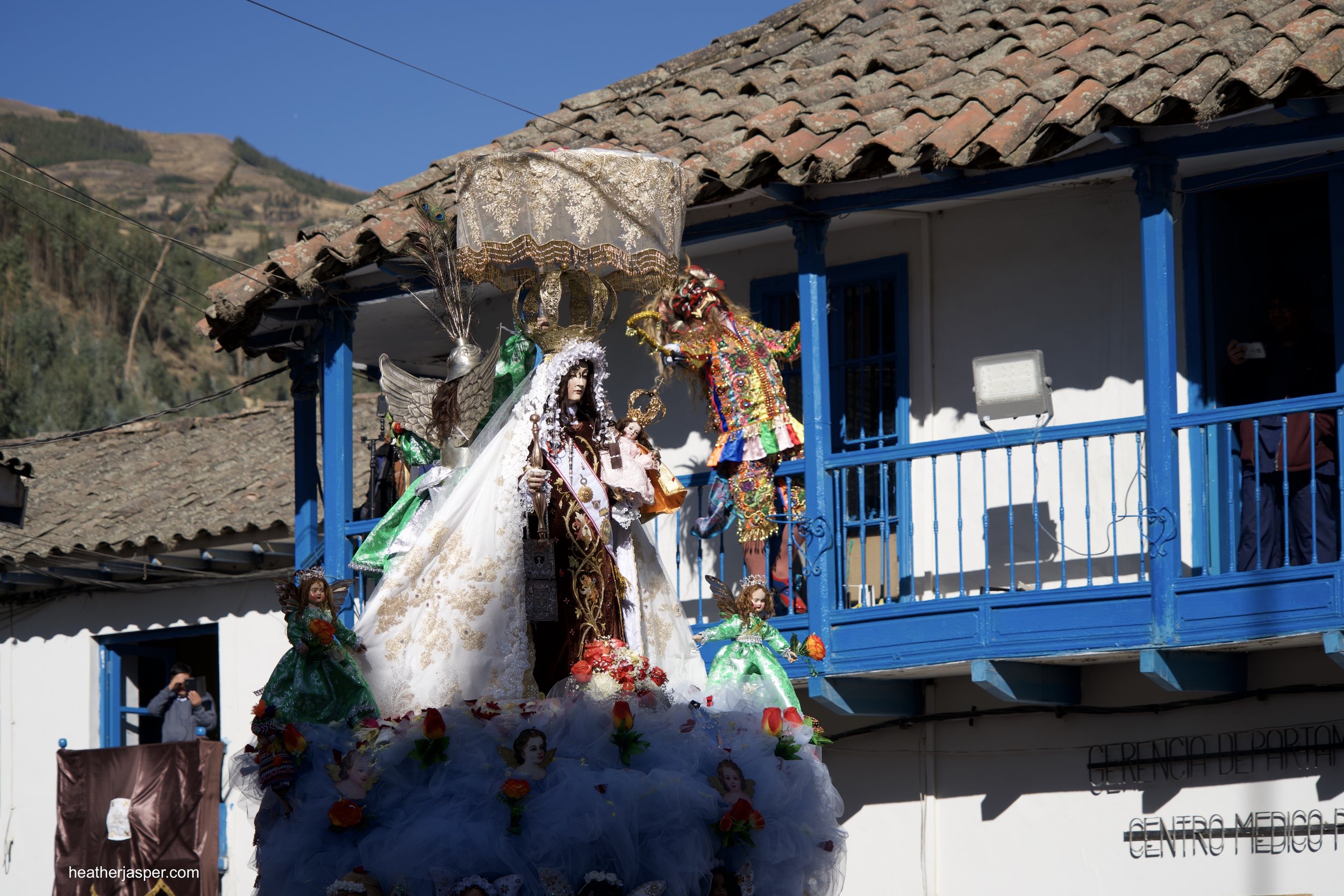
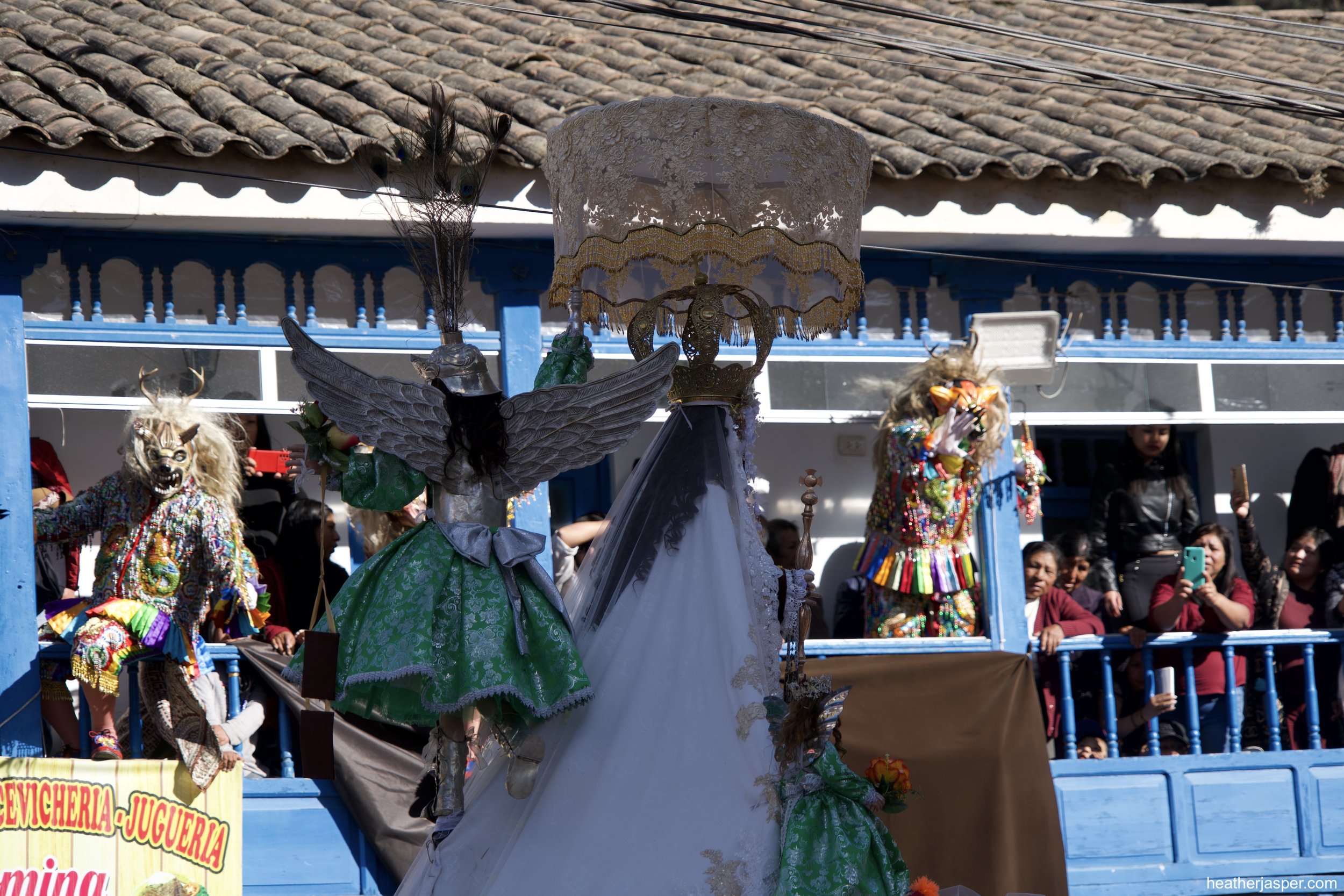
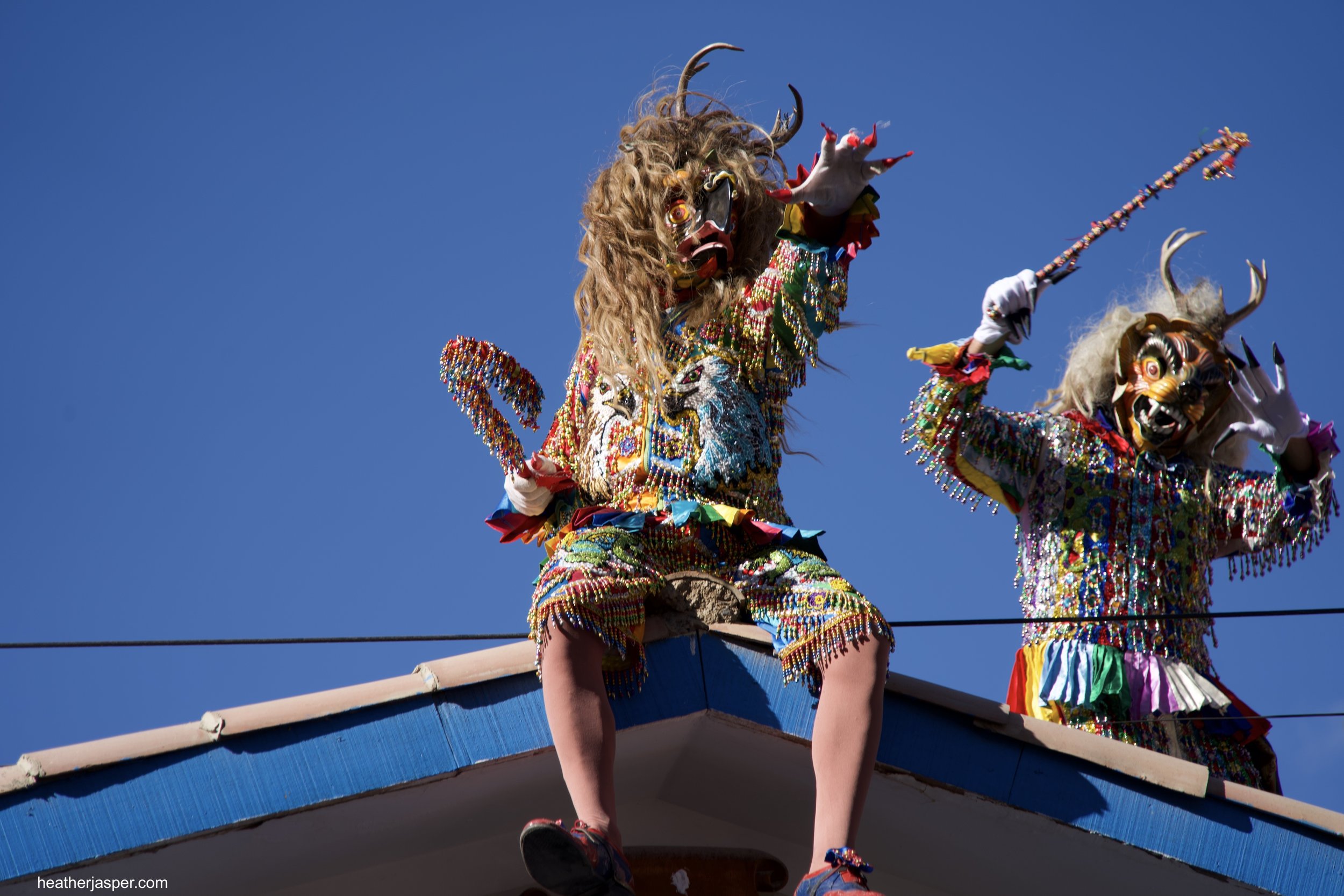
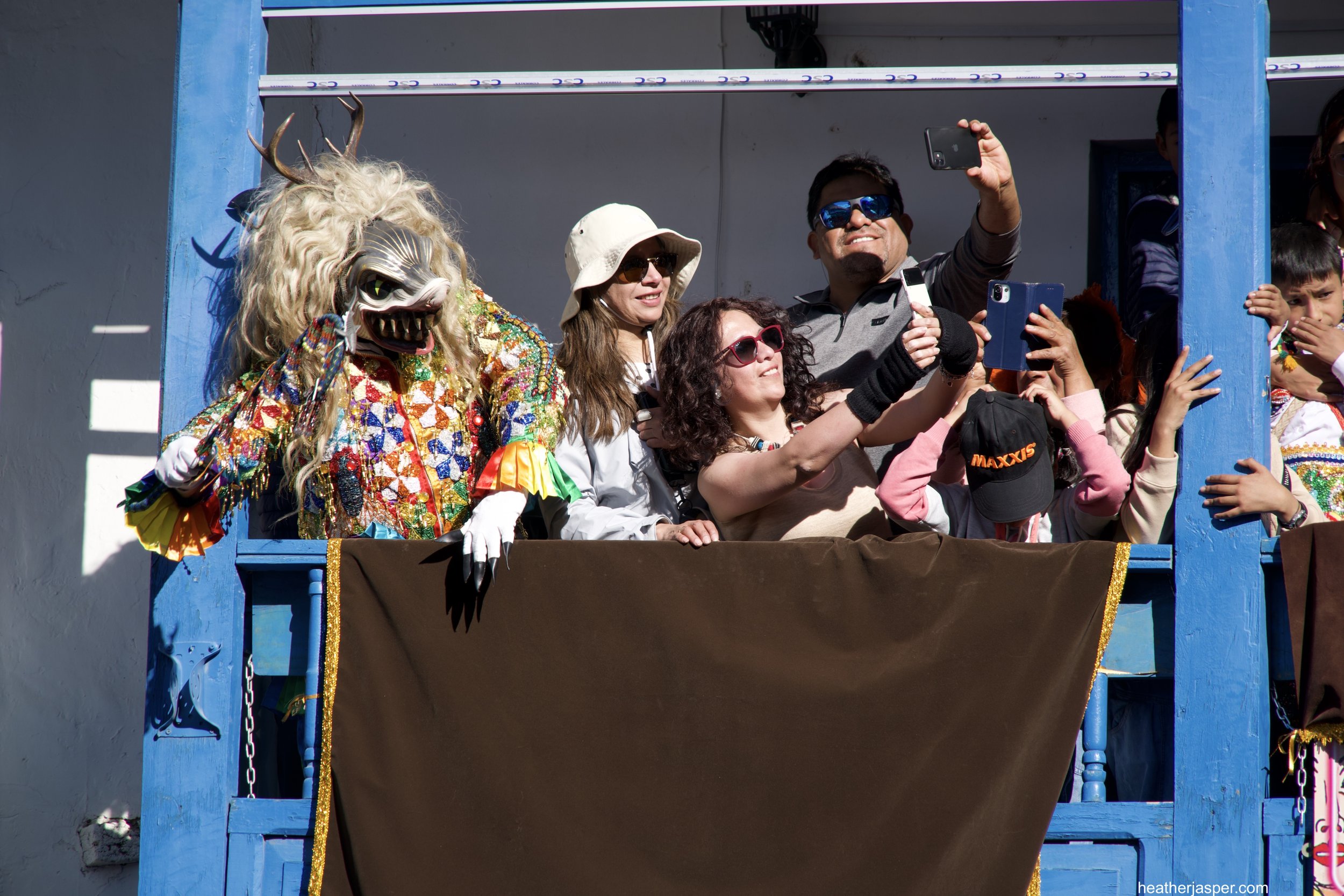
Sunday, July 16
After mass in the morning, the statue of the Virgin of Carmen is paraded from the church to and around the plaza. Most of the cuadrillas dance before or after her, but the Saqra climb up on the roofs around the plaza. Rather than dance, they reach out with their garabatos as if they could hook her. They alternate towards leaning towards her with the garabatos outstretched and leaning back, holding up their hands as if to shield themselves from her.
The crowd loves the Saqra. I was one of hundreds of people with my camera pointed upwards, taking photos of the Saqras on the roofs. Many other Saqras perch in the balconies around the plaza, reaching their garabatos out towards the Virgin while spectators snap selfies with the devils. After the Virgin leaves the plaza, the Saqras got a bit of a break and went back to their cargo wasi.
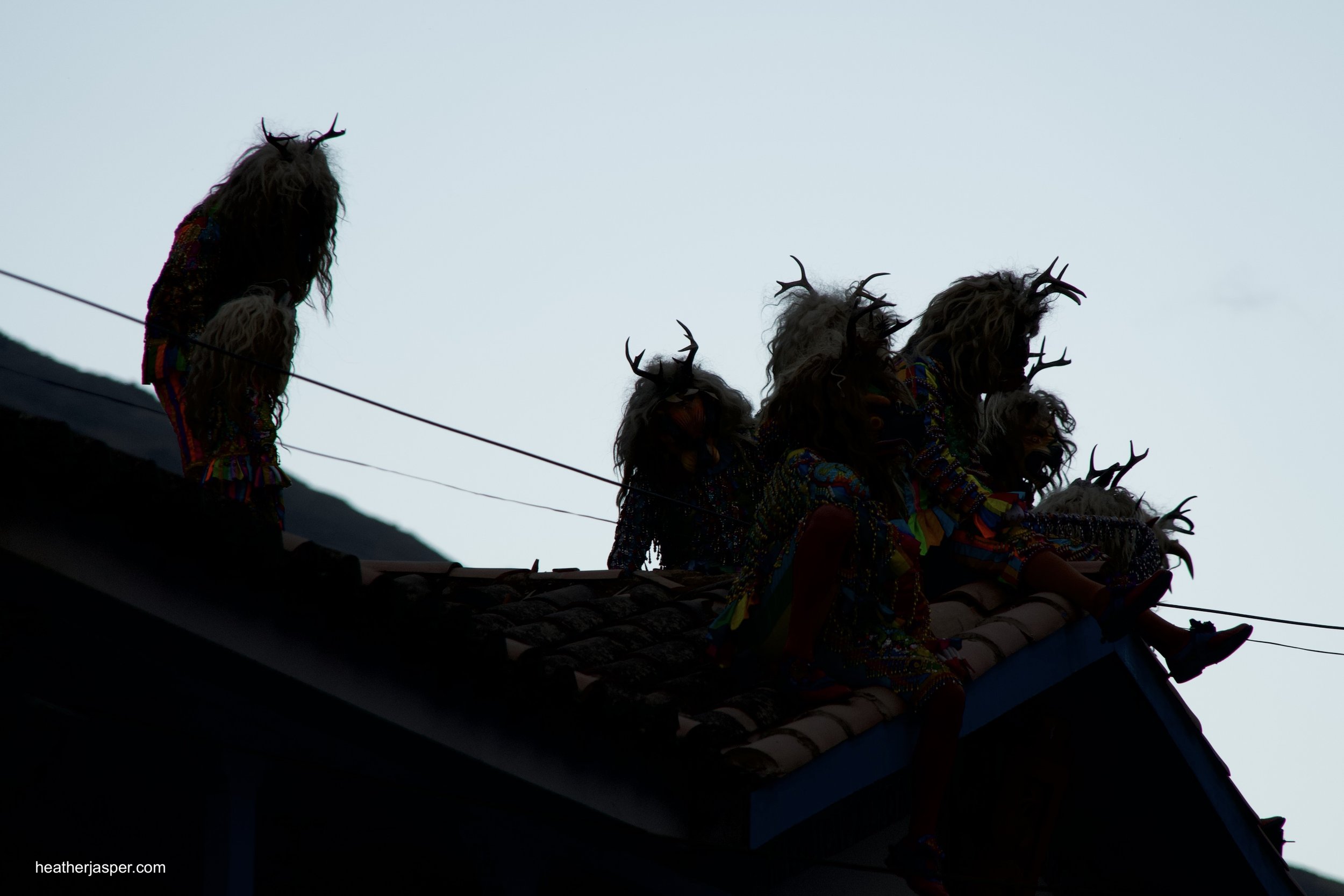
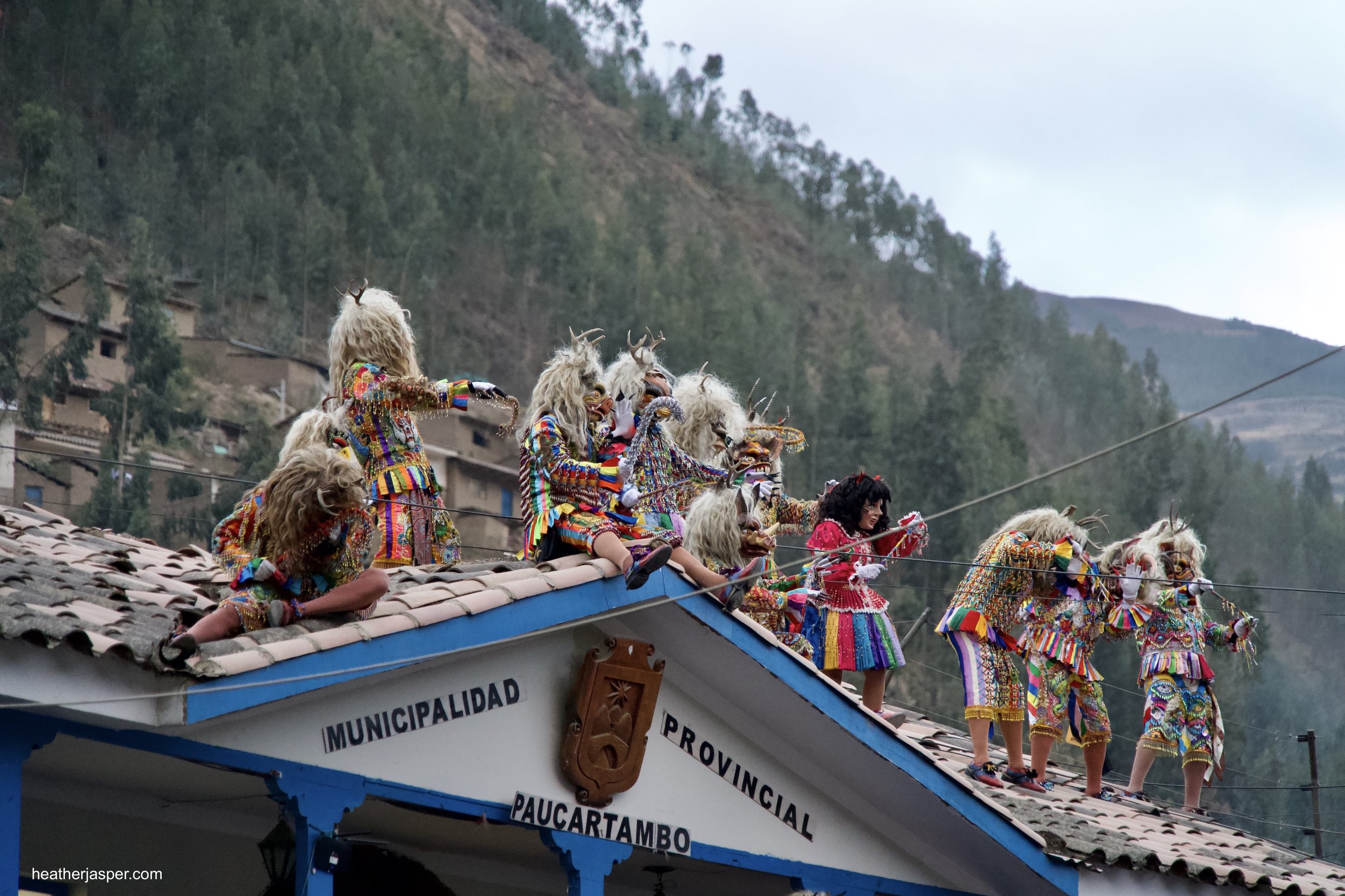

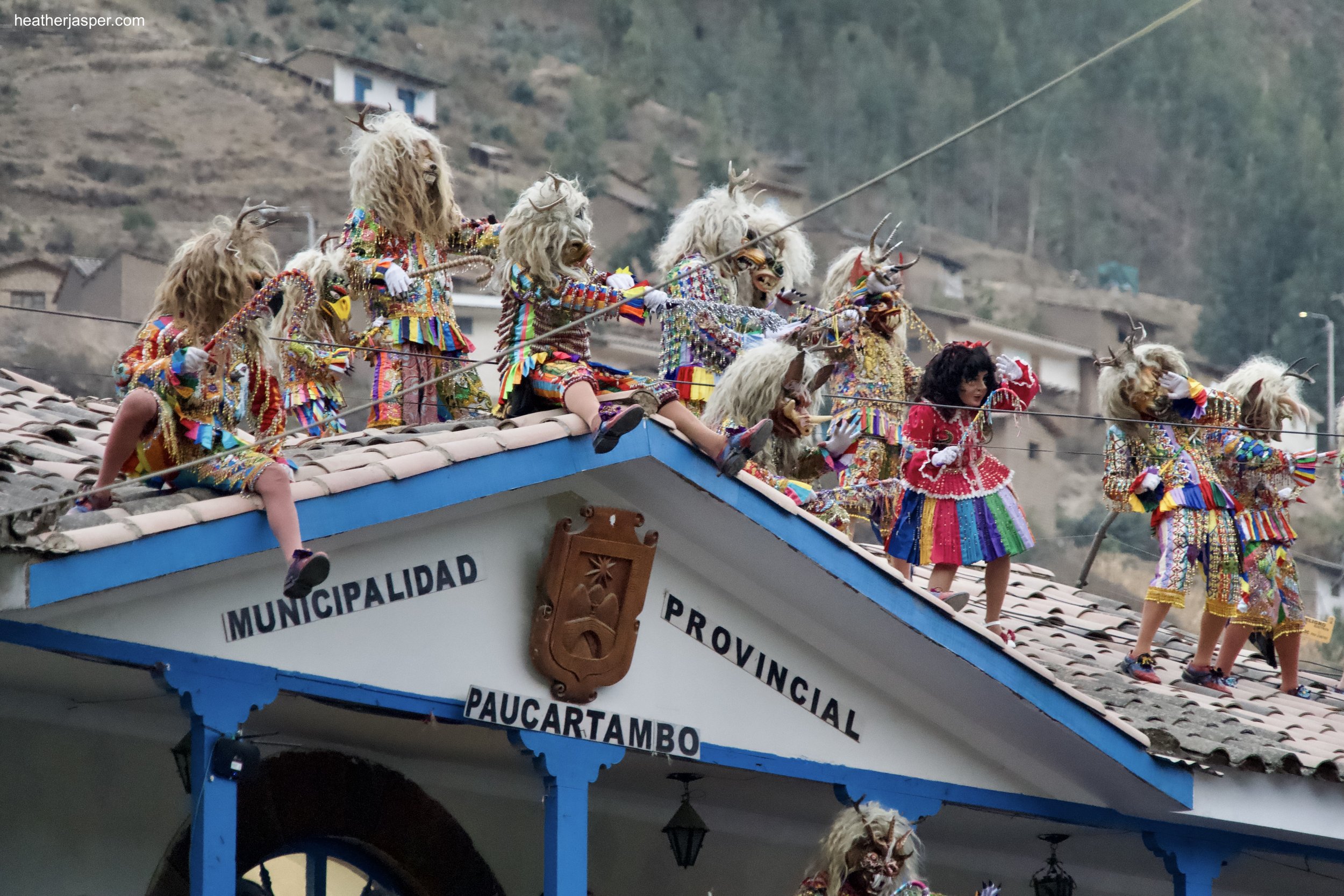
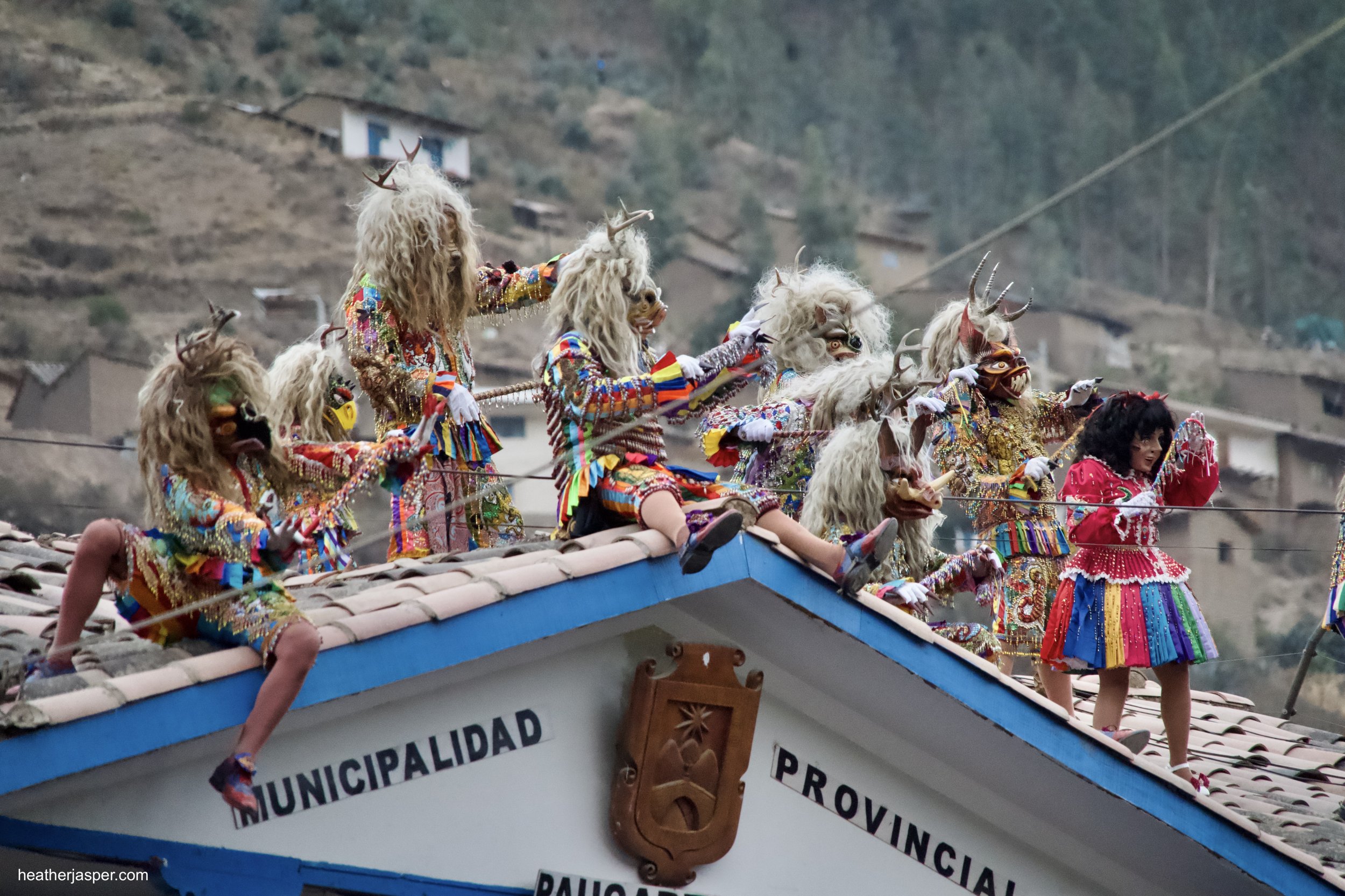

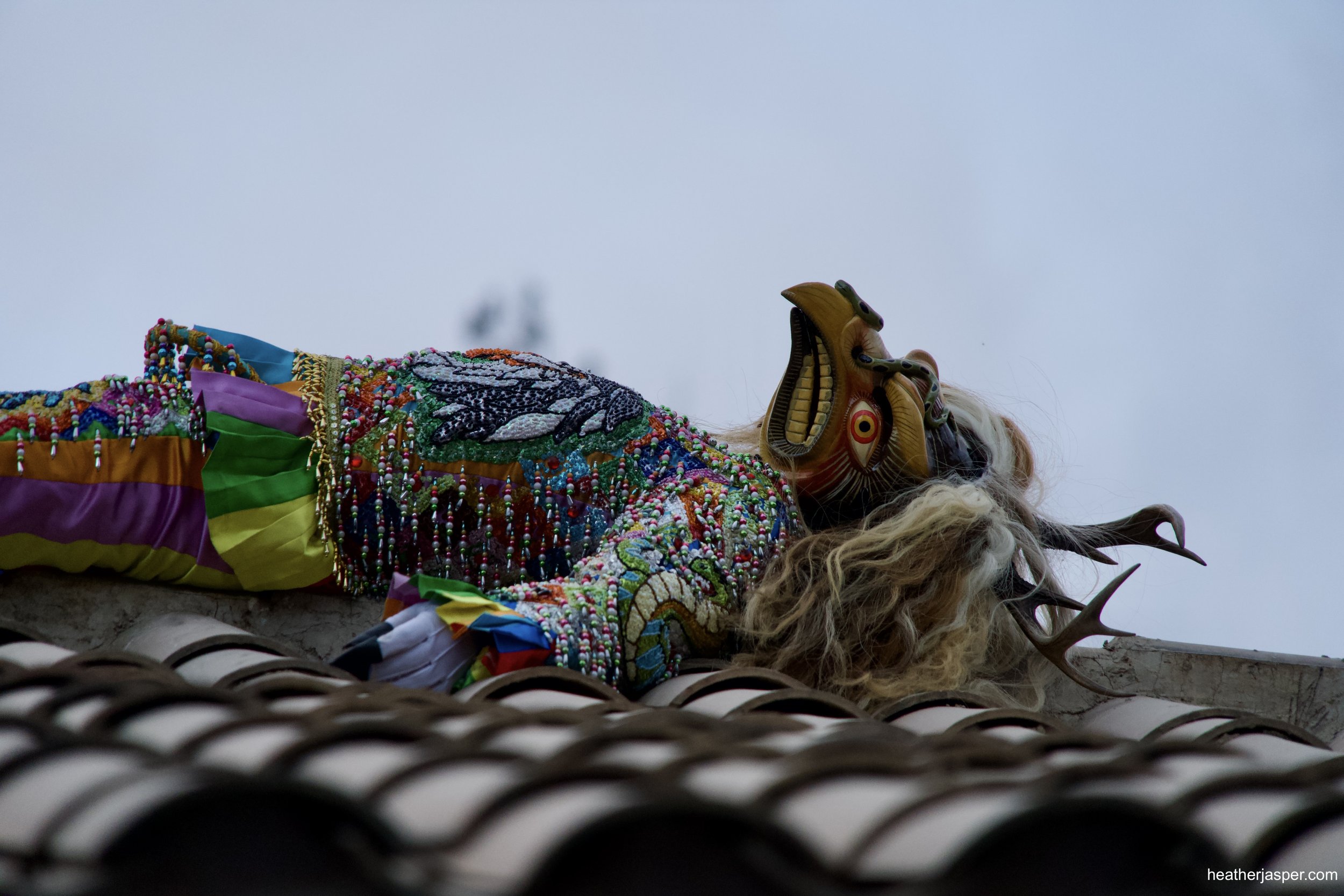
In the evening, the Virgin is paraded around the plaza again, and the Saqra get back up on the roofs for the same performance. When they fail to hook the Virgin with their garabatos, they lay down on the roofs as if defeated by her power.
One important event that I couldn’t see from below in the plaza was a proposal. One of the Saqra, Enrique Medina, proposed to the Saqra China. It’s the first time in the 100 year history of the cuadrilla that one of the Saqra will marry the China. (I’ll write more about that story for the 2024 festival for the Virgin of Carmen).
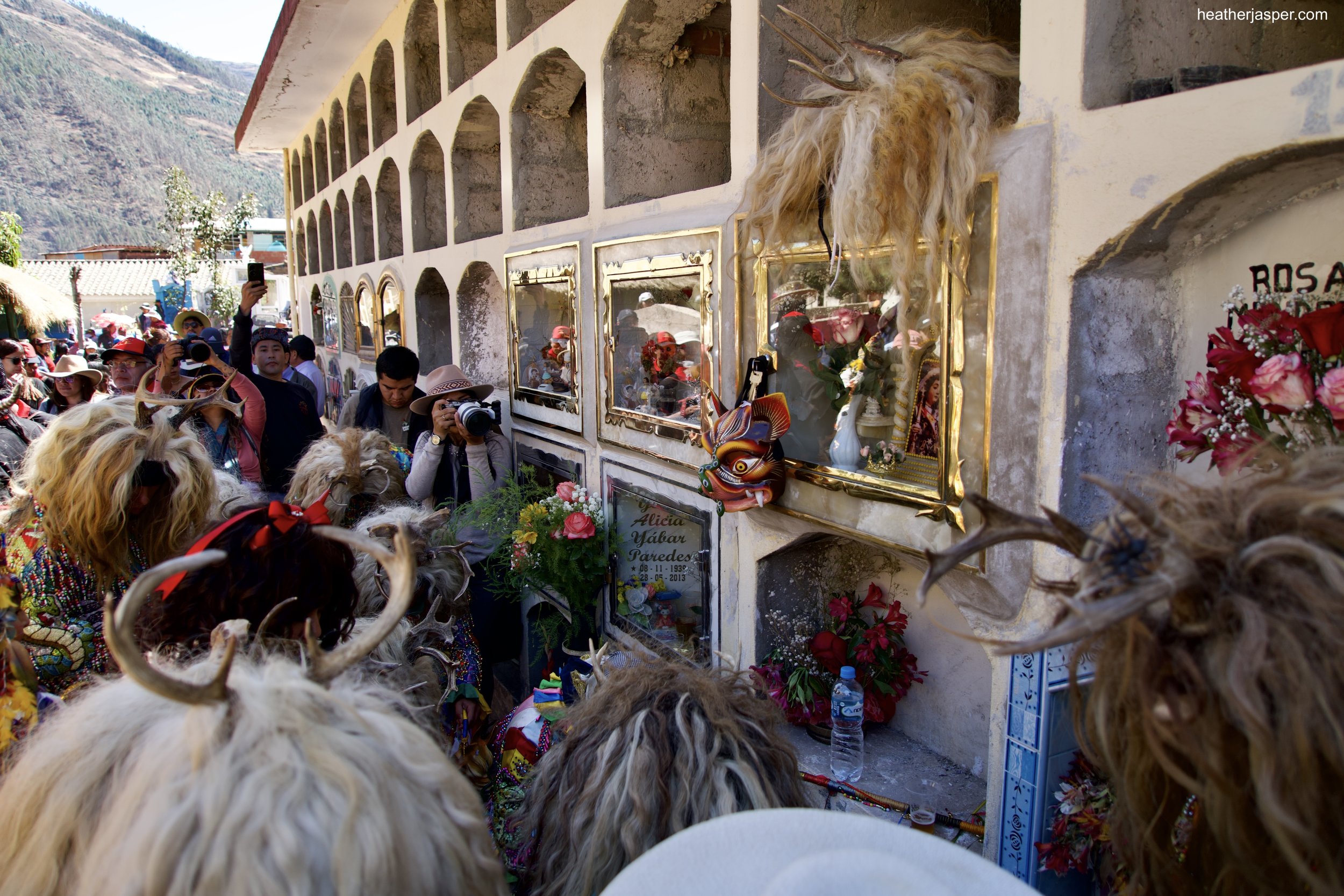
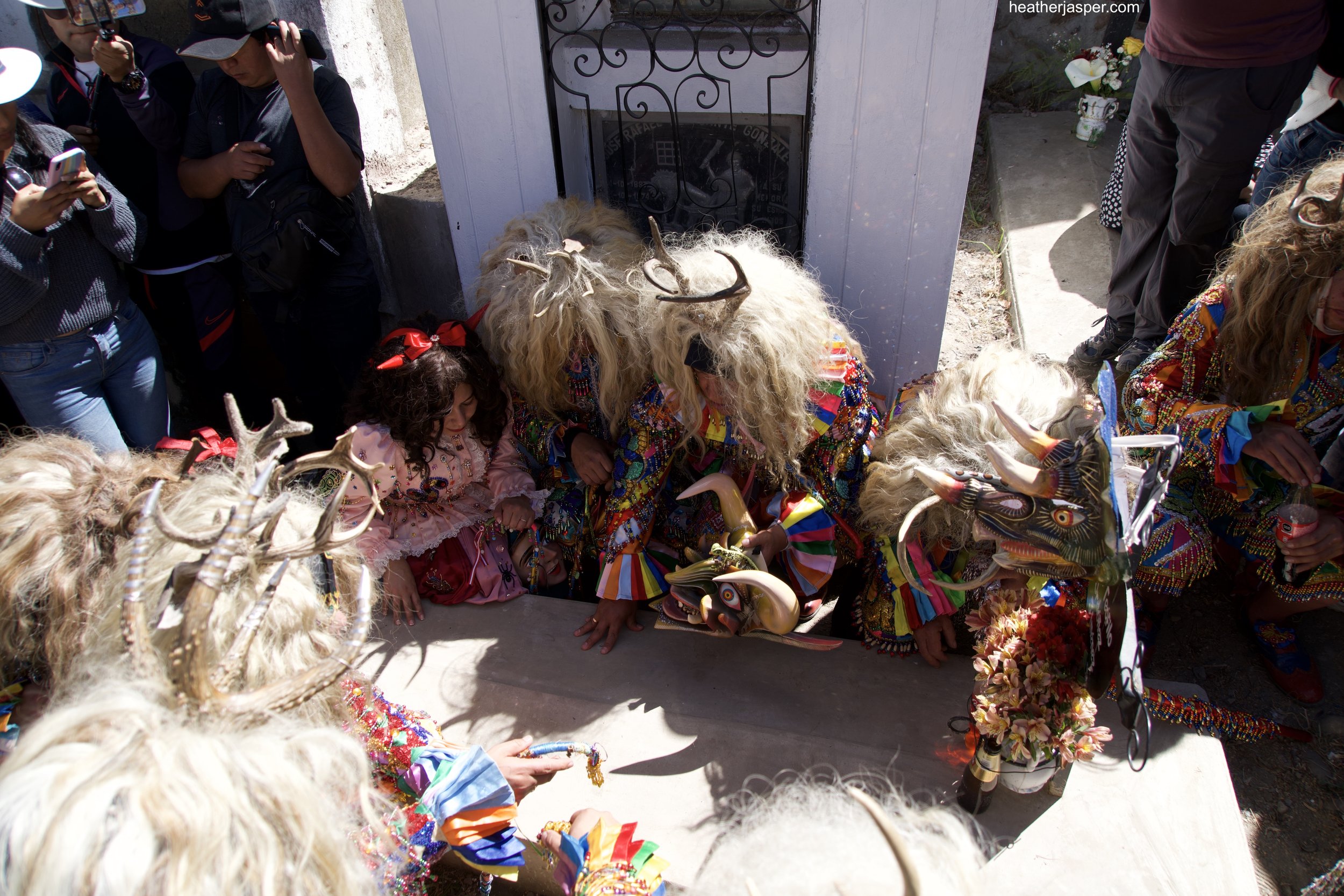
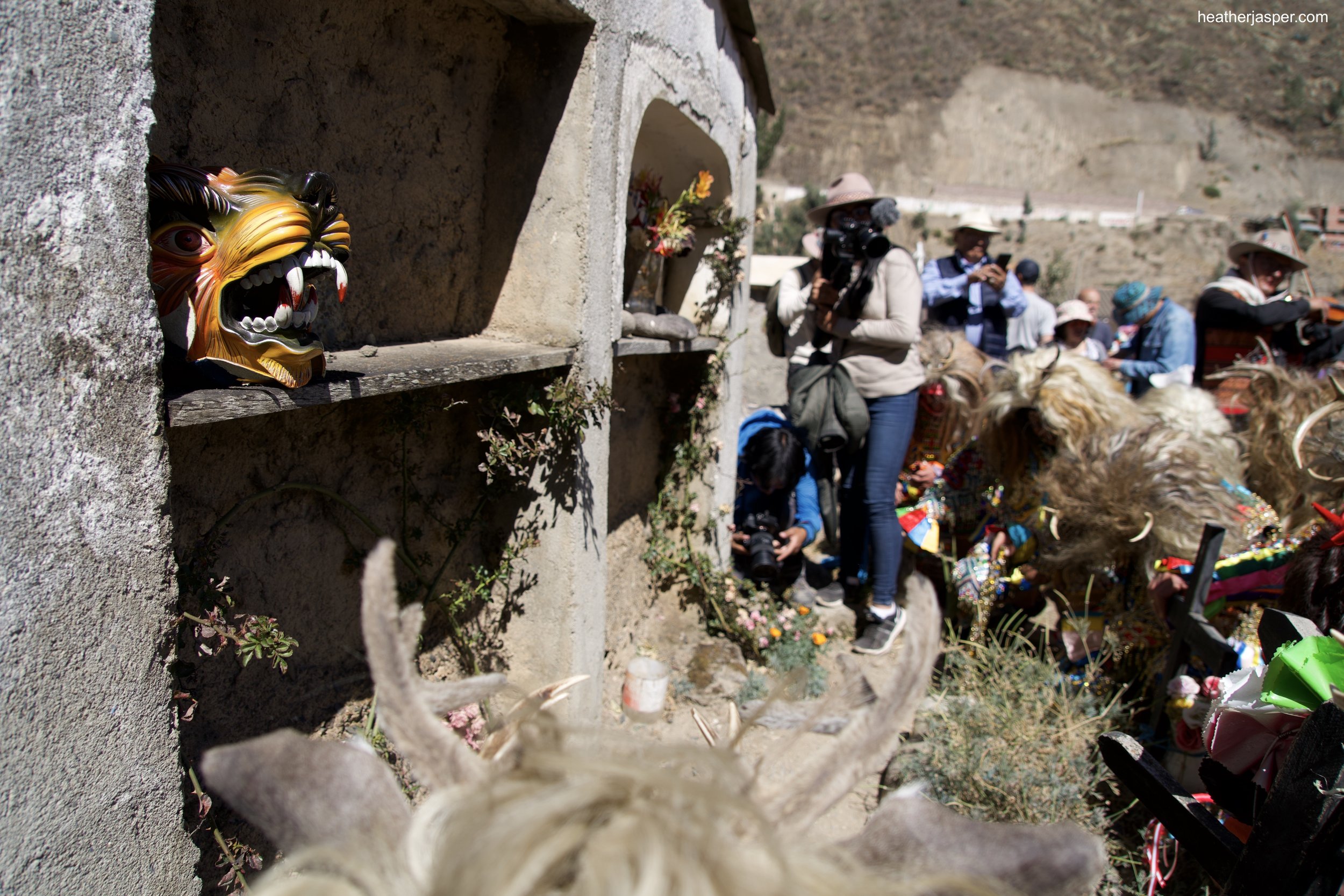
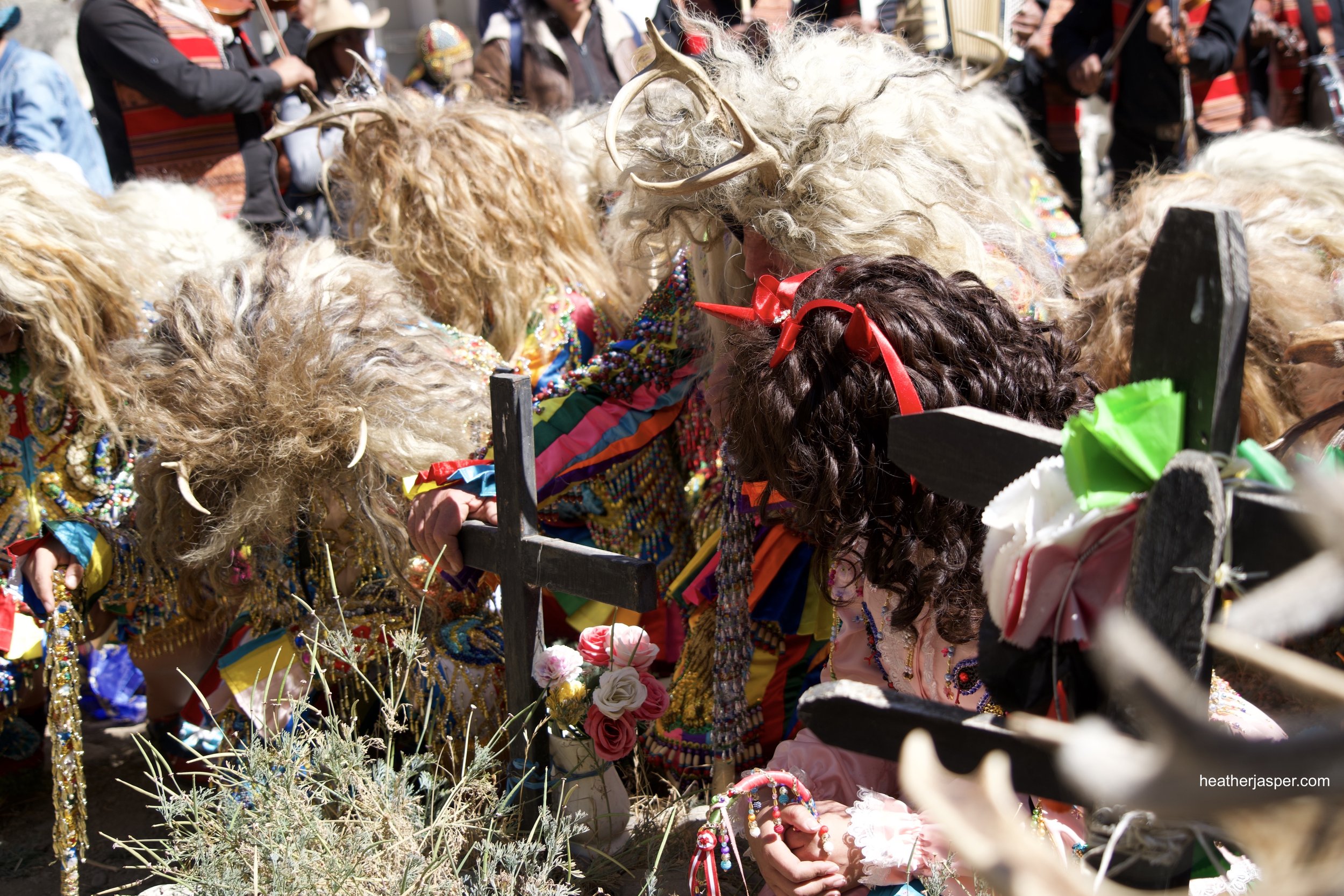
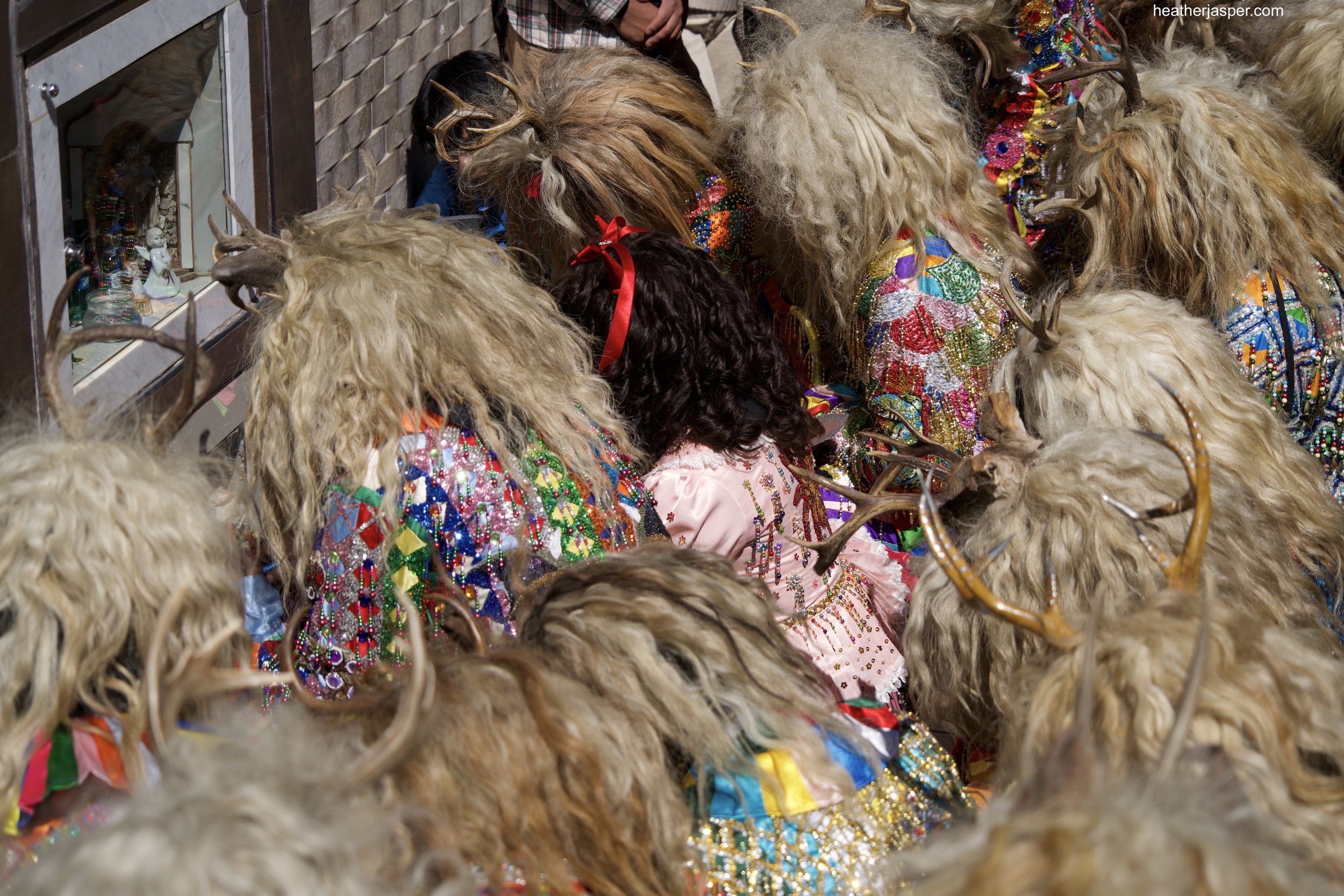
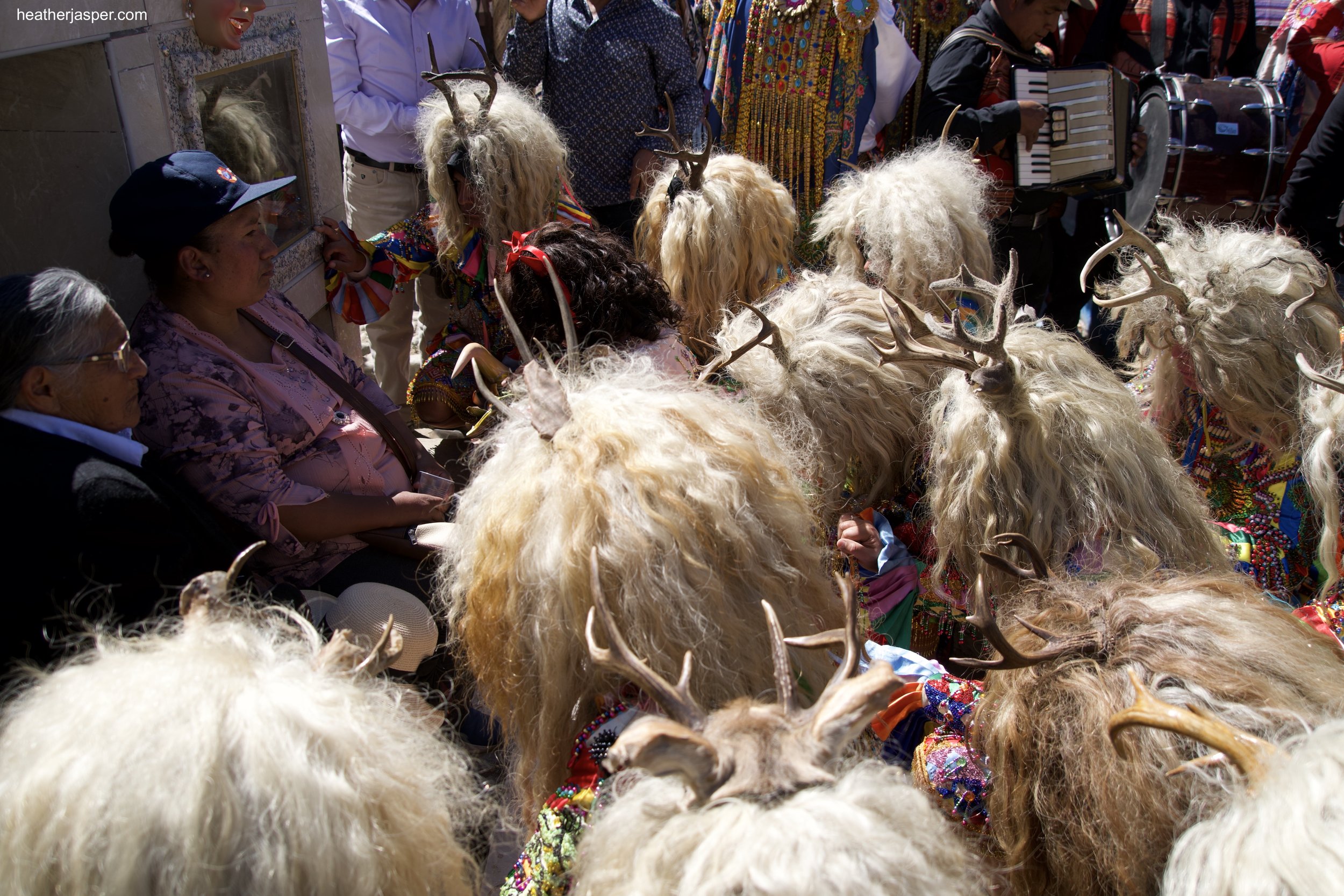
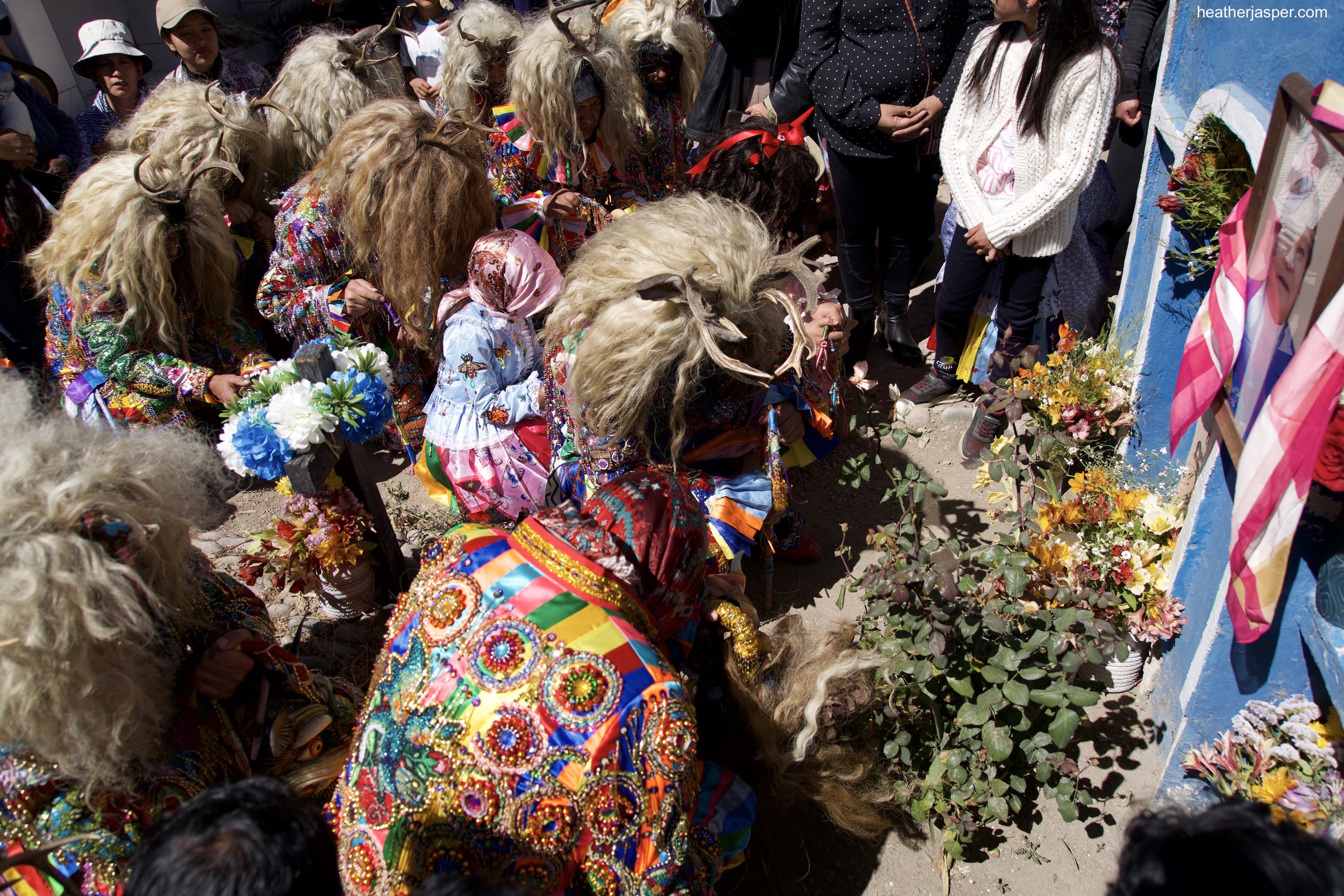
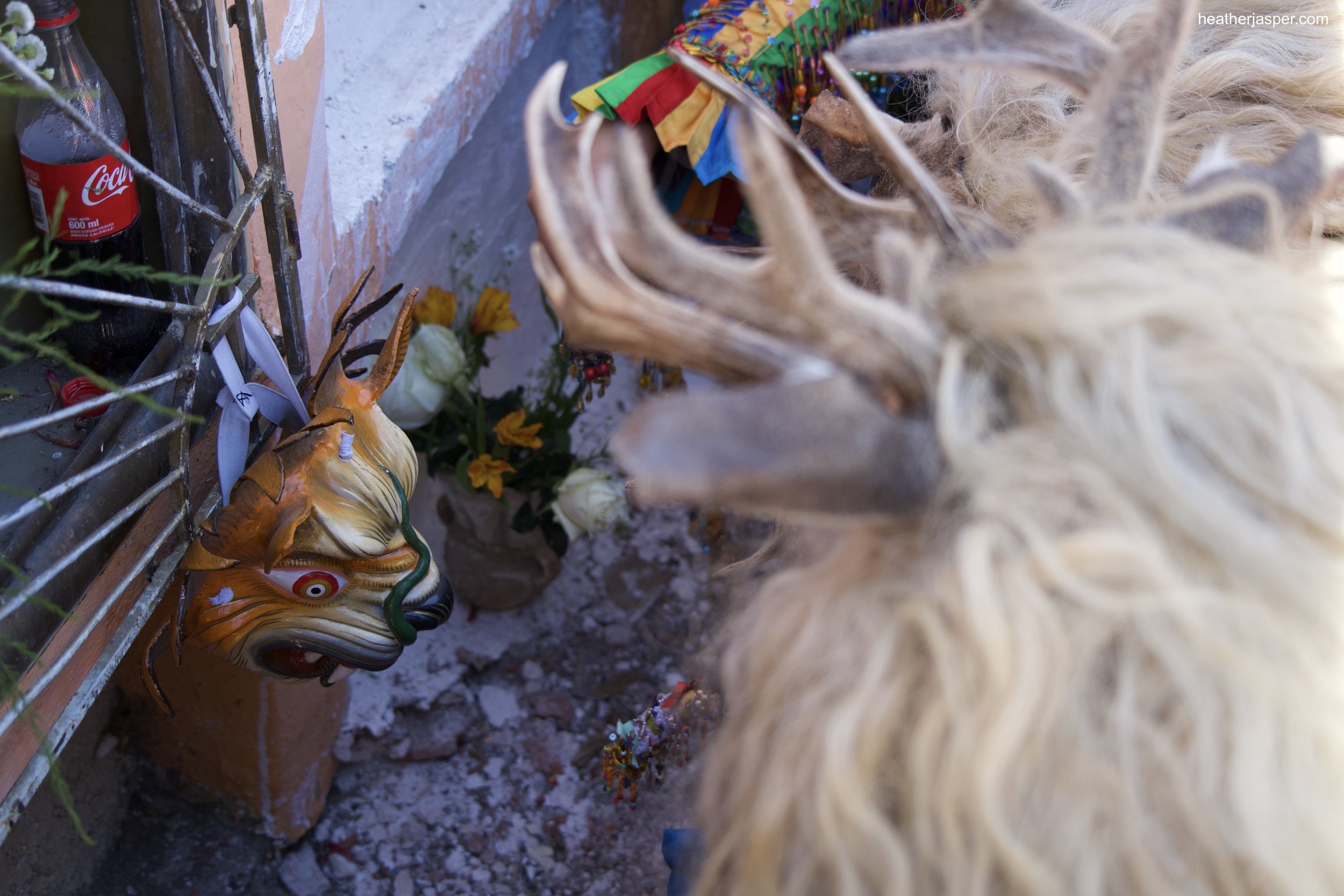

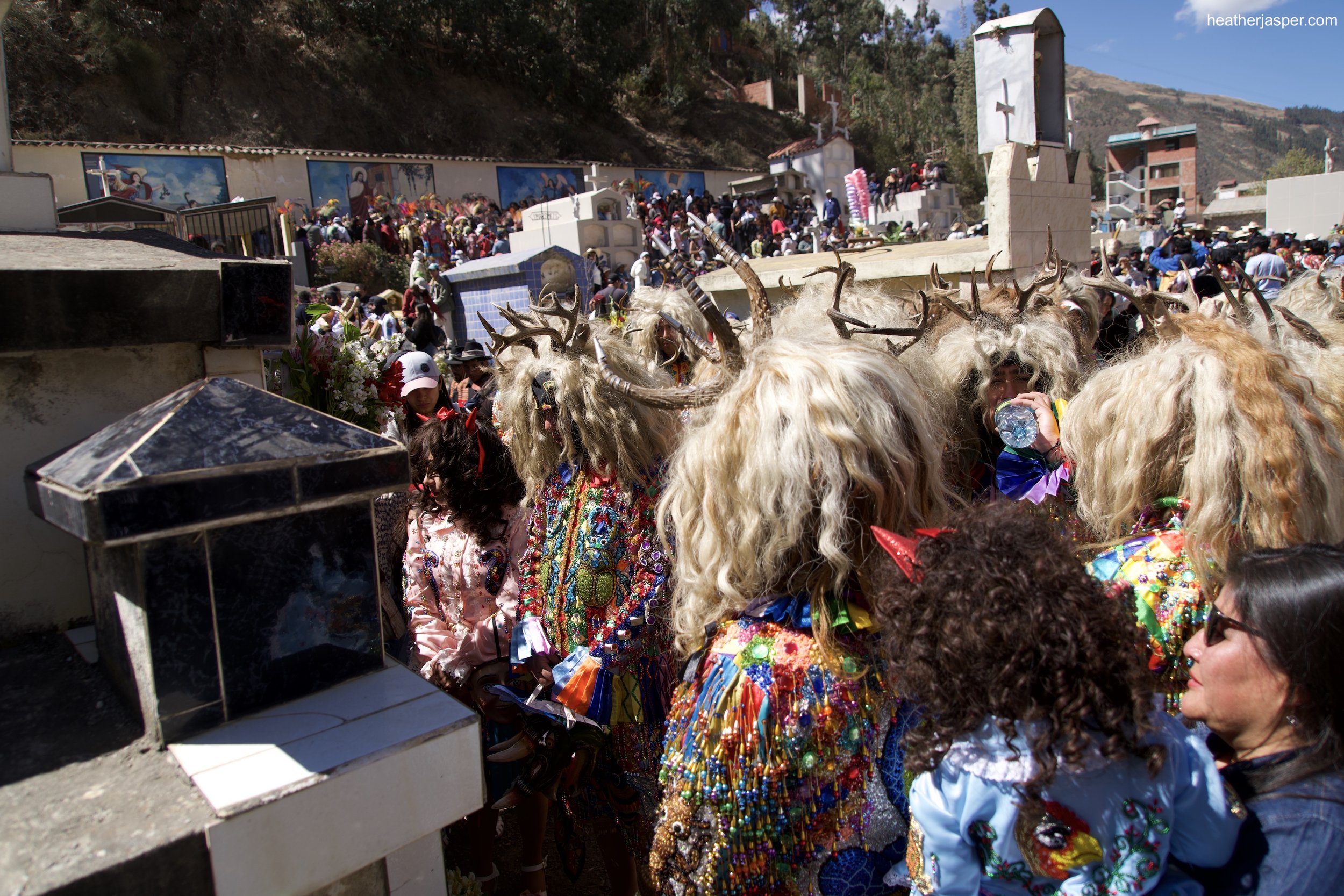
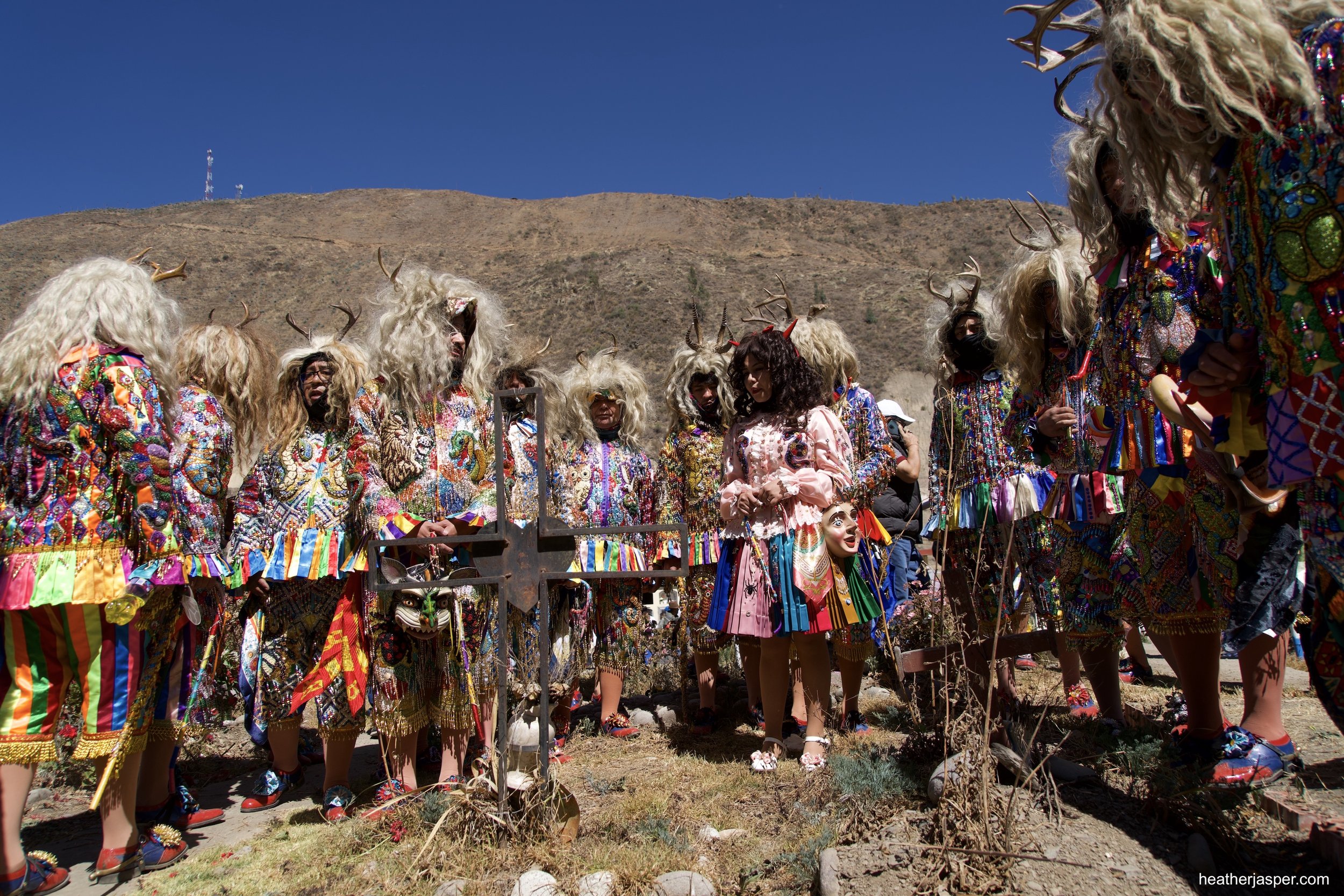
Monday, July 17th
The morning of the 17th, all of the cuadrillas go to the cemetery and pay their respects to past dancers. I stayed with the Saqra as they went around to the graves of former Saqras. Many of the tombs had family members sitting next to them, waiting for the Saqras to visit. At each grave, the Saqras placed one of their masks on the tomb, then they all knelt and prayed silently.
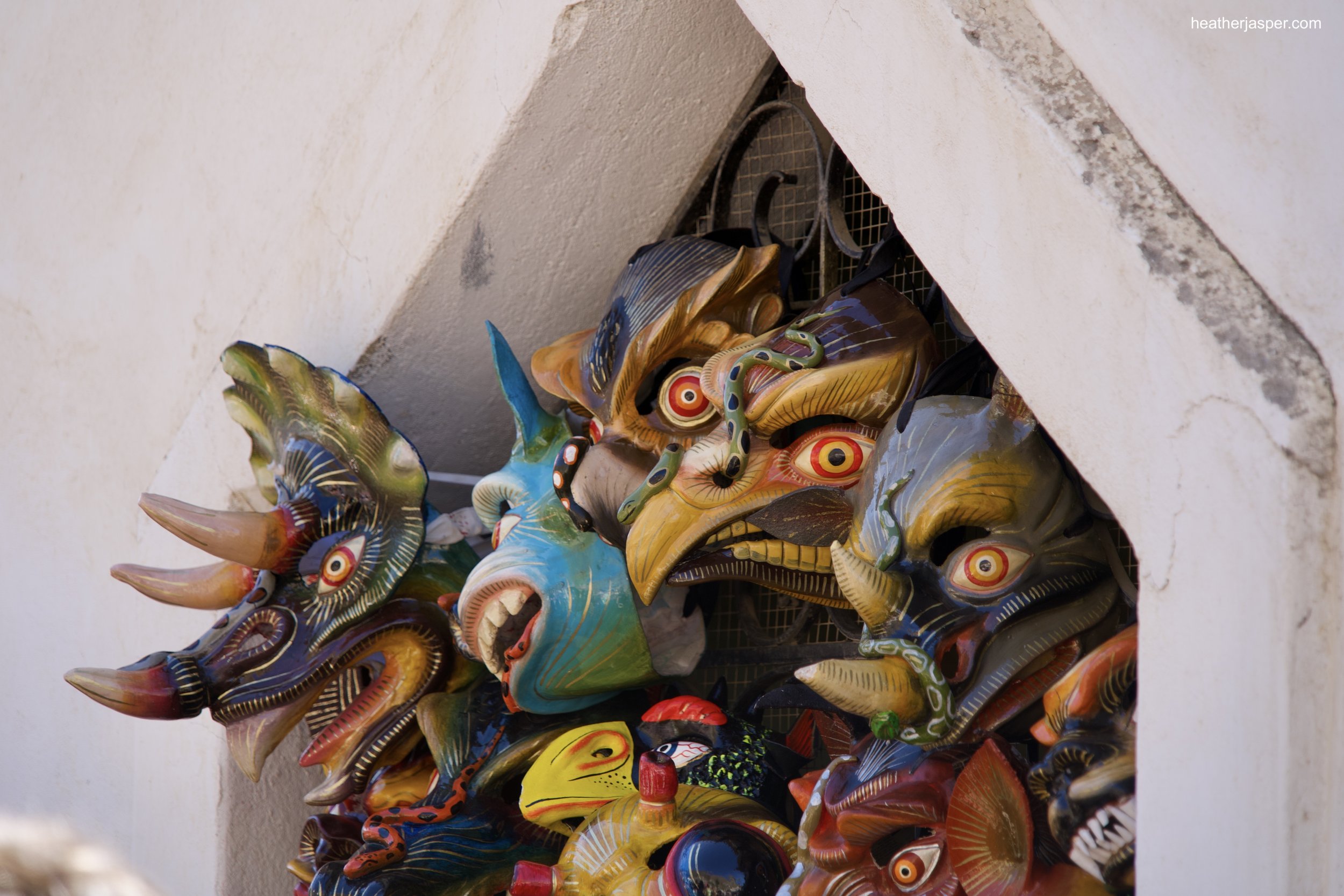
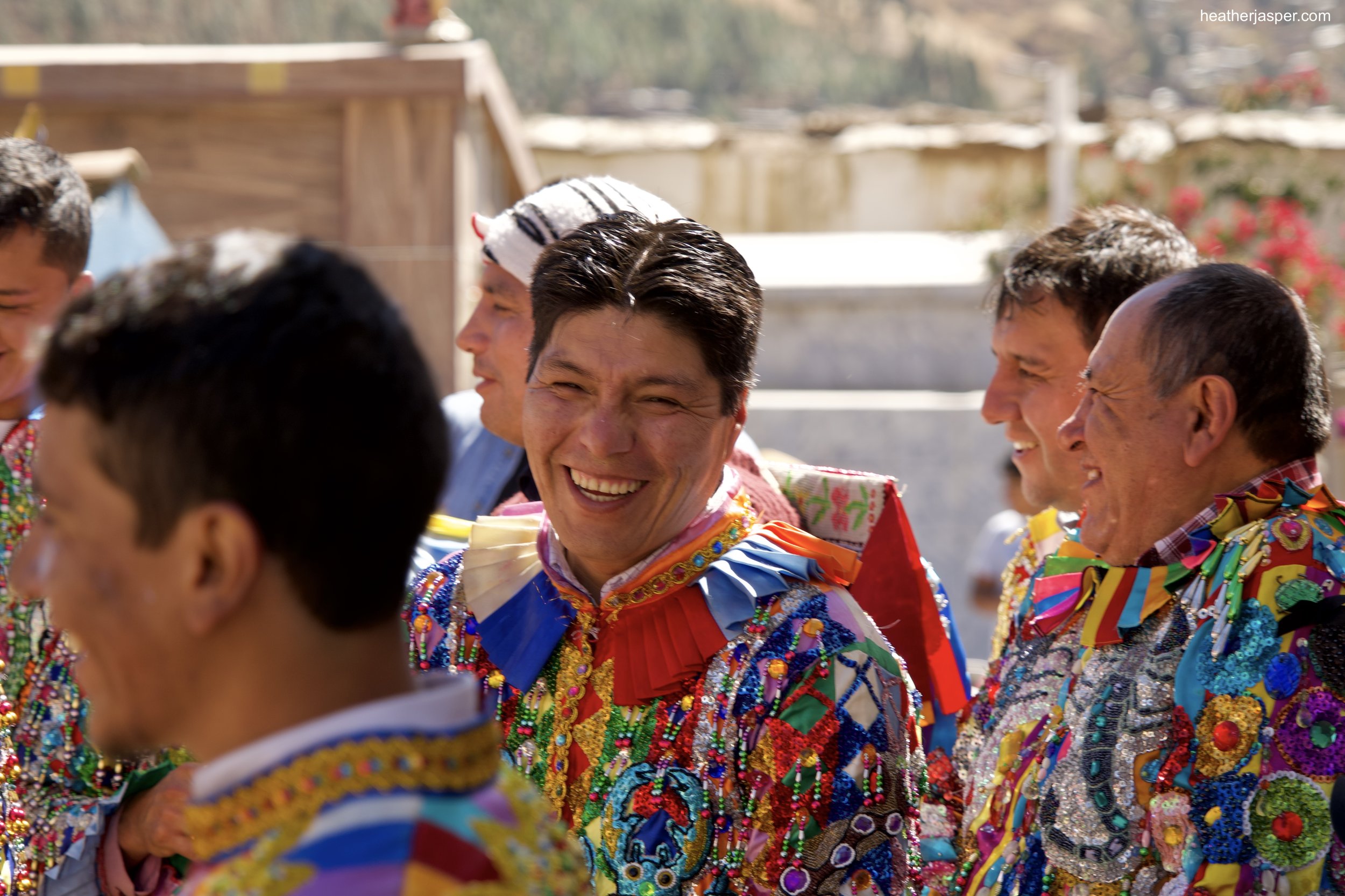
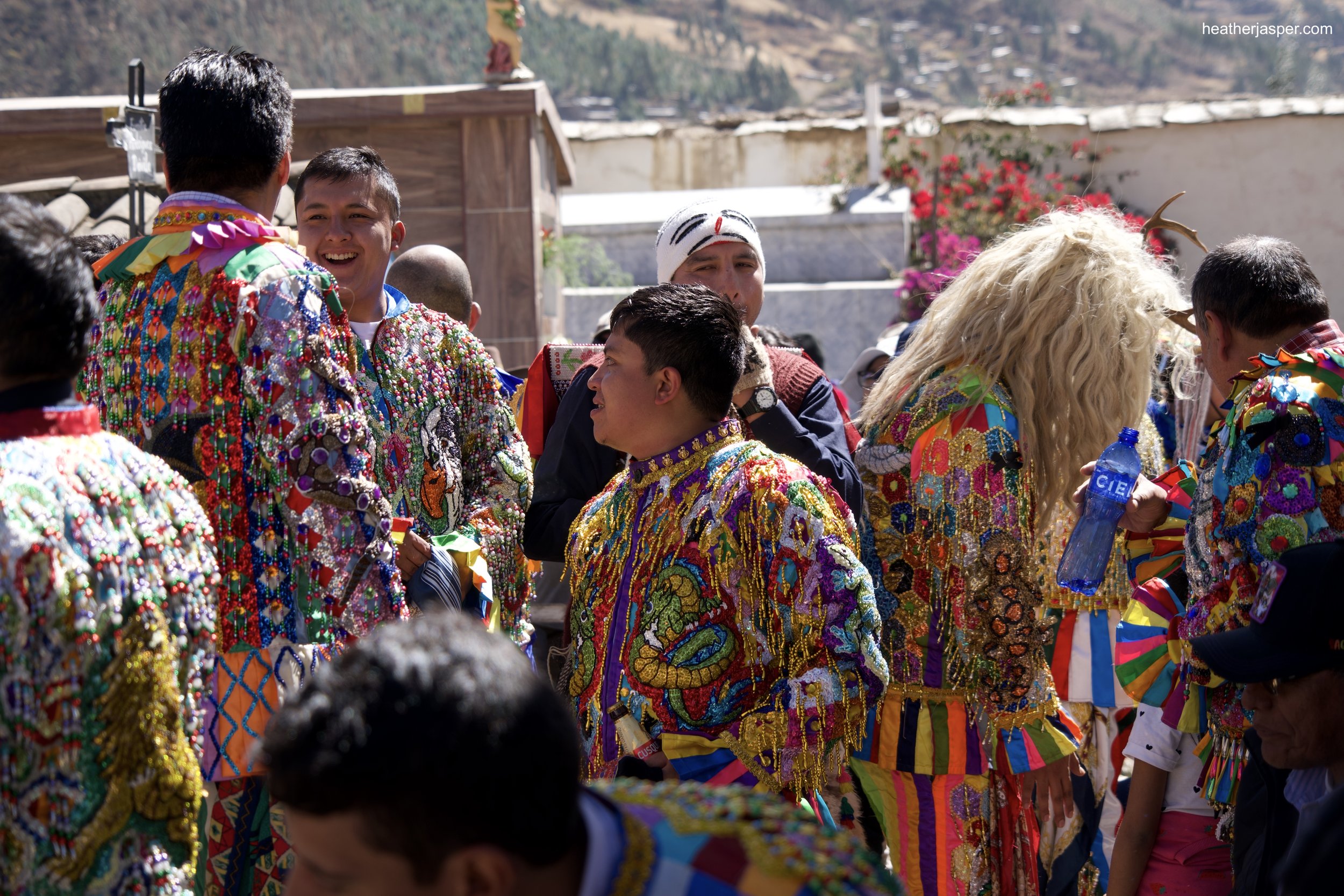
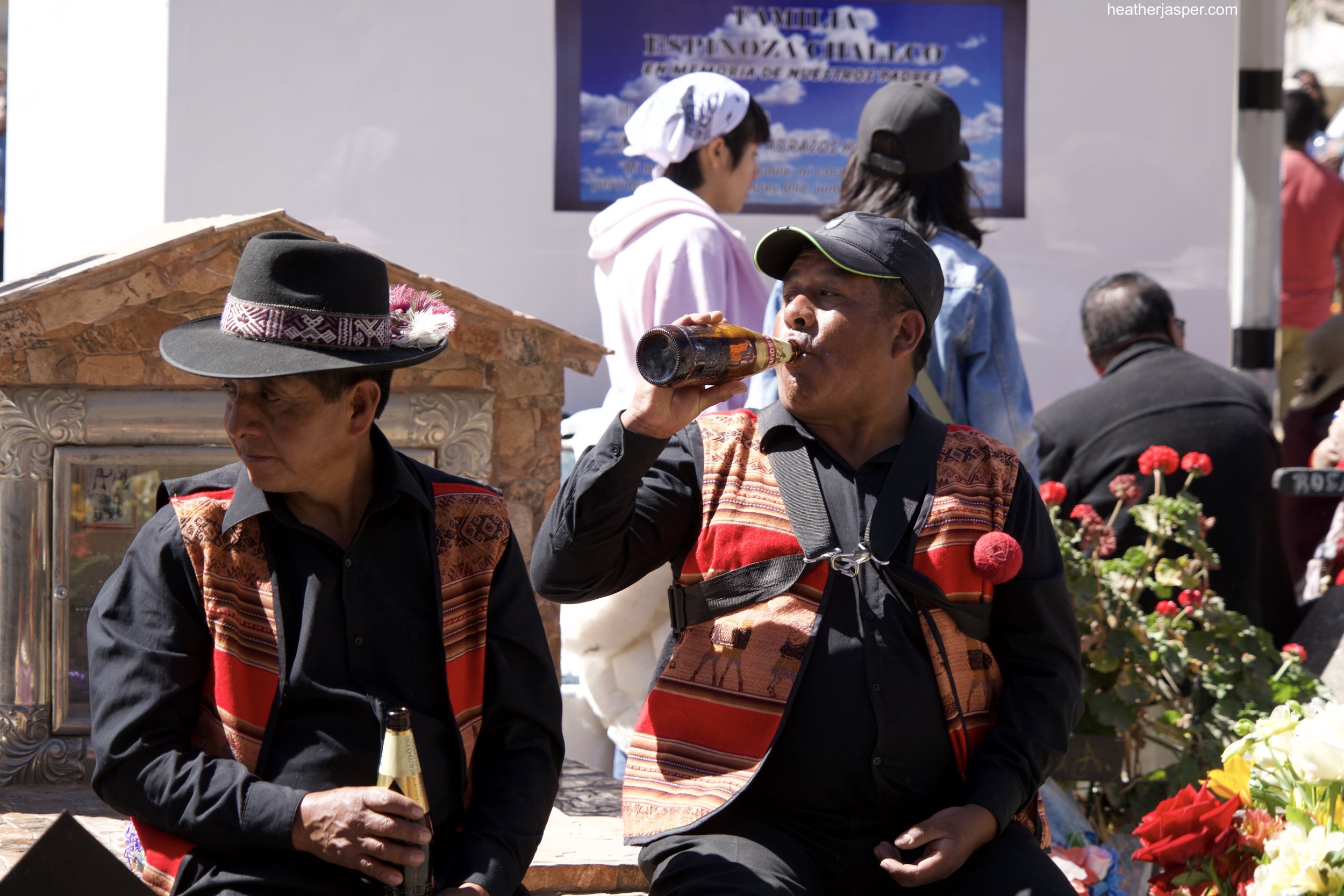
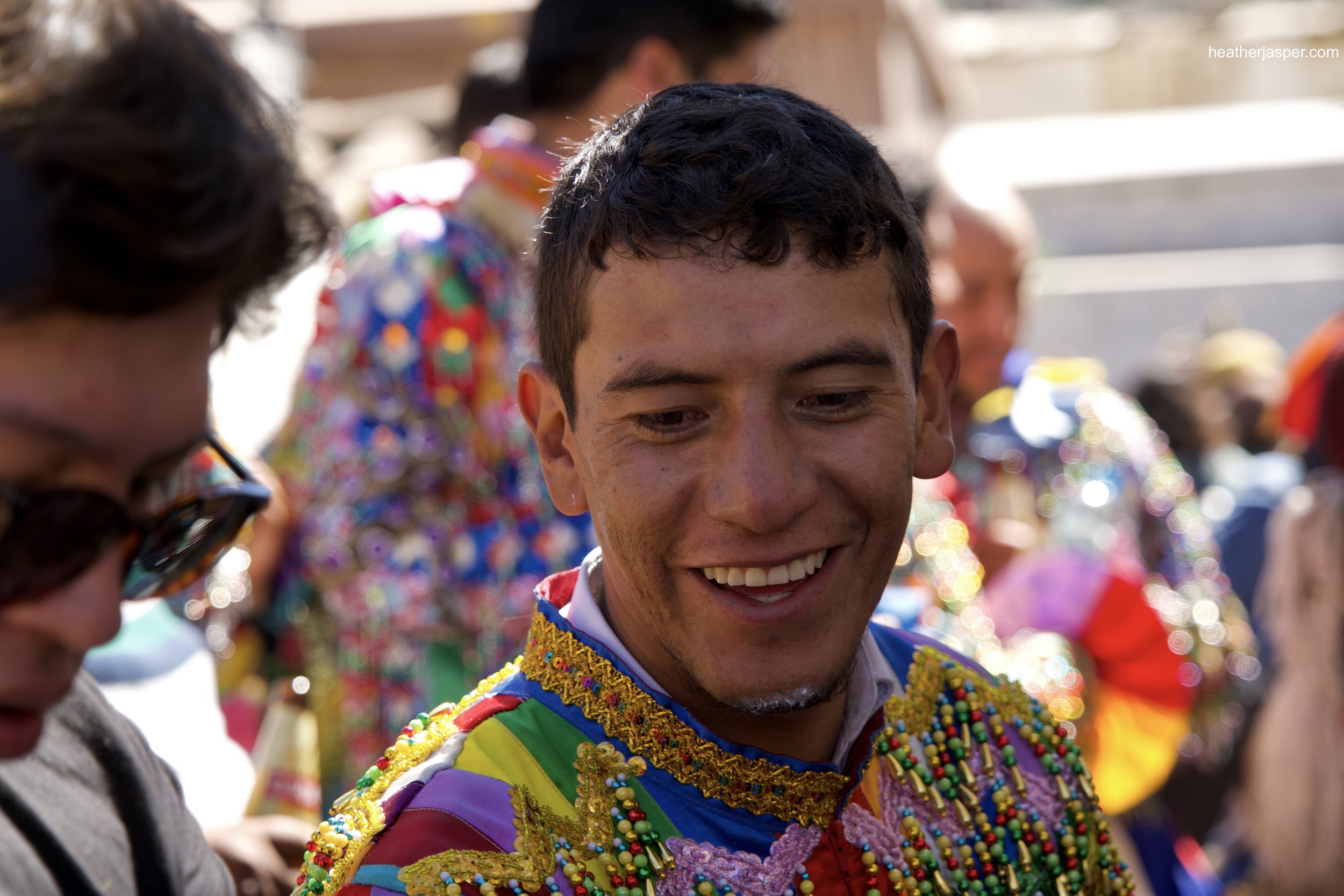
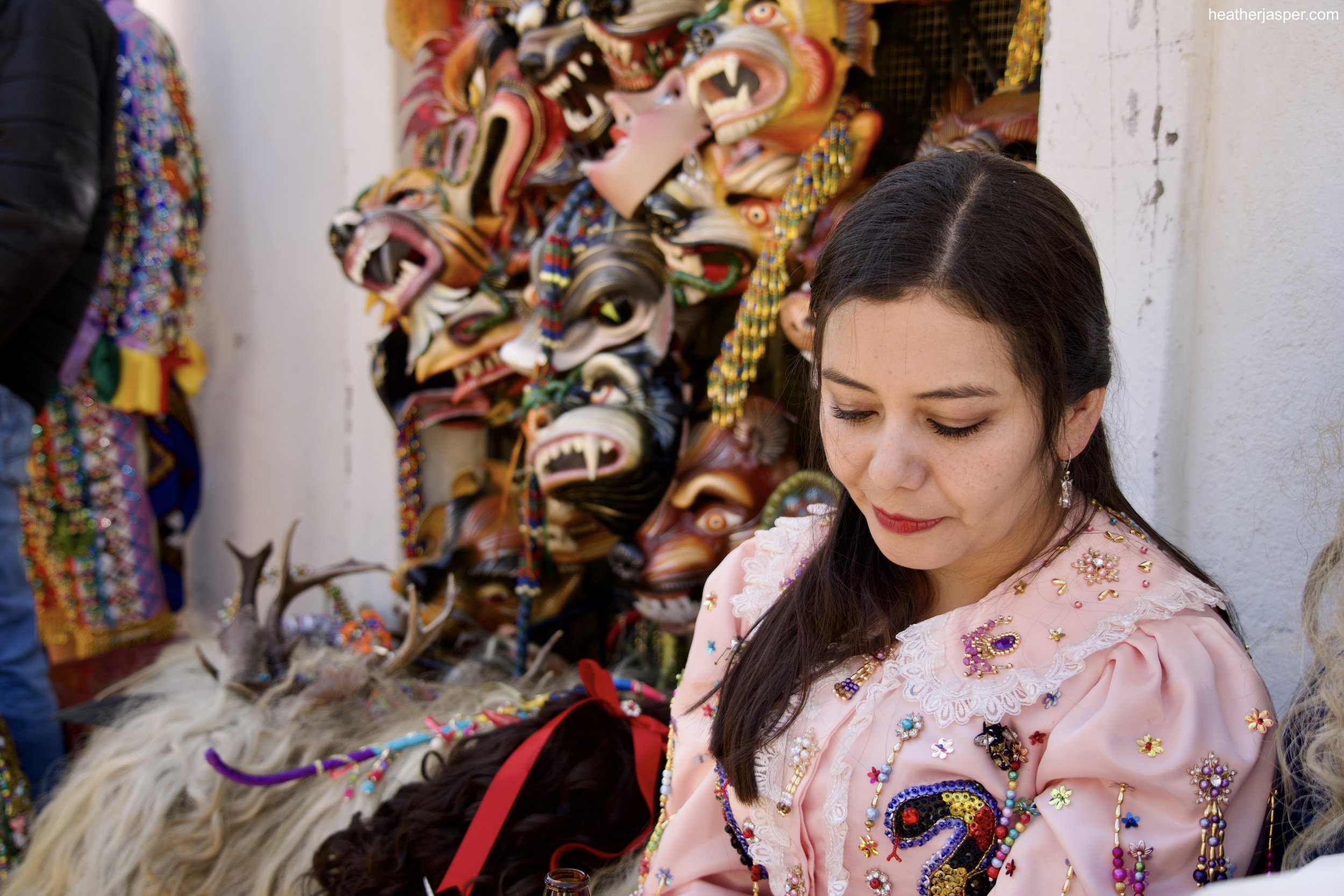
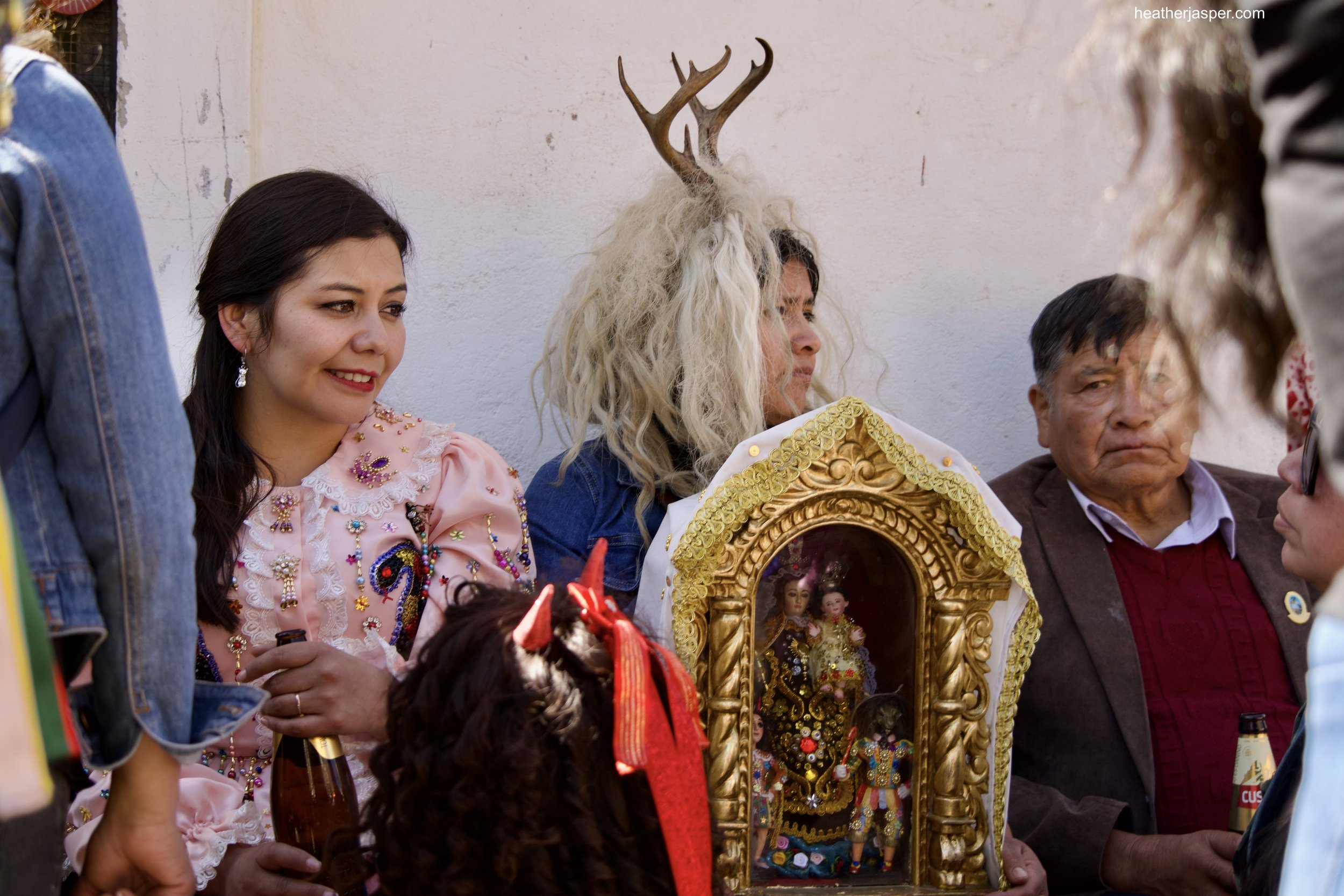
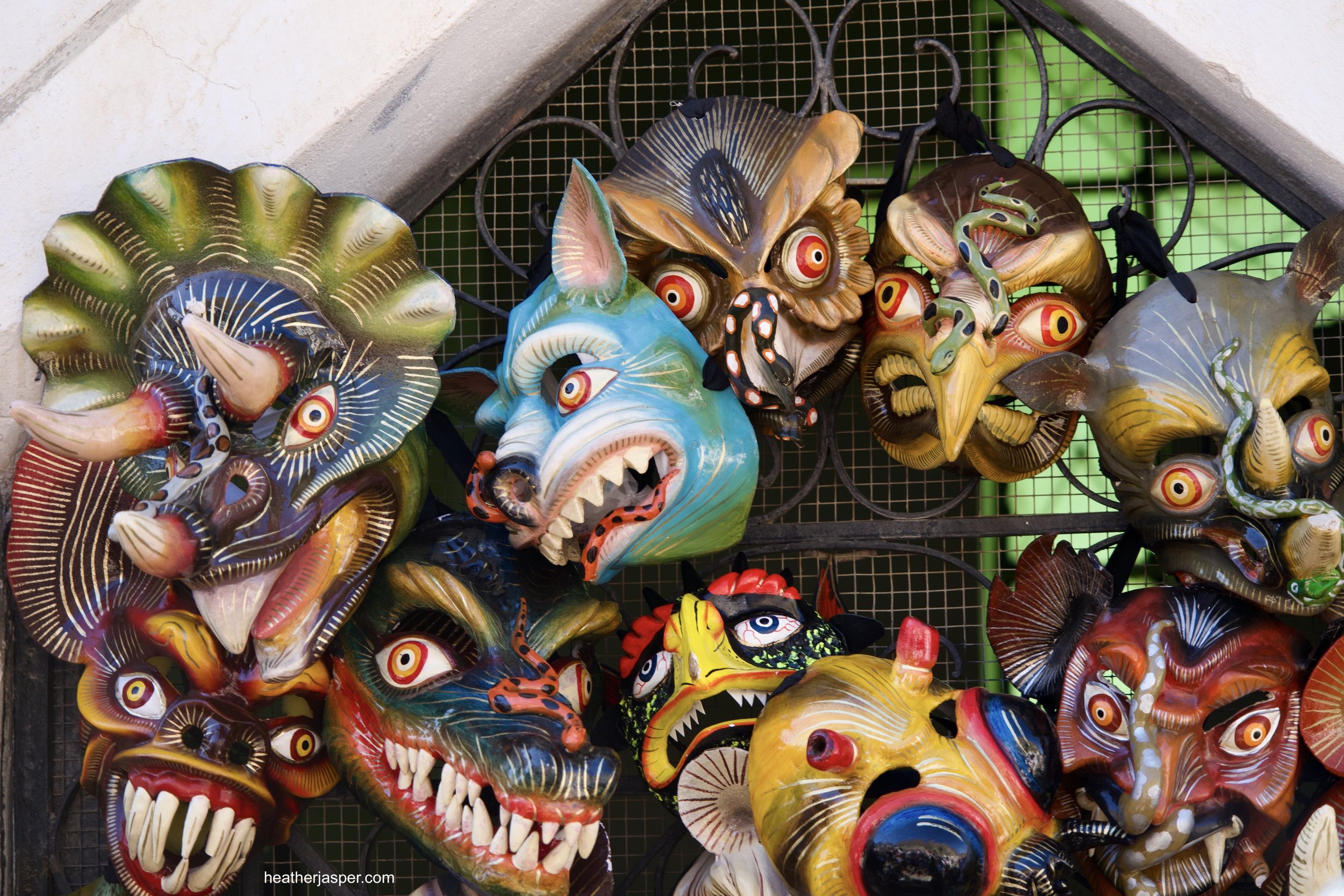
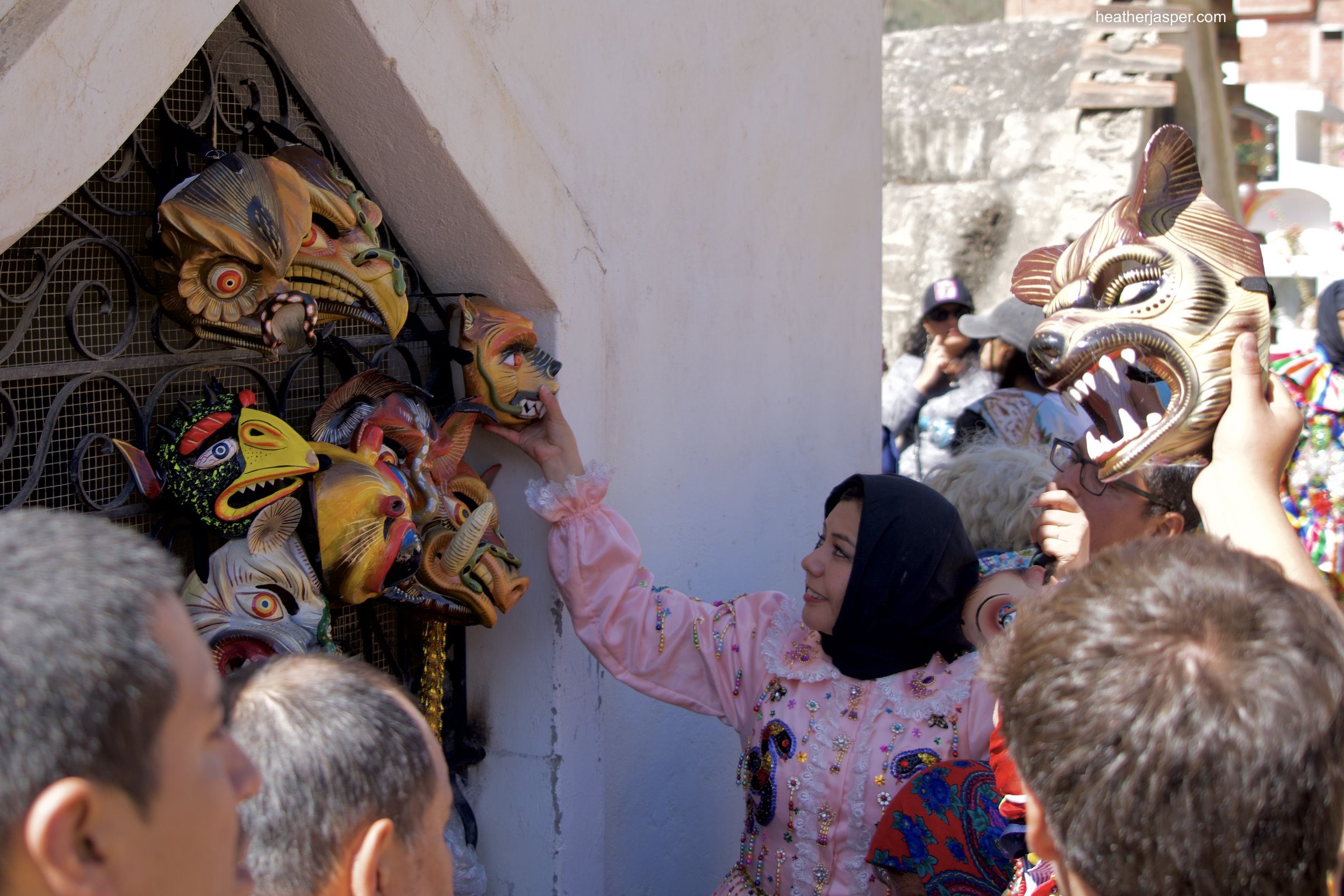
Despite the solemn visits to each grave, the event ends with beer and general festivities in the cemetery. There is one family tomb that the Saqra visit each year, where they take off their masks and relax a bit in the shade. The cemetery doesn’t have any trees and it’s a hot, crowded place. Besides all nineteen cuadrillas and the family members who sit by the graves, there are a lot of other people who come to see the event. There were dozens of photographers and it was hard for me to get the shots I wanted of the Saqras without other photographers bombing my photos.
The battle between the dancers and the crowd
After the cemetery, the biggest event of the 17th is the “guerilla” which is a mock battle between all the comparsas and the crowd. Basically, if you go to the plaza for the guerilla, you are signing up to be covered with flour, exposed to pepper spray, showered with beer, and probably whipped as well.
The Maqtas (above) keep order, cracking their whips to move spectators out of the way or sometimes just hitting them. Their whips are made with llama fur and their masks are meant to be disgusting or scary. They have comically large noses and features meant to poke fun at people of European descent. The first group to come through is the Pananderos, the bakers (below). The crowd chants for bread and sometimes gets it. Sometimes the bakers throw flour in your face instead.

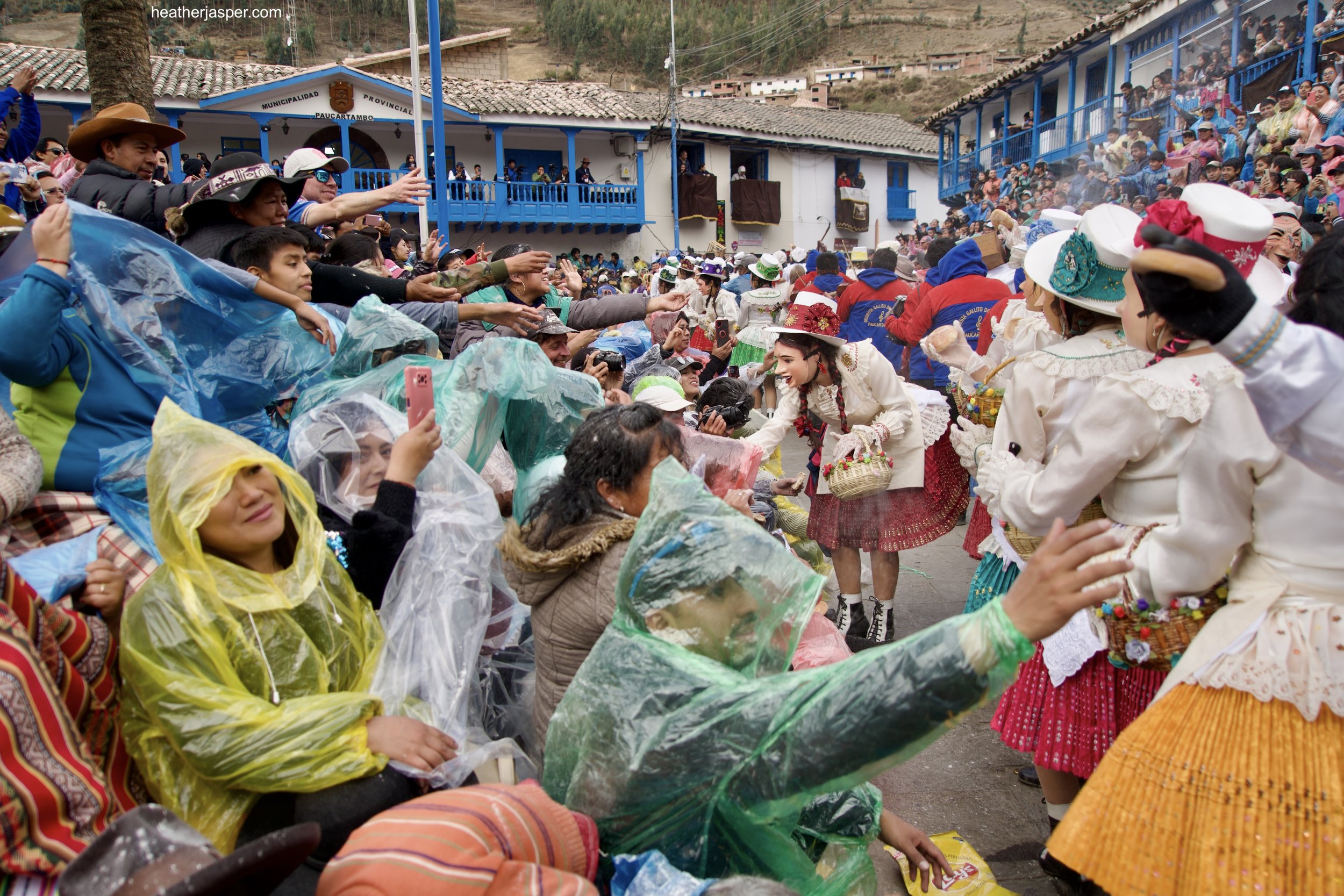

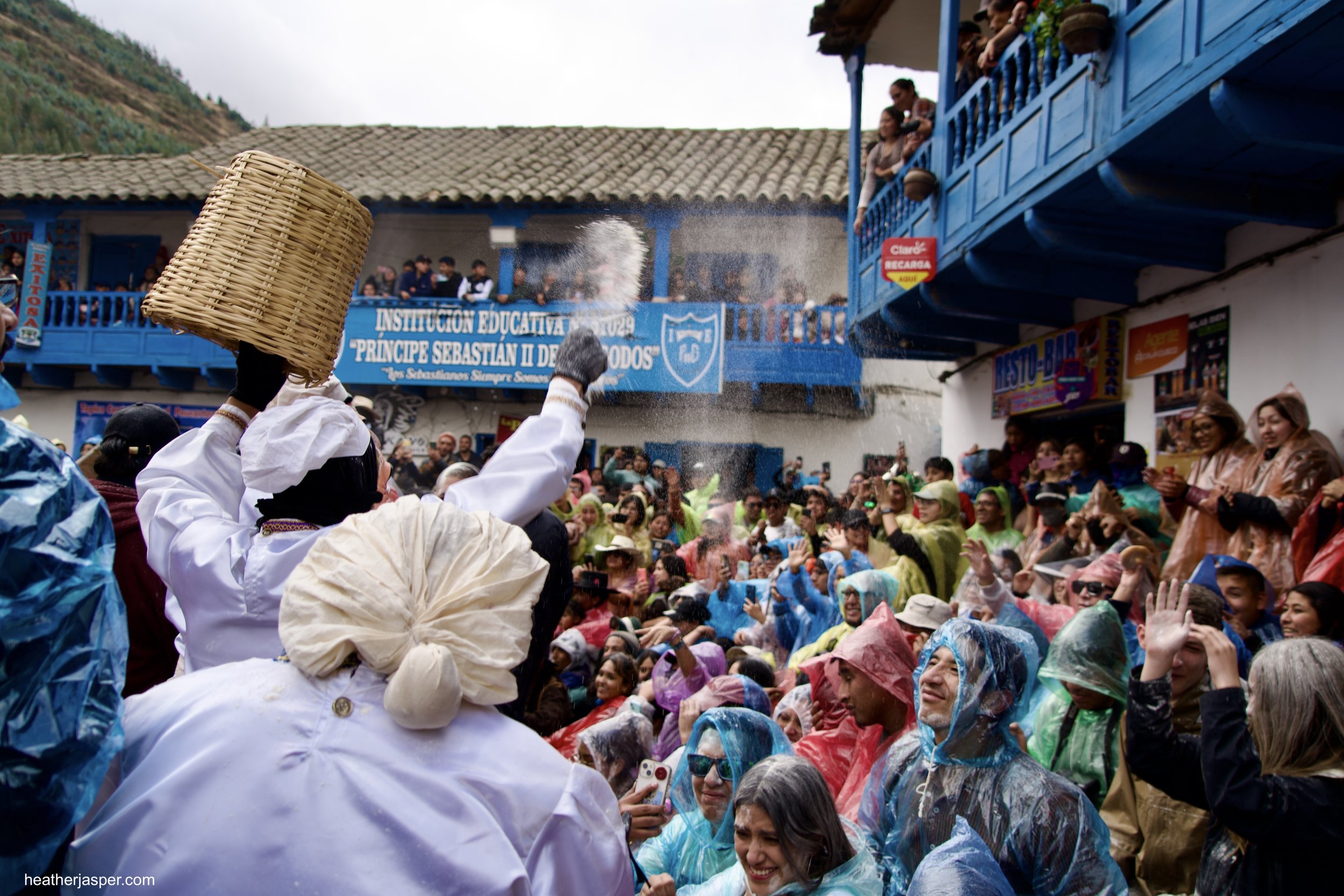
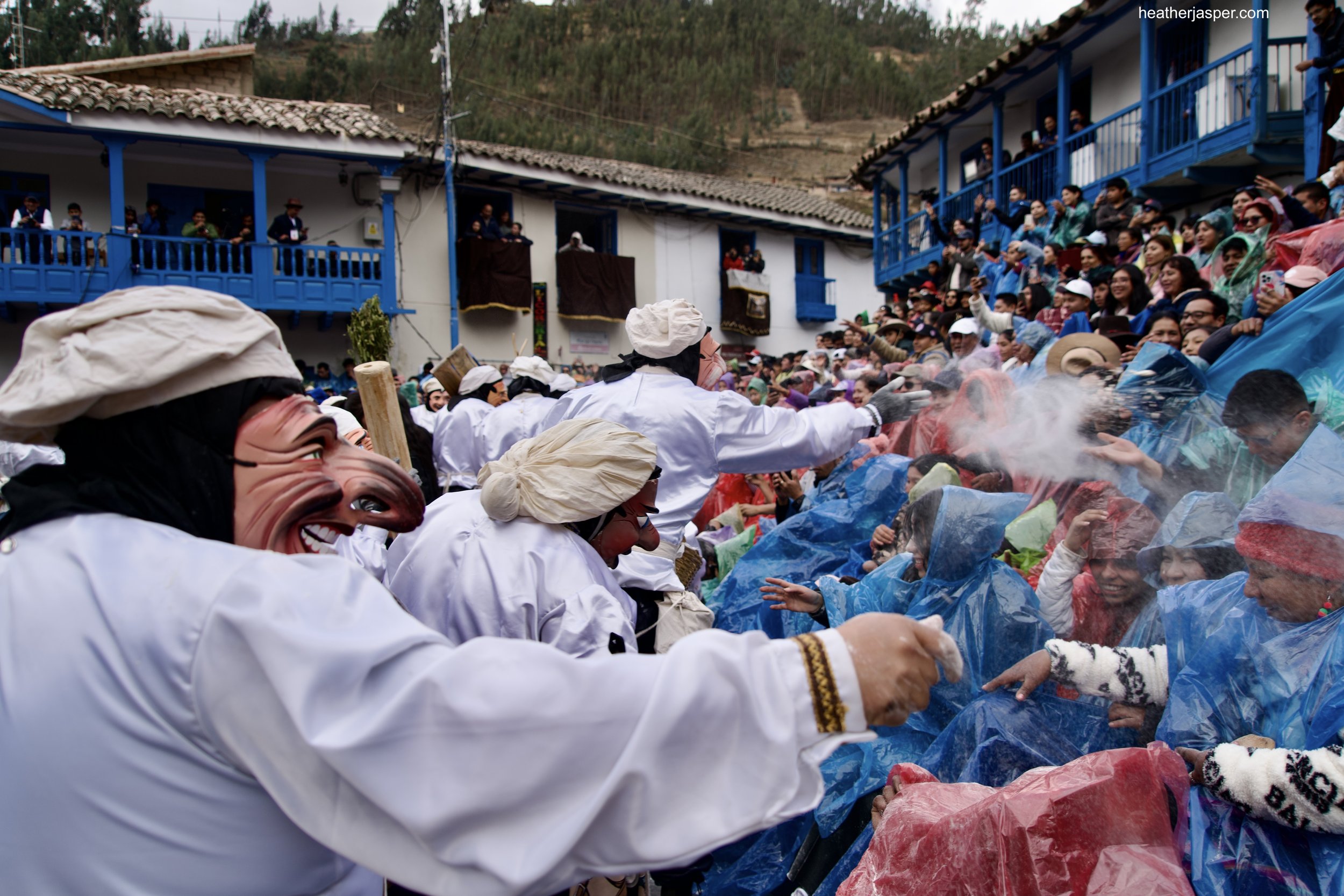
Preparing for battle
Preparing to be covered with flour, showered with beer and perhaps pepper spray, most people in the crowd buy plastic ponchos. I also covered my camera with a couple layers of plastic and was thankful it came through unscathed.
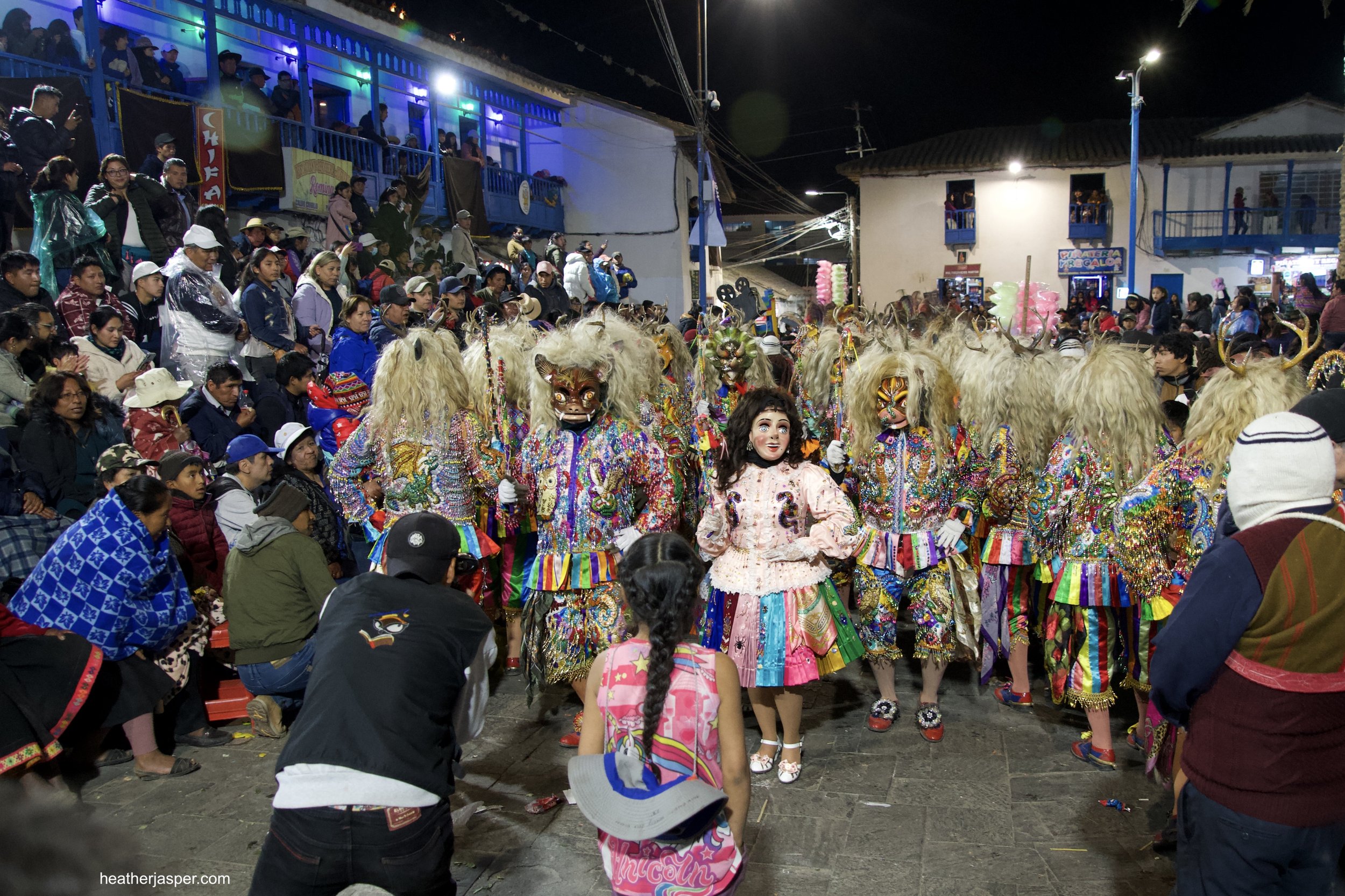
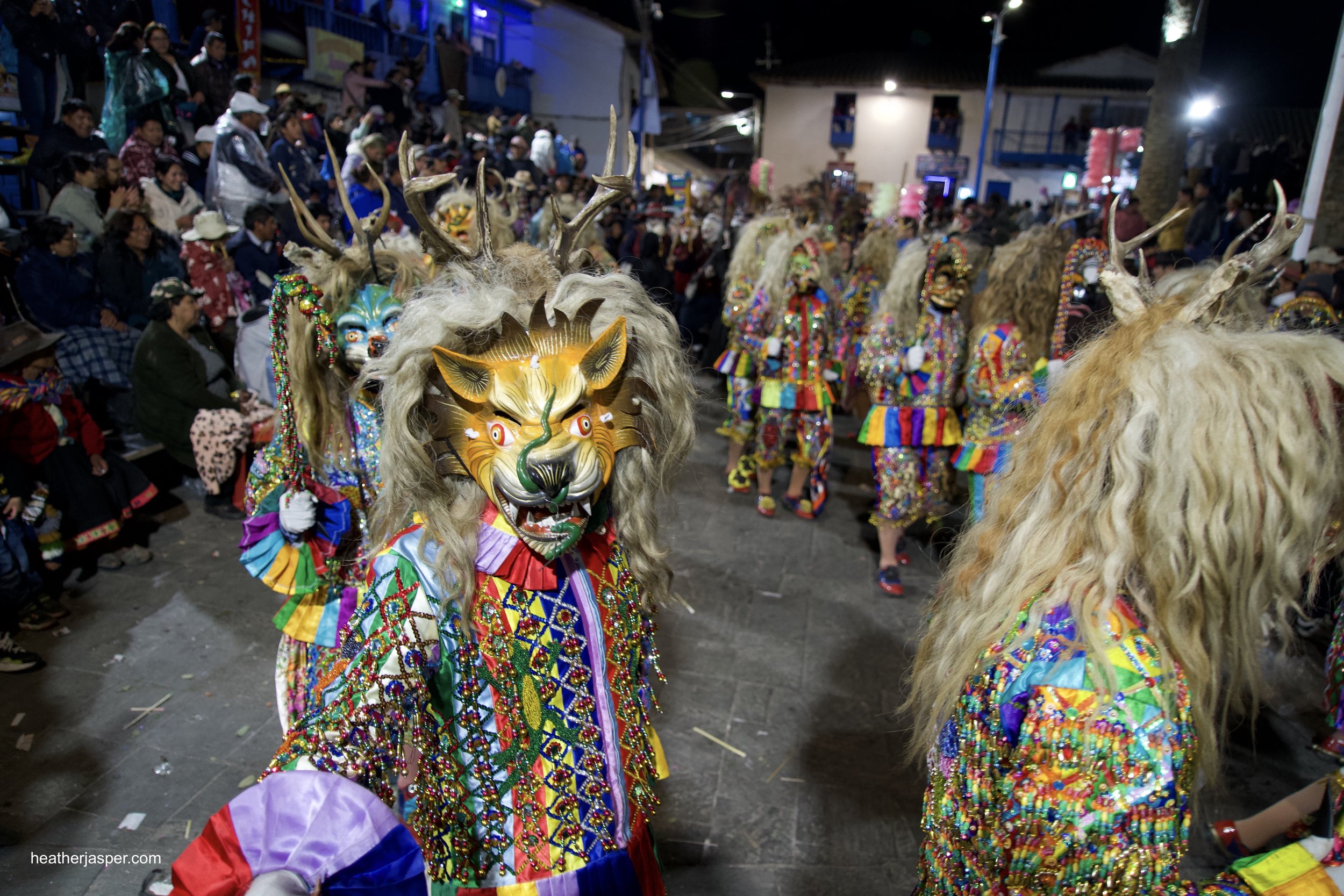

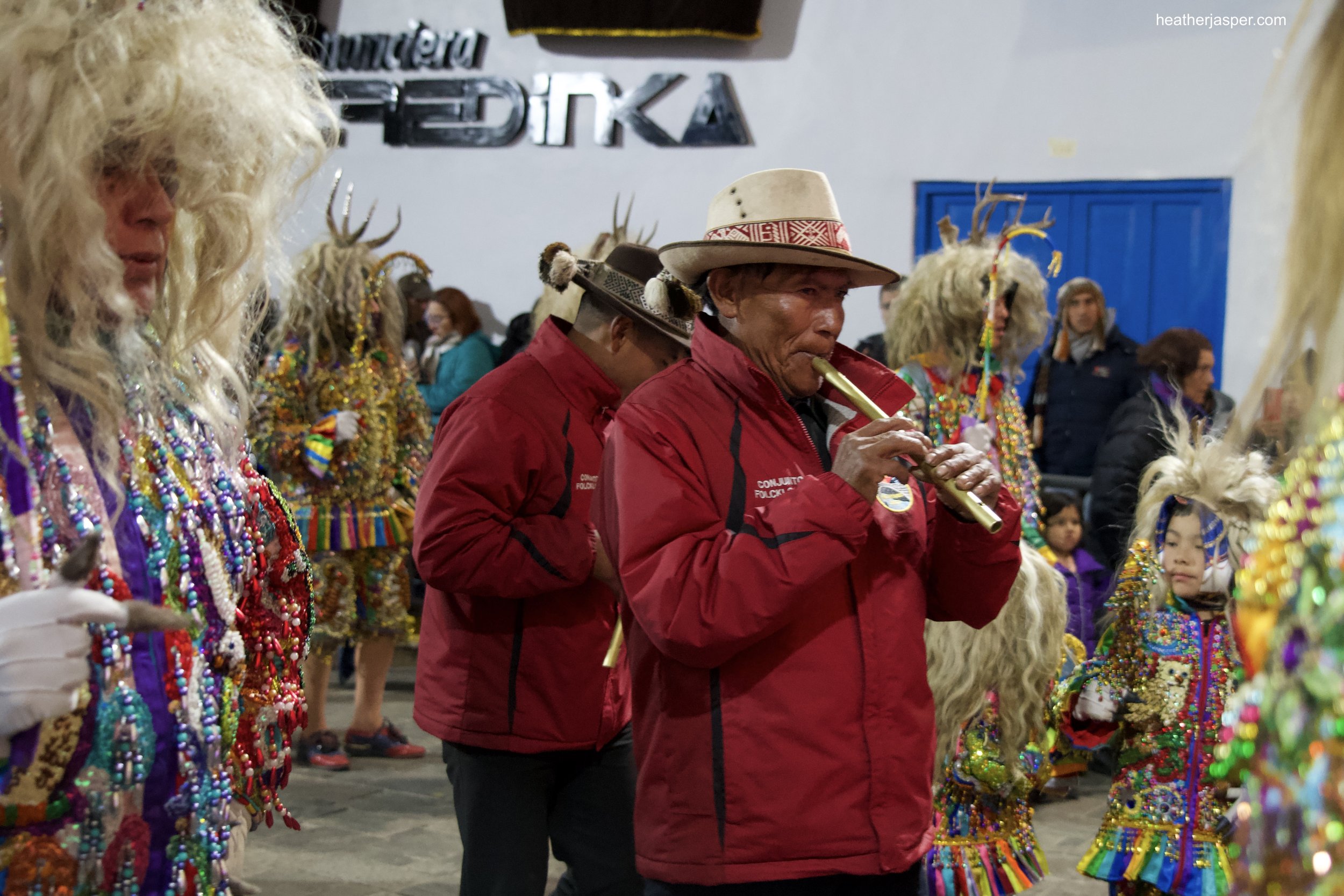

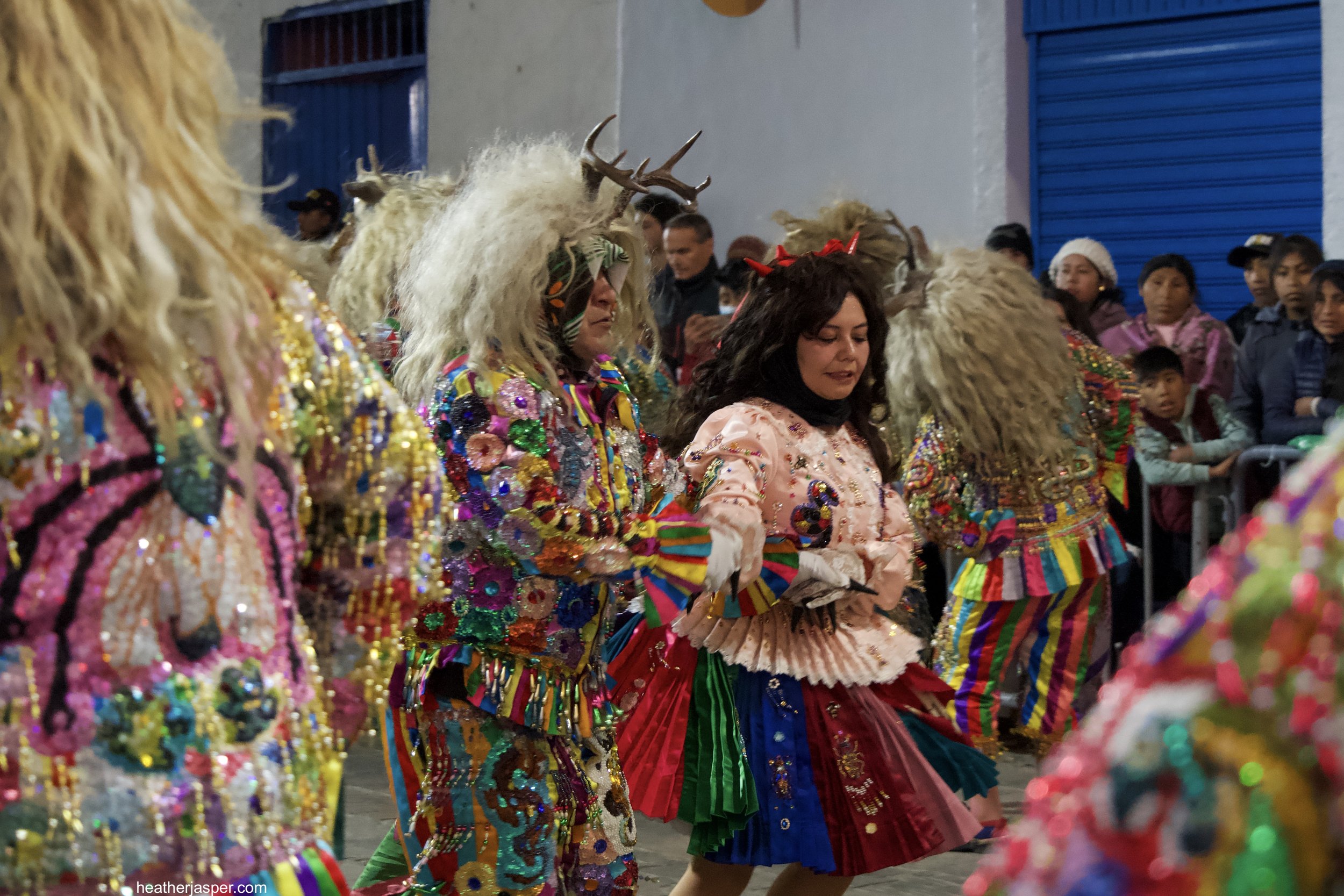
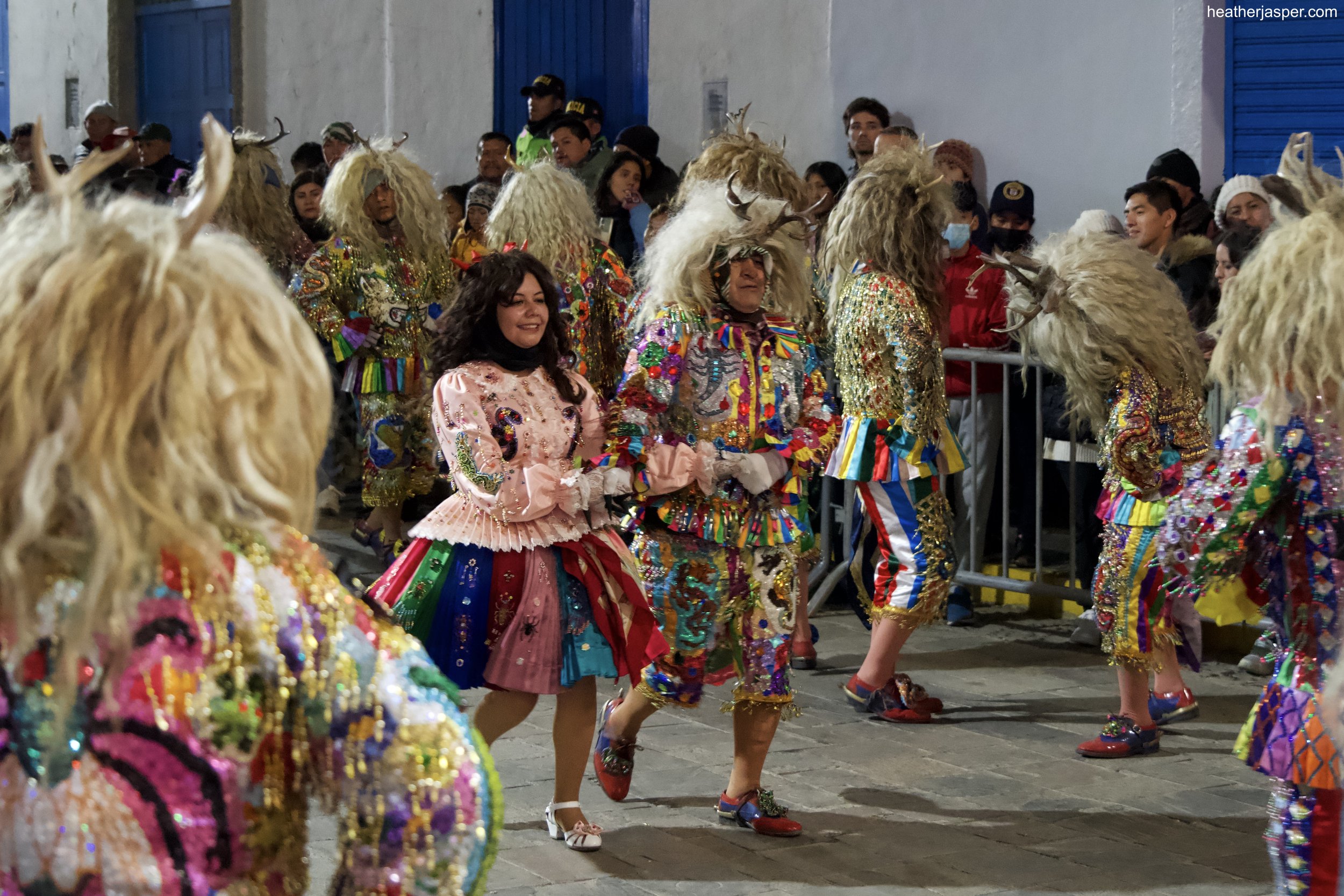
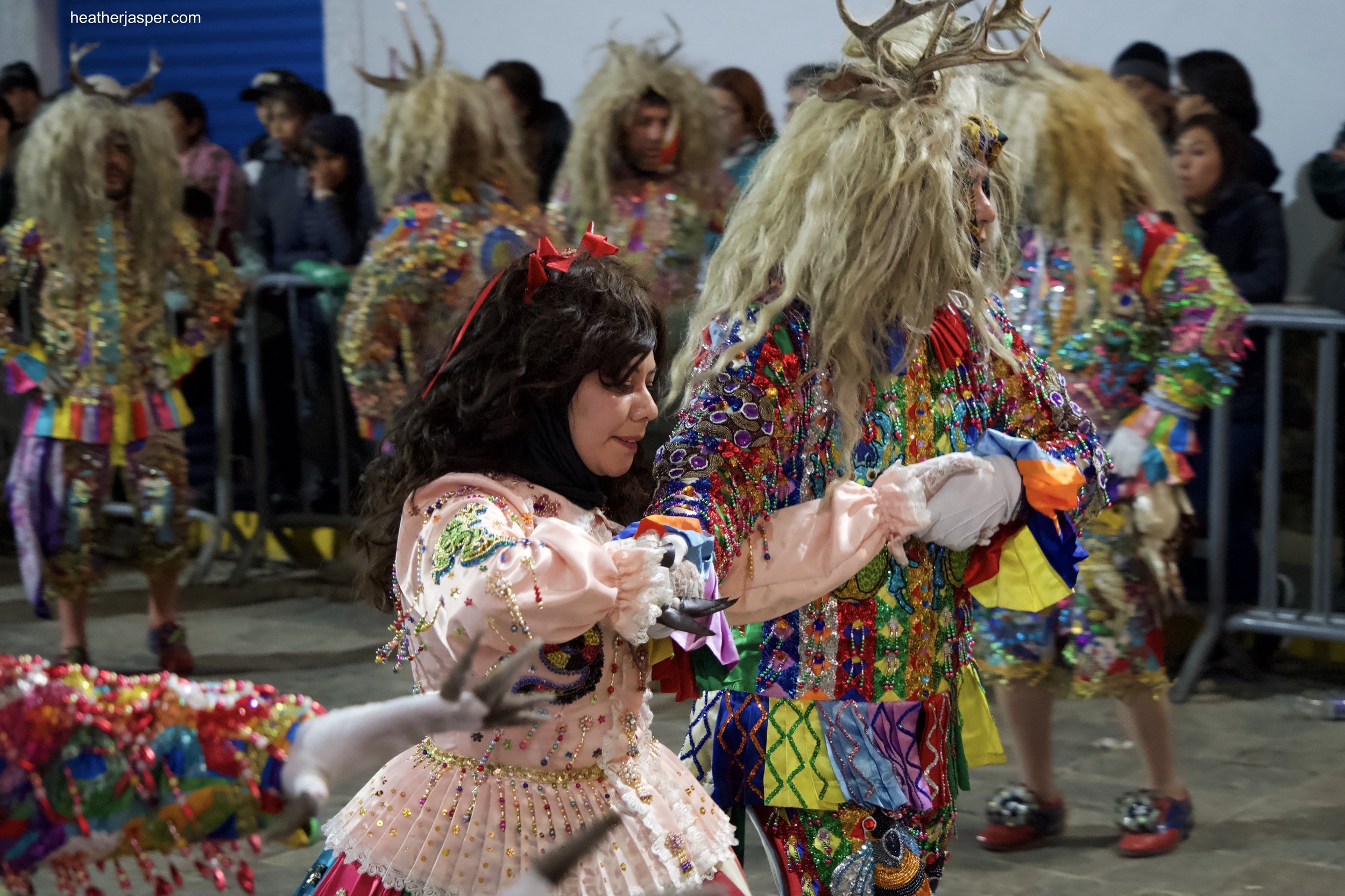
At the end of the guerilla, the Saqra come to the plaza to end the fighting. They take a brief break in the town hall where they remove their masks and then dance in front of the church. This is the first time they’re in public without their masks. The night is just getting started for them and once they get back to the cargo wasi they have dinner then proceed to baptize new members of the group.
Baptism is not by fire, but by beer. First, the young Saqras are baptized with either Coca-cola or water. The child bends over a table with a dish below their face to catch the baptismal Coke. Their hair is combed forward, they say to comb out any lice, then their godfather or godmother has to drink from the dish. Anything they don’t manage to drink, is placed back on the table and the newly baptized Saqra has to drink the rest. The process is the same for adult Saqras, except they are doused with beer.
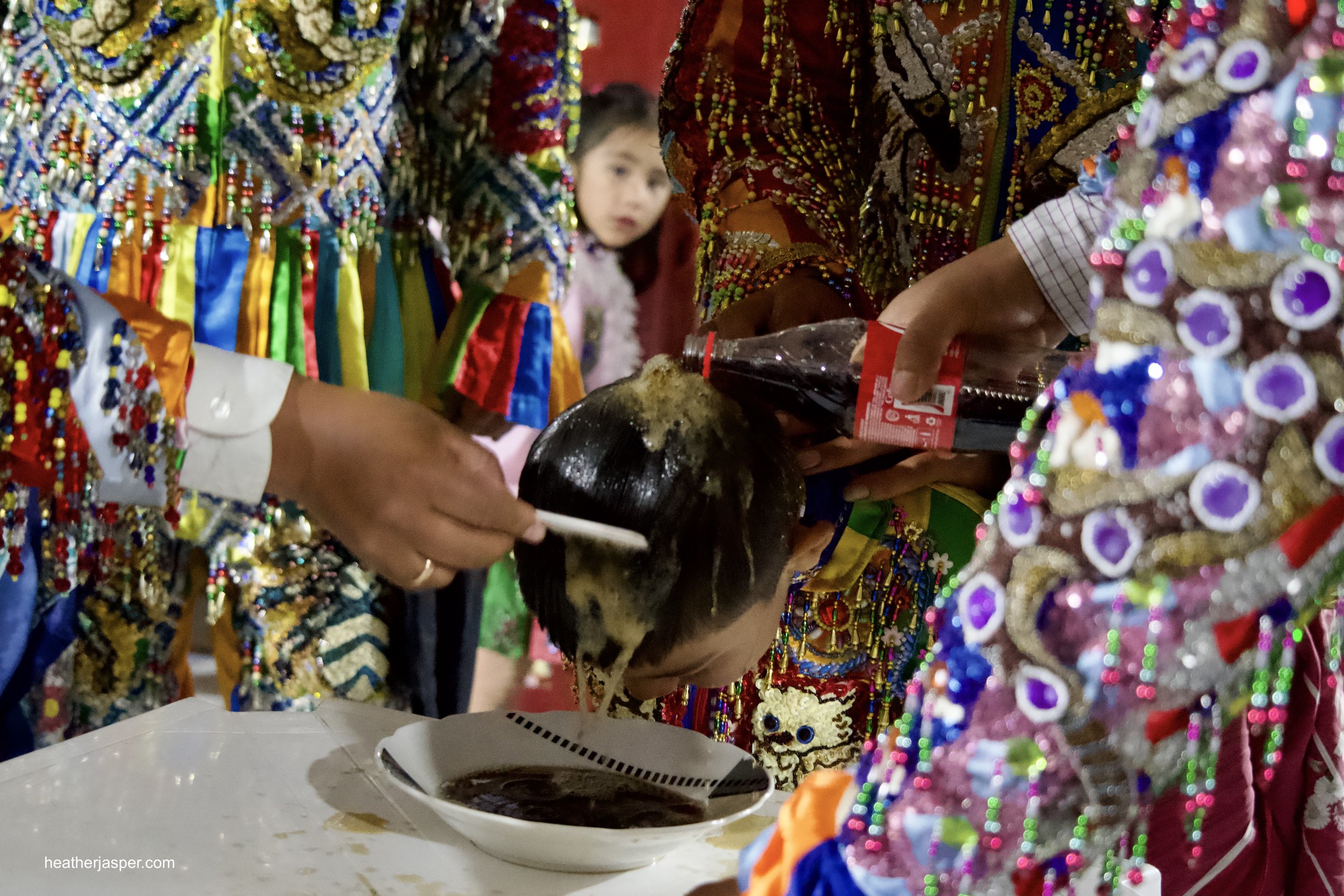
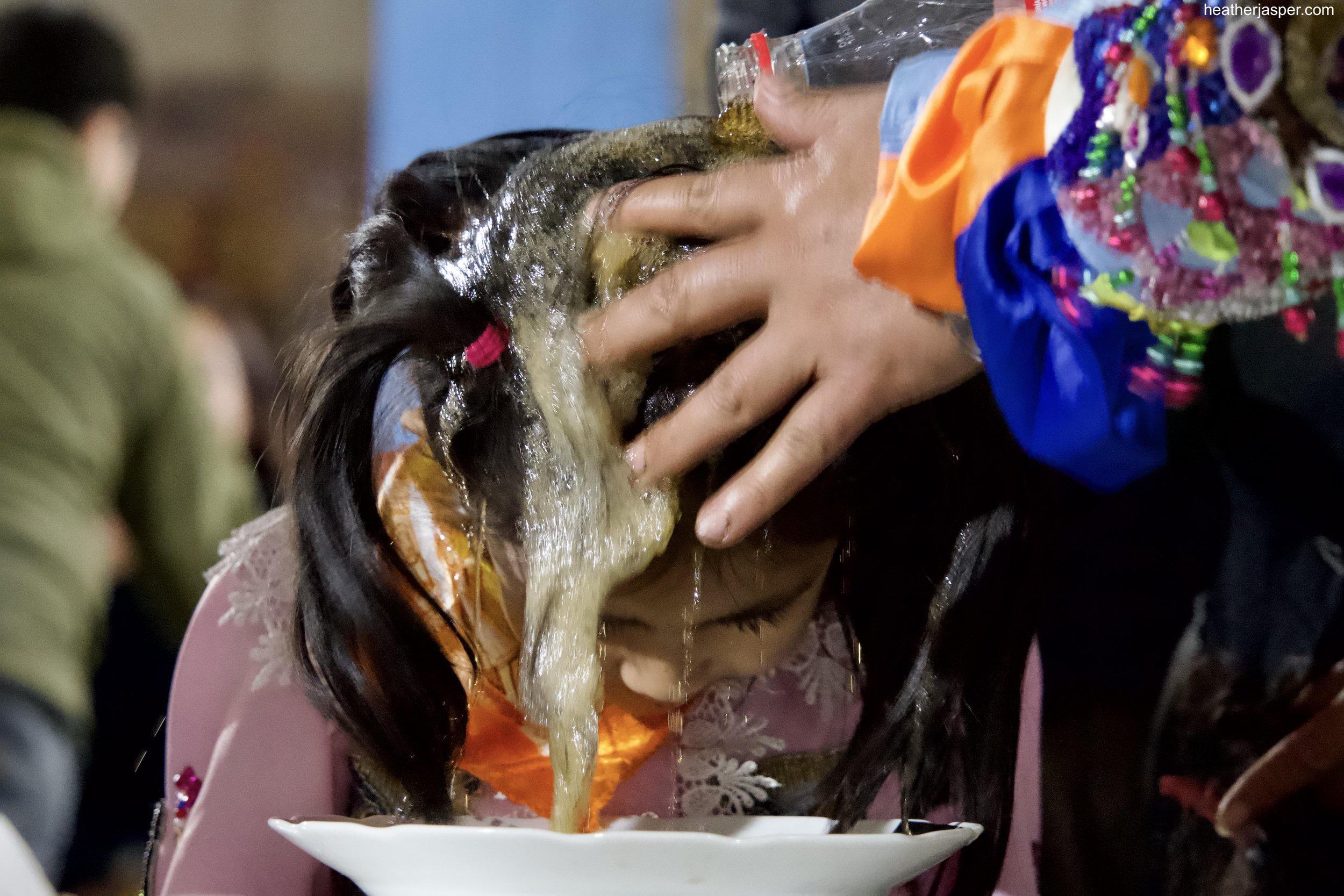
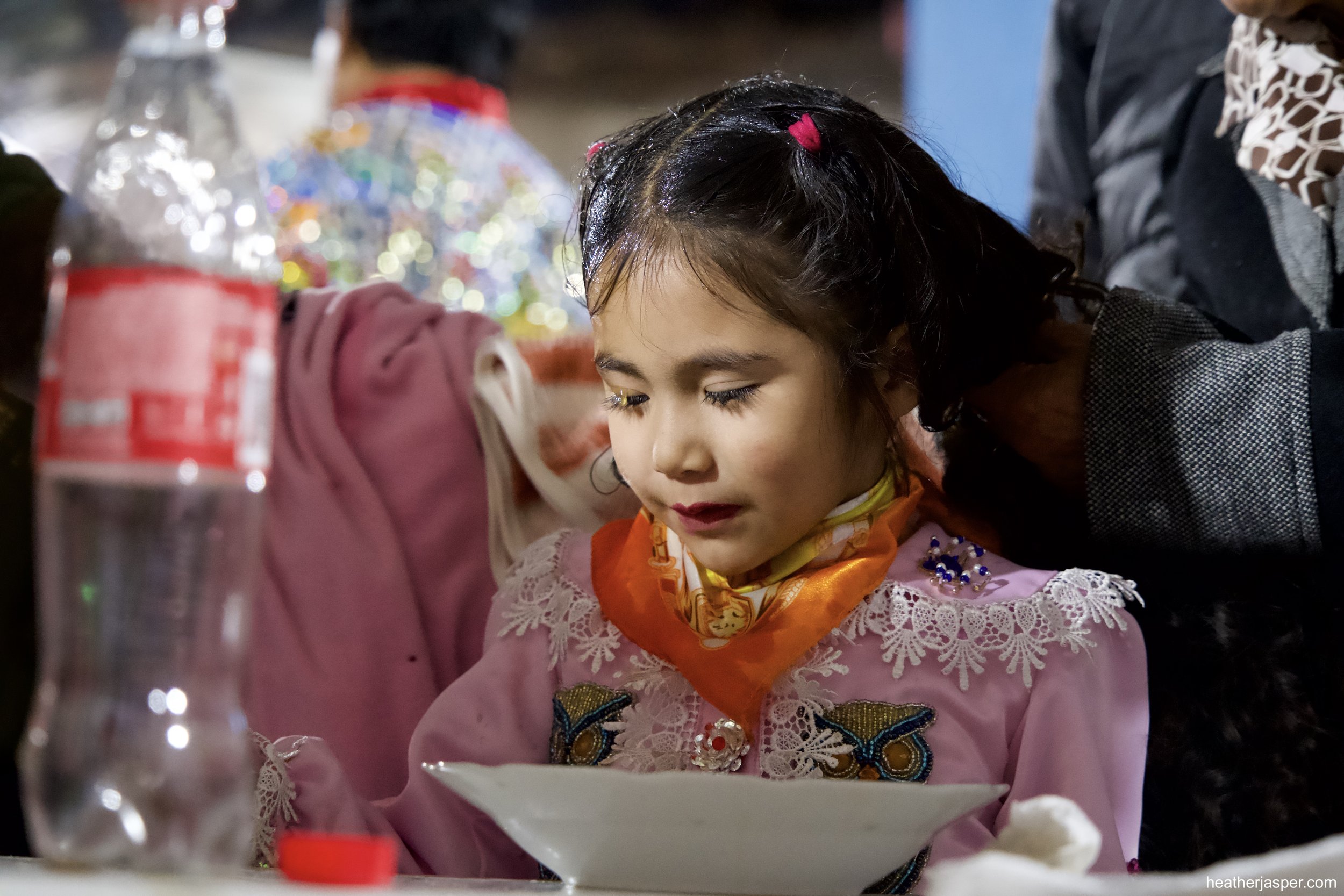
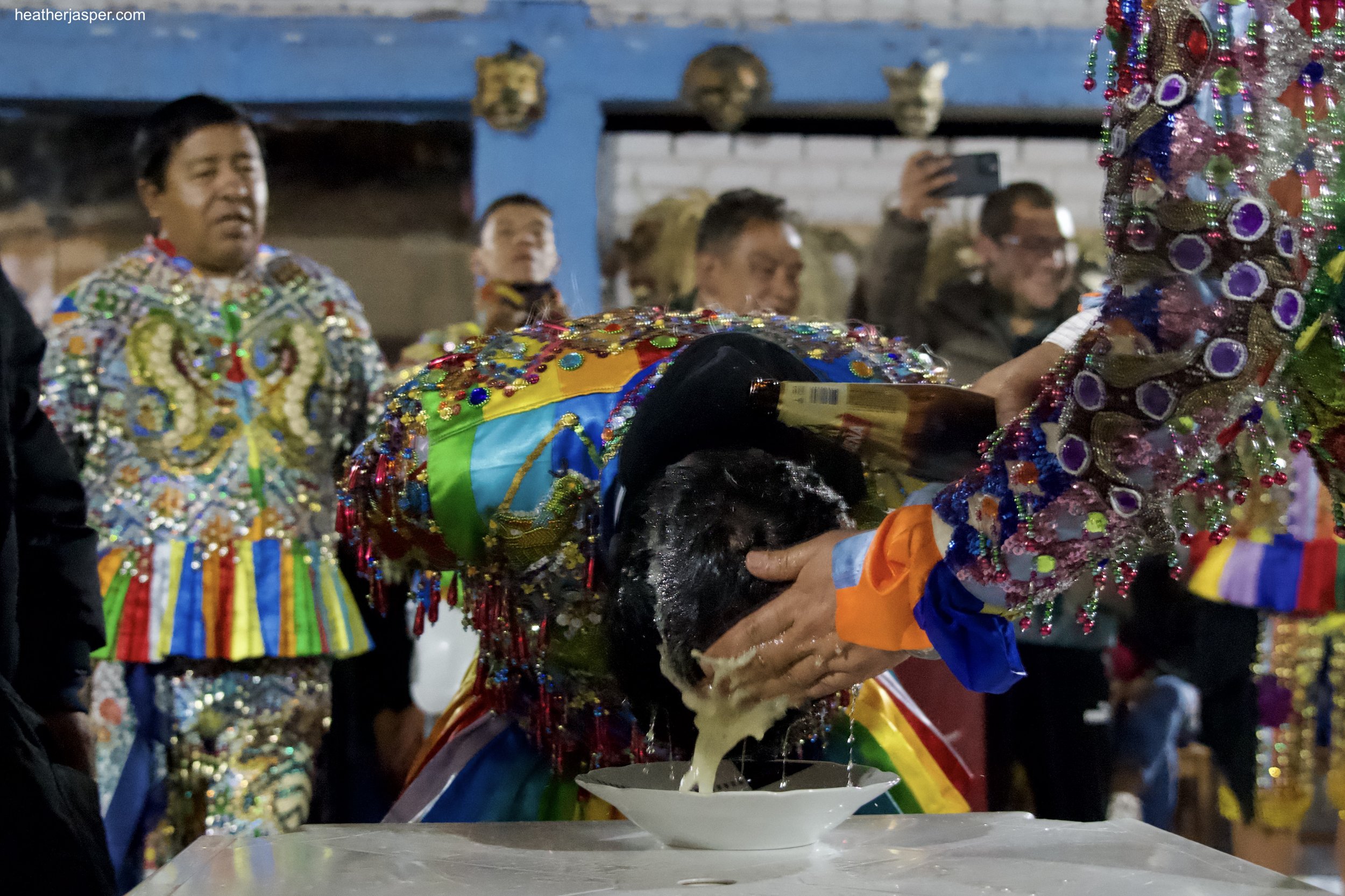
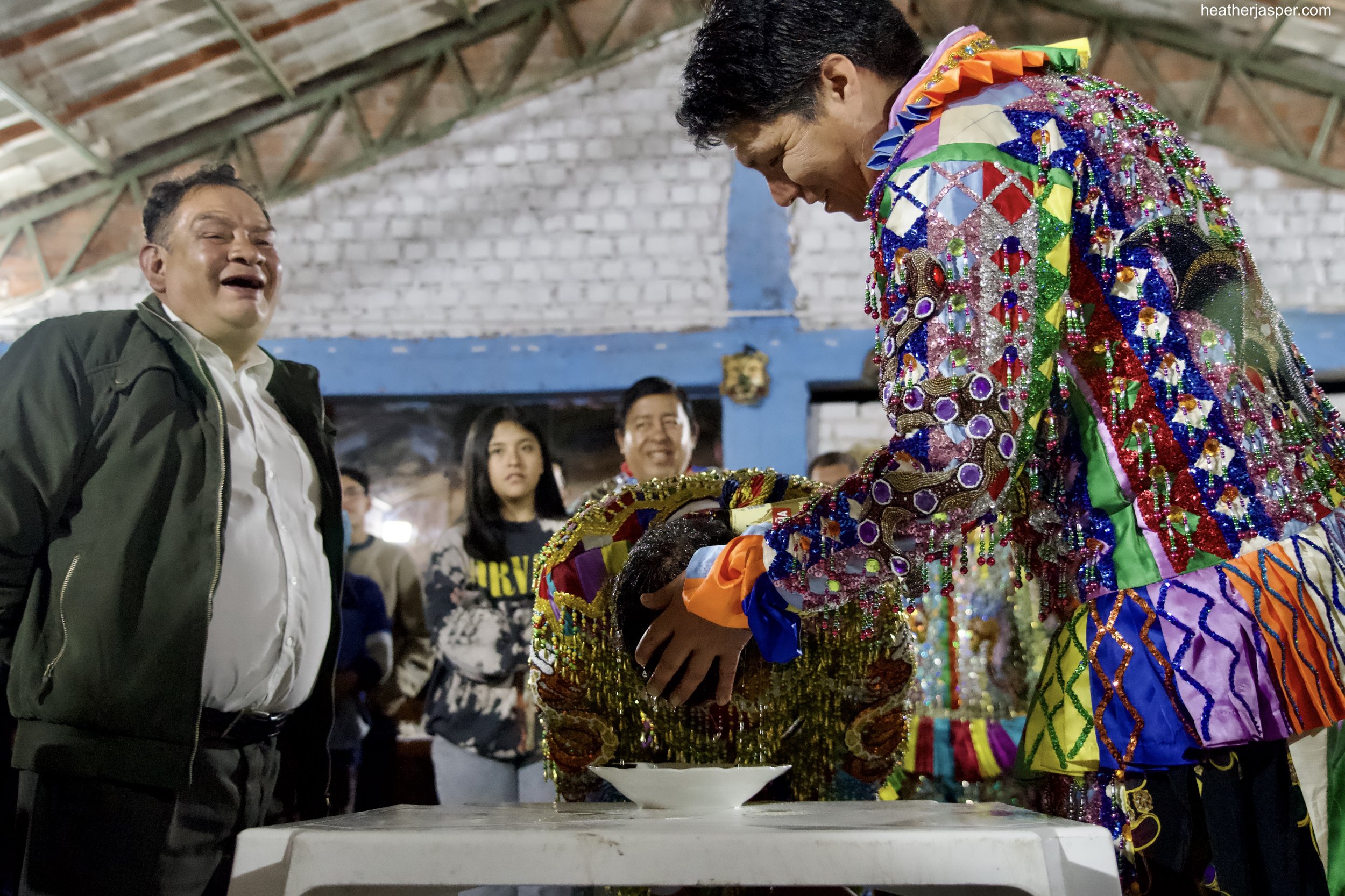
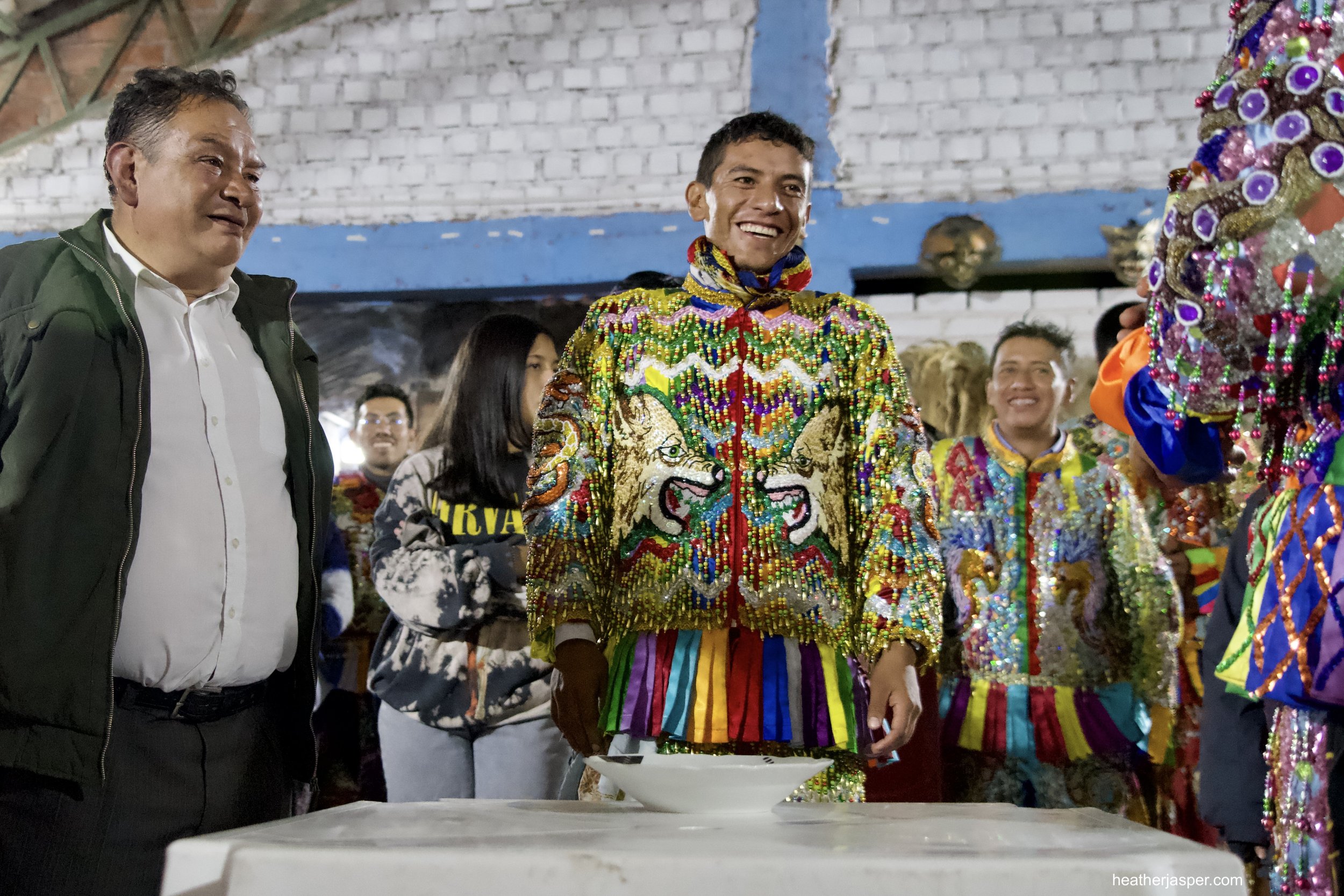
Tuesday, July 18
The last dance.
After another mass, and lunch, the Saqra perform one last dance in front of the church. They don’t wear masks or wigs for the dance and I imagine it was much easier to breathe. They are one of only three cuadrillas that are allowed to carry the Virgin of Carmen. After a group picture, they symbolically lifted the statue, without taking it anywhere.
After that performance, I went back to Cusco. One of the Saqras, Edgar Peralta, invited me to the very last event on the 22nd. It was in Cusco and not everybody attended, but I got to dance with them that time. I’m already looking forward to next year!
